
How Fast Do Catamarans Go?

Catamarans are known for their speed, and some vessels are fast enough to break world sailing speed records.
Catamarans can go between 15 and 30 knots, with the fastest achieving speeds well in excess of 60 knots. Sailing catamarans are sometimes twice as fast as monohulls and cut through the water with greater efficiency.
In this article, we’ll cover how fast catamarans can go based on factors such as size, sail area, and design category. Additionally, we’ll compare catamaran speeds to monohulls and trimarans and cover the reasons why multi-hull sailboats blow monohulls out of the water.
We sourced the information used in this article from sailing guides and hull speed calculations. Additionally, we sourced information directly from the manufacturers of common catamarans.
Table of contents

Catamaran Speed by Type
Catamaran design can be split into different categories. After all, different vessels are designed for different tasks, as speed isn’t always the most important design consideration.
The fastest type of catamaran is the ultralight racing catamaran. These vessels have extremely narrow hulls and a remarkable planing ability. They’re designed to pierce waves and often achieve speeds in excess of 45 knots or greater, depending on conditions.
The second fastest catamaran variety is the sport catamaran. Sport catamarans often include a fairly good level of creature comforts in the cabin. They’re technically hybrid designs, because they are envisioned as a combination between a racer and a cruiser. Sport catamarans can achieve 30 knots or greater.
Cruising catamarans are designed primarily for safety and comfort. They’re often used for long offshore passages, where speed is important, but comfort is king. Despite their accommodations, cruising catamarans can still achieve a respectable 15 to 20 knots of speed—sometimes 50% faster than similarly-equipped monohulls.
Why are Catamarans So Fast?
Catamarans are remarkable vessels that can achieve amazing speeds. As a result of their unconventional design, typical calculations for hull speed (such as those used for monohulls) don’t always apply.
But what makes catamarans so much faster than equivalent monohulls? The first and most obvious speedy design element are the hulls themselves.
Catamarans don’t have a deep keel or a centerboard. This is because the second hull acts as a stabilizing device, and it helps the vessel track straight. The lack of a keel reduces weight (and equally important). It also reduces drag.
Additionally, catamarans behave in strange ways while underway. The hulls have a tendency to rise out of the water further the faster they go. This further reduces drag and makes it easier for the vessel’s speed to climb once it starts to move.
One additional characteristic is how the vessel’s sails point relative to the wind. Catamarans keep their sails perpendicular to the wind, which allows them to harness energy more efficiently. This is because, at a perpendicular angle, less wind energy is lost by spillage over the edge of the sails.
Are Catamarans Faster than Monohulls?
Yes, catamarans are typically faster than monohulls. They’re also a lot more stable, as their spaced-out hulls provide better motion comfort in rough seas. Catamaran hulls are narrower than monohulls, which also reduces drag and increases speed.
Catamaran vs. Monohull Speeds
We know that catamarans are faster than monohulls in most situations. But how much faster are they? Here’s a table of hull speeds for monohulls, which is a useful reference when comparing speed. Hull speed isn’t the absolute fastest that a boat can go, but it’s a good practical estimate for understanding the hydrodynamic limitations of single-hull designs.
Hull speed calculations for catamarans are more complicated. This is because catamarans have a greater length-to-beam ratio. And due to their narrow hulls and open center, they aren’t affected by the same hydrodynamic drag forces that monohulls are limited by.
For example, a 55-foot monohull sailboat with a waterline length has a hull speed of 9.4 knots or 10.9 mph. Its actual speed could exceed that in the right conditions, but rarely by more than a few knots.
Compare that to an efficient 51-foot catamaran, which can easily achieve speeds in excess of 20 knots in reasonable winds. That’s more than double the hull speed of a monohull with a similar waterline length and proves that catamarans operate under a completely different set of rules.
Wave Piercing
One aspect of catamaran design that makes them superior speeders is their ability to pierce waves. Specially designed catamarans have minimal buoyancy at the bow, which allows them to slice through waves instead of going over them.
This increases the speed at which catamarans can cover the distance. Think about it—a boat going over a wave has to use more energy to reach the same destination, as the height of the wave almost makes the distance further.
It’s like walking over a hill or on flat ground—you’ll take more steps walking up and down the hill than in a straight flat line. Wave piercing catamarans enjoy better stability, and they ‘take the flat road’ to a greater extent than monohulls.
Do Catamarans Plane?
Planing is when a boat’s hull rises out of the water due to hydrodynamic lift. This increases speed and efficiency, as there’s less drag but sufficient contact for stability. It also reduces rolling, as the bow only contacts the taller portions of the waves.
Catamarans have planing characteristics, but they generally don’t plane as dramatically as powerboats. This is still worth noting, as catamarans are specifically designed to use the phenomenon of hydrodynamic lift to gain speed and efficiency.
You’ll visibly notice a catamaran’s hull rising out of the water as it increases in speed. Compare that to a displacement monohull design (such as a classical cruising sailboat with a deep keel), which won’t rise out of the water in any significant way.
Are Catamarans Faster than Trimarans?
A trimaran is a catamaran with an additional hull in the center. Trimarans are usually less common than catamarans, but they have some of the same design benefits as other multi-hull sailboats.
At first glance, it would seem logical that trimarans are slower than catamarans. After all, they have an extra hull in the center, which likely increases weight and drag. However, there are more important factors at play here.
Trimarans are almost universally faster than catamarans. This has to do with weight distribution. Trimarans center their weight over the middle hull, using the outer hulls primarily for stability. This allows them to reap the benefits of a catamaran while increasing the efficiency of the wind power it captures.
Fastest Catamarans
Catamarans are popular for racing. There are several world records held by catamarans and numerous production boats with especially impressive speed-to-size ratios. Here are a few of the fastest racing and production catamarans ever built.
Fastest Sailboat Ever—Vestas Sailrocket 2
The Vestas Sailrocket is a specialized racing boat designed only for speed. This incredible vessel is actually the fastest sailboat ever built—and no wonder it’s a catamaran. A monohull simply can’t achieve record-breaking speeds when put head-to-head with a lightweight multi-hull.
The vessel, which earned the world sailboat speed record in 2012, has a modest 150 to 235 square feet of sail. Nonetheless, it managed to achieve a remarkable top speed of 65.45 knots in only 25 knots of wind. That’s about 72 miles per hour—in a sailboat.
Soon, a team of Swiss engineers will release their own version designed to beat the 65-knot speed record. Their vessel, which is a hydrofoil, will attempt to hit an incredible target speed of about 80 knots.
Outremer Catamarans
But what about production catamarans? How do they stack up, and how fast can they go? French boat builder Outremer Catamarans builds some of the fastest production catamarans ever built. These are not specialty racing boats—in fact, they’re average-sized cruising catamarans.
Let’s use the larger Outremer 51 as an example. This high-end cruising cat is known for its almost outrageous speed capabilities. In ideal conditions, owners of the Outremer 51 have reported speeds exceeding 20 knots for extended periods.
That’s a production catamaran with speeds that rival 20th-century warships. With such a fast boat, the world’s oceans start to appear a lot smaller. Plus, the genius design of the Outremer 51 allows it to be crewed by just two people.
But how do Outremer catamarans achieve such high speeds? The secret is in precise engineering and hull design, along with a sail plan that’s perfectly catered to the vessel. The hulls are sleek and narrow and designed to cut through the water with minimal drag.
From the bow, the Outremer 51 hulls look paper-thin. They increase in width gradually, which eliminates areas of sudden drag. These narrow hulls evenly distribute the vessel’s 21,825-lb displacement. Its low-buoyancy bows reduce drag and blast through waves instead of riding over them.
Related Articles
Daniel Wade
I've personally had thousands of questions about sailing and sailboats over the years. As I learn and experience sailing, and the community, I share the answers that work and make sense to me, here on Life of Sailing.
by this author
Learn About Sailboats
Most Recent

What Does "Sailing By The Lee" Mean?
October 3, 2023

The Best Sailing Schools And Programs: Reviews & Ratings
September 26, 2023
Important Legal Info
Lifeofsailing.com is a participant in the Amazon Services LLC Associates Program, an affiliate advertising program designed to provide a means for sites to earn advertising fees by advertising and linking to Amazon. This site also participates in other affiliate programs and is compensated for referring traffic and business to these companies.
Similar Posts

Affordable Sailboats You Can Build at Home
September 13, 2023

Best Small Sailboat Ornaments
September 12, 2023

Discover the Magic of Hydrofoil Sailboats
December 11, 2023
Popular Posts

Best Liveaboard Catamaran Sailboats
December 28, 2023

Can a Novice Sail Around the World?
Elizabeth O'Malley
June 15, 2022

4 Best Electric Outboard Motors

How Long Did It Take The Vikings To Sail To England?

10 Best Sailboat Brands (And Why)
December 20, 2023

7 Best Places To Liveaboard A Sailboat
Get the best sailing content.
Top Rated Posts
© 2024 Life of Sailing Email: [email protected] Address: 11816 Inwood Rd #3024 Dallas, TX 75244 Disclaimer Privacy Policy
Yachting World
- Digital Edition

Catamaran cruising: everything you really need to know
- Nikki Henderson
- September 21, 2022
Expert skipper Nikki Henderson reveals what you really need to know before going bluewater catamaran cruising

It has become routine now for me to bookend the summer sailing season with a trip to the south of France for the biannual ‘Outremer Week’. This hugely popular event gathers 100-plus new Outremer catamaran owners for five days of training, both in the classroom and on the water, and three days of friendly racing. The goal is to educate future owners so they are as prepared as they possibly can be for their upcoming bluewater catamaran cruising plans.
It’s an intensive week of 12-hour days, with a lot of information to absorb. Unsurprisingly there are some discussions specific to bluewater catamaran cruising that come up repeatedly, and they apply to owners or prospective owners of all brands of bluewater multihull. Here are some of the most common questions people ask me:
What sails should I buy for a cruising catamaran?
Every day after sailing a new catamaran owner will come up to me and say, “Nikki, I’d love to take up some of your time and rack your brains about sail selection .”
To pitch my advice appropriately, I always ask some key questions about your catamaran cruising plans, and I’d encourage you to ask yourself the same.
What is your route plan?
Tradewind sailing will be predominantly downwind. So, focus your attention on downwind sails. A route involving more upwind requires more focus on headsails. Routes involving more upwind tend to be more coastal routes, or schedules with strict timings that will reduce the option to wait for downwind weather windows.
All bluewater sail plans will need storm options. Three reef points in the main is a must, or at the very least an extremely generous second reef. A storm headsail is another key component. Ideally it should be possible to hoist the storm jib up over the top of your furled foresail. In very big conditions, reliance on the thin furling line gets quite nerve-racking.

Catamaran cruising sail options range from symmetric spinnakers to Code sails for reaching performance. Photo: Nicolas Claris
How performance-orientated are you?
Performance catamarans are designed to sail angles downwind, ideally with an asymmetric spinnaker wardrobe. However, there is a cost to the incredible speeds that you can attain reaching on these boats: comfort. So, a key question is what is your attitude to speed versus comfort?
Performance-focused sailors are typically racing sailors, sailors without kids, or sailors who are in good physical shape. If you fit this category, then I’d advise purchasing one heavy weather flat-cut asymmetric sail that can withstand a squall up to 40 knots, and a rounder, lightweight sail that you can sail quite deeply in light to moderate conditions.
If you don’t have a taste or attention span for speed, then one heavy weather symmetric spinnaker (approximately up to 40 knots TWS) should be enough. This will allow you to sail a rhumbline course, and make night-time take-downs less of a worry because the kite will survive a squall.
For upwind, if you will enjoy fine tuning your boat to get that extra half a knot, your ideal option is a large genoa for drive in light to moderate conditions, and a small flat blade-shaped jib for heavier conditions – small enough that it does not need to be furled to an inch of its life to cope with a Force 6. If an inner forestay is an option, the latter could be a staysail which will keep the centre of effort low and reduce sideways drift.
For anyone less performance orientated in their catamaran cruising, the key for upwind sailing is a strong, flat jib that is not too big. Mark three reef points on the foot with sail tape. Keep an eye on how much it stretches and don’t be surprised if you need to change it every few years to avoid losing 5-10° of height.
Downwind the tradewind route logic applies: performance sailors should invest in asymmetric and non-performance sailors in symmetric spinnakers.

Left: taking videos and photos to remember key points of spinnaker handling technique. Photo: Robin Christol/Outremer
Who’s the crew?
At this point, the conversation often goes full circle. Sailors get enthusiastic about performance, and then remember that the kids will need home schooling, or that this is a retirement plan with potential health and fitness considerations.
Most sail changes will require more than one person, and conditions at the bow can be bouncy. Crew also have to be able to sleep, cook, and live on the boat while it is thrown about. If you are short-handed, you could compromise for downwind sailing by choosing furling sails.
A furling asymmetric such as a Code D can replace the ‘hoist and drop’ asymmetric. Or you can make the sock line on a symmetric long enough to route back to an electric winch.
Upwind sailors could compromise by returning to a single jib and consider altering routing to sail slightly off the wind but faster; optimising for VMG. If you have a staysail, ensure it could be furled and therefore left rigged at sea – though make time to speak to the yacht designer about the impact on stability that having two heavy furled sails up continuously could have on the boat.
How ‘eco’ and time-conscious will you be?
Do you care about motoring? Increasingly for many of us, awareness of climate change is a strong motivator to avoid using the engine. And will you be more focused on the destination or more interested in the journey?
If you are keen to avoid motoring, and you are free of time constraints such as fixed crew changeovers or grumpy children who need to stop and swim, then I’d recommend you invest in a Code 0. A Code 0 can double or even triple the boat speed: in 6 knots of wind, an Outremer will sail at 2-3 knots with a jib, but 5-6 knots with a Code 0. It’s a great sail and worth the investment, but first work out if you will use it. They often have low wind limits – around 15 AWS – which upwind could be 10 knots TWS.
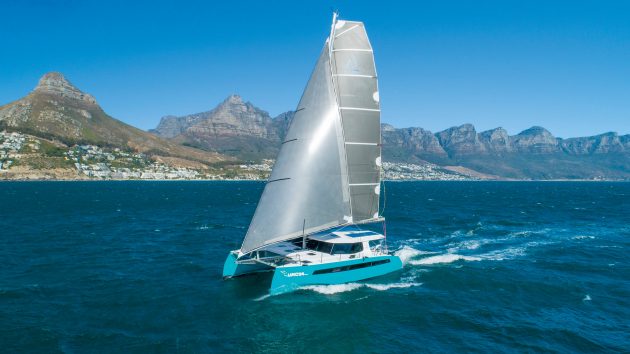
Code sails for reaching performance. Photo: Balance Catamarans
When do you reef a catamaran?
Many bluewater cruisers will reef down before dark every night. I’m not a huge fan of this as a rule; reefing should be straightforward enough to not be an intimidating manoeuvre in the dark.
But all new catamaran owners who are planning to go bluewater cruising are concerned about knowing when to reef, especially if they come from monohull sailing, as a catamaran communicates whether it is overpowered or not in a much more subtle way.
You want to conserve your equipment while sailing the boat effectively. So aim for the least amount of sail necessary to achieve your target speeds and angles. The best way to get to know this is to put reefs earlier or later each time and take note of whether it was beneficial or not. Over time you will know your boat very well.
Sailing favours guidelines over hard rules, but it’s good to have a starting point so here are some general ranges. For more cautious sailors or bigger sea states, use the more conservative side of the wind range:
- Reef 1 in at 15-20 knots TWS
- Reef 2 in at 20-25 knots TWS
- Reef 3 in at 25-30 knots TWS
Note that I am using true wind and not apparent. When sailing downwind it’s tempting to fly more sail because the apparent wind is so low. However, if you need to turn upwind – perhaps to reef – the 12 knots AWS in 20 knots TWS will quickly become closer to 25 knots AWS.
Reliance on numbers is great until the wind instruments stop working (it will happen at some point). Remember your RYA Competent Crew course and use the descriptions of the sea surface at various Beaufort Scale forces to identify how windy it is.

How to share roles is a frequent question among couples planning a catamaran cruising adventure. Photo: Robin Christol/Outremer
There are other telltale signs that the boat gives if she needs a reef. Although hulls don’t fly unless you are at the performance level of a Gunboat or similar, you may feel the windward hull just slightly lifting. This is a sign that a reef might be needed. Another is if the bows are diving down when you are sailing downwind. Heel angle can be most obviously sensed while lying down.
The main hindrance to learning when to reef – and when not – is a hesitation to perform the manoeuvre. If taking a reef feels arduous, people avoid it. I admit I can find myself in this camp: I have to remind myself that it’s a win/win, either it’s the right decision and the boat sails better, or it’s wrong and I’ve learnt from it.
The key to reefing is to practice. Taking a reef should be possible to do in under two minutes, especially if you have fast electric winches.
It’s handy to have the option to reef downwind, especially if you’re tradewind sailing. Fully battened mainsails struggle to come down so set up downhaul lines from each reef tack point. Run them through the reefing point on the sail and through the reefing points on each side of the mast so the sail is pulled down in line with the track. Watch out for chafe on the back of the main if reefing a lot downwind, and add spreader patches to your sail where applicable. Centring the traveller during the manoeuvre can help, but keep your eyes looking up and check nothing is getting caught.
Also practice solo reefing ; aside from the possibility of needing to reef alone, this also builds a big picture understanding of the whole manoeuvre. It means reefs are put in faster because anyone can work anywhere.

Catamaran designs at the ARC start cover a full spectrum of performance. Photo: James Mitchell/WCC
How can couples close the ‘experience gap’?
The argument for both halves of a cruising partnership being competent on board has always been that if something happens to the skipper, their partner will know how to safely get to a port of refuge.
However, most people assume that this will simply never happen to them, or they practise parking a couple of times, pick a fender out the water – then never think about it again. The difficulty with starting a bluewater sailing project with a large experience gap is that it tends to widen over time. Each day as leader will be a learning opportunity for the skipper.
They will grow in competence and confidence. Meanwhile, the first mate’s skills will suffer. They will get used to following instructions, their confidence will decrease, and a habit of helplessness will develop. Then, when an emergency does occur, they’ll be in a worse position to take charge than when they started.
It’s critical that couples approach buying a bluewater catamaran for cruising as a team exercise from day one – for both safety and enjoyment. Ideas on how to level up your partnership include:
- Rotate roles each day, or follow a rota. Who drives the boat into dock? Who makes the navigation calls (do this passage by passage)? Who does the safety checks? Who runs the watermaker?
- Divide the boat – maintain one hull each and share the saloon. This forces you to both understand how everything works from bilge pumps and engines to steering gear and gear storage.
- Take a coach with you for the first few crossings. It can be hard to learn to sail from your spouse. A professional coach will force you into a learning environment. They will also create space for the less experienced to be able to take charge in a safe way.
- Sail the boat without your partner. Creating a scenario where your leadership role feels natural is the optimum way to practice skippering. So, invite a few friends who don’t know as much about sailing as you, and go for a low pressure cruise. It’s a brilliant confidence builder, and a chance to develop your own style and your own voice on board.

Do you have the skills for a faster cat? Photo: Rick Tomlinson
Production or performance cruising catamaran?
A common view is that you pay more for less when you buy a performance catamaran: fewer creature comforts, less living space, fewer berths, bathrooms, and instead get narrow hulls and sparse design. So, is the big price tag worth the upgrade in performance?
If you are lured by the comfort of a production catamaran, but plan to sail intensively around the world for the next five years, it might not actually be the most comfortable option. No dishwasher or air conditioning is going to make a boat feel safer in a storm. Conversely, why buy a performance catamaran if you plan to leave the boat at the dock for 10 months a year?
Ask yourself if you have the skills to harness the performance of a faster catamaran? And if not, how prepared are you to invest time into learning how to use the boat to her full potential?
A common justification for buying a performance catamaran is that it can outrun bad weather and therefore is safer. But you cannot take advantage of that option if you sail everywhere with three reefs in the main because you are nervous of the boat’s power.
Similarly, the power of performance catamarans comes in part from how light they are. If you load the boat with extras – personal gear, kitchen appliances, heating, aircon – you will quickly reduce a lot of the speed and safety advantages you’re paying for.
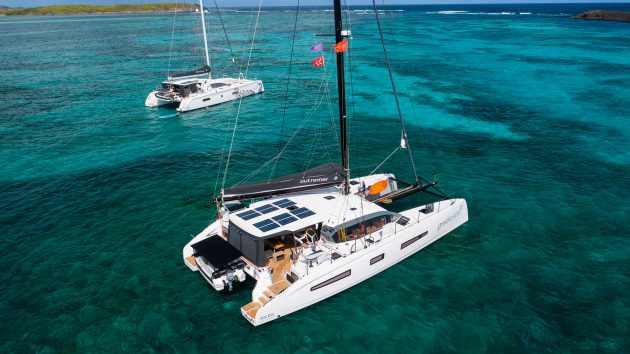
The dream – catamaran cruising in paradise! Photo: Robin Christol/Outremer
How to handle heavy weather in a cat?
A popular heavy weather strategy is avoidance: account for global weather patterns when planning your passages to ensure you sail during the more favourable months; invest in a good satellite connection to download accurate forecasts so you can see bad weather coming; use your boat speed to position yourself out of the predicted storm track; be flexible with departure windows and leave at an optimum time.
However, do not misinterpret avoidance of heavy weather as a safety net. With weather systems becoming increasingly extreme and unpredictable (see page 38), this risk management strategy is becoming less and less dependable.
- Develop scenario plans for the type of boat you have so that you don’t have to start with a blank sheet of paper as a storm approaches.
- In all scenarios, on all boats, avoid 90° wind and waves. Your boat is at its least stable in these conditions. Sail with the weather forward or aft of the beam.
- Keep an eye on heel angle. Reduce sail if you start to see any more than 5° or so, unless you have a catamaran that is designed to lift a hull. Lower the centre of effort by reducing sail, starting with the main.
- Set up and practice how to reef downwind in case the weather comes in more quickly than you were expecting.
- If you can’t sail as fast as the waves, consider trailing warps to slow you down and help with steerage. You should aim to keep the speed relatively high. The key is to reduce the erratic surfing which drops the bows into green-water troughs. I prefer warps to drogues where possible because we are more familiar with them. Unless you practice using a drogue regularly, you will likely need to read the instructions when you get it out, which isn’t ideal in an emergency.
- If waves are breaking over your stern, consider turning into the seaway and holding steady. In a performance cat, you can drop the windward daggerboard, lift the leeward board, and pinch into the wind. In a production cat with no daggerboards, this will be difficult. Running the leeward engine might help you keep your bows into the wind. Watch that there is no back flow of water into the exhaust.
- Avoid lee shores at all costs, sea room downwind is key.

Outremer Week crews receiving coaching on sail handling. Photo: Robin Christol/Outremer
When should we go?
How long should you wait after buying a boat before heading out on your first bluewater passage? Whether you spend £100,000 or £1,000,000 on your boat, it’s likely to need some fine tuning. I’ve never heard of a new boat that was perfect.
Some yards will cover the initial issues as part of the warranty, so staying close to the yard is a good idea within that period. Even if you don’t have a warranty, proximity to the yard can help you access parts, boat builders and people who understand how your boat has been constructed.
The flip side is that you want to get going, and experience all the freedoms of your new yacht! Some serious bluewater sailing is also needed to test some of the systems.
Give yourself two to six months before you head out on the first crossing. This is enough to test the boat out, but not so long that ‘passage-anxiety’ builds up and you never actually leave.
Do not treat the first few months as a holiday. This is commissioning, and it is the last stage of the build. Test the boat as rigorously as you can before you leave the proximity of the yard. Complete a couple of substantial offshore passages of 48 hours or more to test the systems. Run everything, including the watermaker. Fly all the sails you own. Sail in fruity conditions relative to your ability (Force 6-8 as a guideline) to see how the boat (and you) cope.
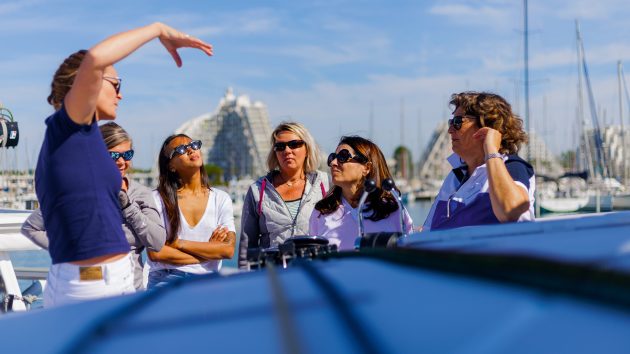
Women’s only coaching groups for catamaran cruising sailors help bridge the ‘experience gap’. Photo: Robin Christol/Outremer
Get some experienced people on board to bolster the crew for the early days. The ideal is to hire a professional coach, as this will make pushing the boat much safer and more fun for you.
Do some training ; the MCA AEC four-day engine course is a really useful opportunity to explore the parts of the engine you are normally too nervous to. A safety at sea course is worth its weight in gold. Use this to put together a safety kit that you feel confident in and that is appropriate for your cruising plans. A basic maintenance course can also be helpful, ideally one that covers beginners’ sail repair, rigging, splicing, and electrics.
Ask other sailors for a good tools and spares inventory list. On top of the standard parts that the equipment manuals recommend, current and previous owners of your boat model will have a plethora of advice.
Confident to cast off
Preparation for any type of bluewater sailing can feel daunting. Training courses and cruisers’ seminars like Outremer Week are a little paradoxical – learning how to insert an IV line in a morning medical session, then toasting your upcoming lifelong dream in the evening. It’s a bit like watching the flight safety demonstration before taking off on a once in a lifetime holiday.
The reality is that bluewater sailing is the most incredible opportunity in the world to be both savoured, and treated with an appropriate level of respect. But the most rewarding thing is to see sailors’s enthusiasm grow as they learn. With the opportunity to make mistakes and ask questions in a supportive environment, everyone develops their own skippering style and mantras.
Knowledge nurtures confidence, and confidence breeds positivity – which all contribute to a safe, and successful bluewater catamaran cruising experience. If in doubt, ask!
If you enjoyed this….
Yachting World is the world’s leading magazine for bluewater cruisers and offshore sailors. Every month we have inspirational adventures and practical features to help you realise your sailing dreams. Build your knowledge with a subscription delivered to your door. See our latest offers and save at least 30% off the cover price.

The Cruising Catamaran Performance Debate
Which Cruising Catamaran Performs Better…And Does It Really Matter?
A client recently alerted us to a YouTube video posted by a catamaran dealer that is blatantly misleading and inaccurate. If you listen to this dealer, every catamaran manufacturer, other than the Fountaine Pajot brand, is slow, unsafe, not seaworthy and not fit to be a cruising catamaran.
While we agree that the Fountaine Pajot brand is an excellent product (we sell a lot of them), it certainly is not the ONLY good cruising catamaran in the world. There are many products available that are as good and like so many things, when it comes to choosing a cruising boat, it often boils down to personal preference, especially in this category of cruising catamaran.
2022 UPDATE: You will still find some great information below regarding cruising catamarans, especially if you are in the market to buy one. But lots has happened in the Performance Cruising Catamarans category since this post was written a few years ago, like Catana is back in the game with tons of innovation and a fresh new look. In addition to reading this article, be sure to read:
- 2022 Performance Cruising Catamaran Comparison
- We Bought a Performance Cruiser Catana OC 50
Cruising Catamarans Performance
The dealer in the video our client mentioned to us specifically focused on the superior performance of the Fountaine Pajot compared to some of the competing brands in the cruising category like Leopard Catamarans , Nautitech Catamarans , Bali Catamarans , Lagoon Catamarans , and Catana Catamarans .
The fact is that there is very little difference in speed between similarly lengthed cats in this category. All these catamarans are displacement hulls and they pretty much sail to hull speed with intermittent surfing. Therefore, when sailed efficiently, these cats should have very similar performance.
We hear terms such as power-to-weight ratio (sail area to displacement) bandied about a lot by yacht salespeople of the various boat brands as an indicator of performance. While this is definitely a factor and certainly has an effect on acceleration and light wind performance, it is not the only factor. Some catamaran brands will be faster around the cans in a regatta while others will be better when making long passages.
What one should also consider is that when cruising is that a catamaran’s performance will be dictated by sea state as well as wind speed and direction. In light winds, there will probably be a screecher or asymmetrical spinnaker deployed and in strong winds the sails will probably be reefed. This means that in cruising mode, most sail plans are optimized to the conditions. Therefore, when evaluating a cruising catamaran’s performance, there are many factors to be taken into consideration. This is not a simple cut-and-dried argument.
Catamaran Performance Factors & Calculations
To display the different factors and calculations which are relevant when it comes to catamaran performance, we went to Multihull Dynamics for data and pulled some numbers on the two boats most mentioned in this dealer’s video, namely Lagoon and Fountaine Pajot. Here is what we found on the Multihull Dynamics site:
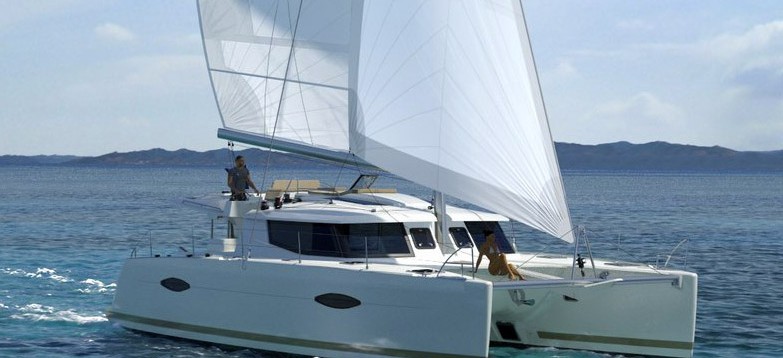
- Base Speed – An empirically derived indicator of the speed a given boat could average over a 24-hour period (best days run) under a variety of conditions. Here again the Lagoon had better numbers with 9.82 knots versus 9.46 knots for the FP Helia 44 – this explains why the Lagoons are so successful on the long Ocean races like the ARC
- KSP – Kelsail Sailing Performance number is a measure of relative speed potential of a boat. It takes into consideration Sail area, Displacement and length at Waterline. The higher the number the higher the speed predicted for the boat. Here the FP Helia 44 at 6.06 had better numbers than the Lagoon 450 which comes in at 6.02 – the Helia is the lighter boat.
- TR – Texel Rating provides a handicap system for widely varying boats sailing together in a race. The formula is essentially the inverse of the Base Speed formula with constants applied to make the results useful. The Texel rating system permits the calculation of time to sail a given distance. Thus a boat with a higher TR can be expected to take longer from start to finish than a boat with a lower TR. The Lagoon 450 came in at 141 versus the FP Helia 44 at 144.
- Interestingly the Leopard 45 came in with better numbers than the Lagoon and the FP as follows: Bruce number – 1.25; Base Speed 10.65; KSP 7.68 and TR 122.
- The numbers for Antares PDQ44 are very similar to the Helia 44 and Lagoon 450.
- Unfortunately there was no data available for the Bali or current Nautitech designs.
*Disclaimer: All data quoted here was derived from Multihull Dynamics. Catamaran Guru offers the details in good faith and does not guarantee or warrant this data.

>>Click on the pictures above or go to Multihull Dynamics website for a full explanation of the graphs.
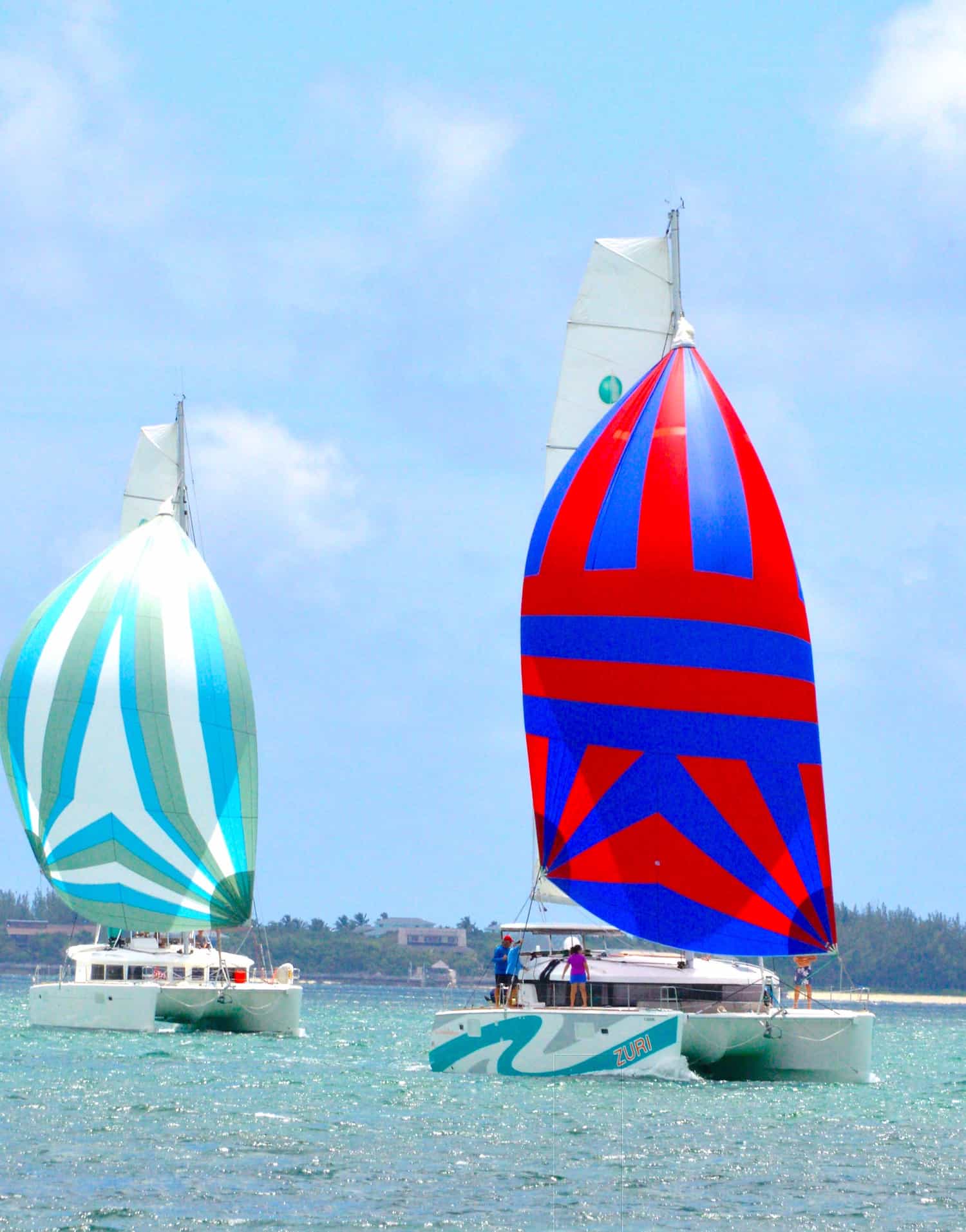
While the Fountaine Pajot dealer touts the superior performance of their brand, actual data shows that the Lagoon brand has won more ARC cruising rallies than any other brand of cruising catamaran. These are hardly the statistics of “just a charter catamaran that sails in 50-mile circles and lacks performance”, as is claimed by this dealer. As an example, check out these ARC and ARC+ rally results in which Lagoon consistently features well:
- Spirit, Lagoon 450 Flybridge – 1st Multihull
- Cat’Leya, Lagoon 52 Sportop – 2nd Multihull
- Sea to Sky, Lagoon 450 – 3rd Multihull
- Dreamcatcher, Lagoon 52 – 4th Multihull
- Sumore, Lagoon 570 – 5th Multihull
- Opptur, Lagoon 500 – 6th Multihull
- Lea, Lagoon 52 – 10th Multihull
- 2015: 380 Havhunden, first in ARC+ Multihulls Division in corrected time
- 2013: 620 Enigma, first in ARC+ Multihulls Division in corrected time
- 2012: 560 Feliz, first in ARC Multihulls Division in real time
- 2011: 560 Blue Ocean, first in ARC Multihulls Division in corrected time & third in ARC Multihulls Division in real time
- 2010: 620 Lady Boubou, first in ARC Multihulls Division & 11th overall in real time
This is NOT an indication of how good or bad one boat over another is, but rather an indication of dealer bias ! We are sure this debate will continue but it is our considered opinion that one should look at the overall boat and not be blinded by issues that might or might not be manufactured by over-zealous sales people. As we have said before, it often comes down to personal preference.
Performance Cruising Catamarans

High-performance cruising cats are becoming more popular and there are a lot more on the market than even just five years ago, but it’s not for everyone, especially if you are not a skilled sailor. Daggerboards and bigger rigs require more skill and are not for the average sailor.
We’ve been racing on and off for years on different catamarans and we’ve always had great fun sailing and surfing at speeds of 15+ knots. But as fun as that is, it can be a white knuckled, wild ride in bad conditions and can leave the crew tired and tense because one has to really pay attention. At these speeds any mistake could be catastrophic since there is so much load on the rig. So, make no mistake, sailing fast in less than good conditions is hard work, particularly when you sail shorthanded.
When only the two of us cruise along on our own boat, we really appreciate the pleasure of gliding through the water at 8-10 knots, relaxed and comfortable. Would we love to be able to coast along at a good clip in very light winds? Sure, we would love to own an Outremer or Catana! But that type of performance cat will cost us probably twice the price of a regular cruising catamaran. Is it worth the money for the average cruiser? Debatable.
With the advancement of technology, more people will eventually be able to sail these performance cats skillfully and will be able to afford them as costs come down but until such time, we believe that the average sailor can very happily sail at fair speed toward their destination, safely and relaxed on an average cruising catamaran as discussed above. The fact is, one or two knots of speed, which is what the difference between these cruising cats MIGHT be, will not make or break your passage.
2020 Update: At the time of writing this article, we owned a Lagoon 450 SporTop , not a rocket ship by any means, but a fair sailing boat. We now own a Bali 5.4 catamaran that is significantly lighter and faster in general as a cruising catamaran and we love the extra speed. However, I have to say that this boat is less comfortable underway than the heavier Lagoon. It is more buoyant, a little more skittish and tend to surf much quicker. So one has to pay more attention in more vigorous conditions. It can be tiring on a long passage, but it sure is fun!
Stephen says, “I personally like the Bali because it is a more lively boat and sails very well – when we picked our boat up in France it was completely empty and bobbed like a cork which we were not used to because our Lagoon was a much heavier boat. Since we have now equipped her with all the world cruising equipment as well as big dinghy, etc. she is a little heavier and a lot more comfortable. It is a fact that weight affects performance – the lighter the boat the better performance one can expect. We flew across the Atlantic when we were nice and light but the boat still performs well now that she is at full cruising weight”.
The Bottom Line
So, to conclude this argument, dealers are always somewhat biased about the products that they represent. Manufacturers go to great lengths and spend a lot of money training their dealer networks to be knowledgeable about their products and represent them well with the buying public. They rightfully expect loyalty from their dealers and expect them to present a positive image to the consumer. We all get that. However, when dealers trash and misrepresent their competition with manufactured issues in order to sell their own products, they do a disservice to the buying public and the industry in general.
We want to hear what you have to say! Tell us about performance on your cruising catamaran and also check out our article on why we chose our own catamaran .
Reminder! Check out these fresh updates on performance catamarans:
Contact us if you have any questions regarding catamarans, Fractional Yacht Ownership or our Charter Management Programs .
Estelle Cockcroft
Join our community.
Get the latest on catamaran news, sailing events, buying and selling tips, community happenings, webinars & seminars, and much more!
13 thoughts on “The Cruising Catamaran Performance Debate”
Thanks for a sober writing. I am the owner of the Lagoon 380 Hahunden, and agter with you. I have a spreadsheet with 75 different cruising cat models and the elapsed times in 29 races, and there is not much difference in perforfance. Can send it if uou want. Greetings.
I would like to see that spreadsheet for sure!
I own a Venezia 42′ and if my boat is part of your spreadsheet I would especially love to see it! Could you please send me a copy even if it’s not on there?
To discuss performance and Lagoon or FP in the same sentence is crass. These are not performance Catamarans, purely floating caravans. They have no pretence to performance only cruising capacity, any indicator of performance is purely coincidental.
I own a Privilege 495 and wouldn’t trade it for any other cat.
Hi Jack, I am interested in the performance of your boat. I understand that mini keels decrease performance considerably. Thanks Di
I would like to point out that the data that you use from Multihull Dynamics is completely flawed due to an inaccurate displacement value. Multihull Dynamcis inexplicably lists the Helia at 14 tons, while Fountaine Pajot and your site list the boat at 10.8 tons. This is quite a big difference and skews all the metrics calculated by the site. The Helia is obviously a lighter boat and performance in catamarans starts with weight, so it is undoubted that the Helia will be more lively than the Lagoon. I totally get your point that that does not mean that it will be more comfortable. Second, on the ARC data front: my father sailed twice across the same route in the Atlantic in the last 10 years and I’m very familiar with the conditions. The trade winds there tend to be rather lively and in those conditions weight will matter less. I would expect to see different results in lighter conditions. All that said, the dealer in question is undoubtedly doing their marketing with an agenda.
Hi Ivan, thanks for your input regarding the Helia 44 weight discrepancy. We are aware of this and it holds good for both vessels. You will note that the Helia 44 shows a displacement UNLOADED of 10.8T while the Lagoon 450 shows an UNLOADED displacement of 15T. In order to get accurate performance numbers we assume that Multihull Dynamics have used a number that represents the LOADED weight of both vessels. This means that for the Helia 44 it went from 10.8T to 14.1T (an increase of 3.3T) and in the case of the Lagoon 450, it went from 15T to 20T (an increase of 5T), since it a larger boat overall with more capacity. Based on the above I think we can safely say that we are looking at a fair and accurate comparison. Your input is really appreciated and we are always open to comment and correction to ensure the information we put on the site is accurate and fair.
Thank you for the clarification on displacement.I do see that they have bumped up the Lagoon 450 displacement as well so that’s a fair comparison. I wish they published that clearly because it changes numbers quite a bit as all manufacturers typically post the weight of their boats unloaded.It looks like the Lagoon makes up for the greater weight with a bigger sail area, so that will probably add up to greater effort needed to manage those larger sails but with modern systems, all these things can be managed. Thank you for the clarification and your insight overall.
I think the misconception people have about “performance” catamarans, is that the reason sailors gravitate towards them is not their speed, it is their ability to sail in light air. If you have a catamaran that will sail at windspeed or close to it in 5-8 knots, you’ll actually sail instead of cranking up the diesel. Those true performance catamarans capable of this that also have all the creature comforts of the Helia/Elba45 or Lagoon450/46, are 50+ feet long, and twice the price unfortunately.
You are so right! Well said.
Good article! For me, the weight includes all the stuff you are taking on a month long (or longer) journey (Full fuel +extra cans, 2 sups, dive tanks and compressor, 4 cases of wine…). My opinion is that the performance cats hull design suffers more when loaded to the gills. Ride quality is also very important and is often glossed over by the performance cat advocates.
You are completely right and that was part of strategy when we raced across the Atlantic with the ARC rally. We knew that all the cats would be loaded to the max for the crossing which no doubt makes them less efficient sailing cats. Fortunately on the Bali 5.4 the buoyancy calculations is for a fully spec’d and loaded boat. So we left and sailed like a bat out of hell right off the bat and we were sailing very efficiently, making 200+ NM distances every day. We figured that as the other cats start using their fuel, water and supplies, they would sail a little more efficiently but by then we would be well ahead of the pack, and it worked. We surprised even the very fast performance cats and all the while eight of us onboard were sailing in complete comfort and were eating gourmet meals three times a day! LOL- Of course the TS’s beat us but it is hardly a fair fight. LOL
Leave a Comment Cancel Reply
Your email address will not be published. Required fields are marked *
Save my name, email, and website in this browser for the next time I comment.
Recent Posts

Top 10 Reasons to Sell (and Sail) Your Catamaran in Annapolis, MD
We have a new home in Annapolis! The office is located in Annapolis, Maryland
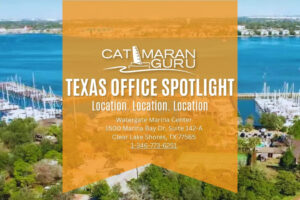
Top 10 Reasons to Sell (and Sail) Your Catamaran in Texas
Our Texas Office is located in the Watergate Marina Center in Clear Lake Shores,
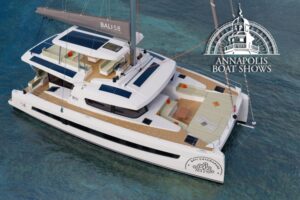
Annapolis Boat Show 2024
Meet with our team! Want to learn more about the Bali and Catana

Exploring the Catana OC 50 Catamaran: A Comprehensive Overview
The Catana OC 50 Catamaran, the latest addition to the Catana Ocean Class series,

For more than 30 years, we have been a part of the catamaran community and created Catamaran Guru™ to encourage and educate all the aspiring sailing out there. We understand the dream of traveling the world by catamaran and created a one-stop-shop to make that dream a reality for you.

- Stephen & Estelle
- Testimonials
Get Started
- Yacht Sales
- Used Yachts
- Charter Management
- Boat as Business Programs
- Seminars & Events

How Fast Do Catamarans Go? 5 Examples (With Pictures)
A catamaran is generally more balanced on the water and can be faster than a multi-hull vessel.
Unless you compare them to foiling monohulls like the new America’s Cup boats that sail at over 50 knots, they are not recreational vessels.
In this article, we will look at how fast each type of catamaran will go.
Table of Contents
Here are the numbers before we dive into the details:
| Sport Catamarans | 30 knots |
| Cruising Catamarans | 15 knots |
| Racing Catamarans | 45 knots |
| Power Cruising Catamarans | 70 knots |
| Swath Catamarans | 30 knots |
Average Speed For Sailing Catamarans
Catamarans can vary in size from 14 ft to over 100 ft. Catamarans can come in a wide variety of design types.
Sailing Catamarans have been attempting to make advancements over their mono-hulled counterparts.
These advancements include:
- Foils that assist with lifting the vessel out of the water.
- Stability advancements.
- Racers that can maintain their speed while out in the ocean.
3 Different Types of Sailing Catamarans:
1) sport catamarans.

One type of sailing catamaran is a sport catamaran, which is otherwise known as recreational. These are typically supposed to have a small crew and launch and land on beaches.
Sport catamarans do not normally have living quarters and are ideal for day trips. Resorts or other rental services often use these.
These can also be used for racing.
Sport vessels have been known to travel over 30 knots but can speed over 40 knots in the proper conditions.
2) Cruising Catamarans

Another type of sailing catamaran is a cruising catamaran. These often come with complete living accommodations, so they sacrifice speed over their sportier counterparts.
They can average between 9 and 10 knots, depending on the conditions. The top speed is typically around 15 knots.
It would be best if you were careful with catamarans that have living quarters. The more you weigh it down, the less speed you will have.
3) Racing Catamarans

The final type of sailing catamaran is an ocean racing catamaran.
These boats are large and can reach over 100 feet in length.
The top speed of this type of catamaran is around 45 knots.
Because of the prize money for entering these in races, much research goes into their advancement.
Average Speed Of Power Catamarans
Catamarans with power motors fill a different type of boating category.
These are commonly used when speed and smoothness are favored over space or capacity.
Because of their stability, catamarans are good vessels for combating seasickness as well as transportation. We have a separate article here with all you should know about catamarans and (how to overcome) seasickness .
On a commercial level, these can be used for ferries for both people and vehicles. They are used for short term travel, often to or from islands.
Like sailing catamarans, there are a few types of power catamarans.
1) Power Cruising Catamarans

Similar to sailing cruising catamarans, they also have power cruising catamarans. These also have living quarters and are stable while out on the water. The speed of these vessels highly depends on the motors equipped and the size of the boat itself.
Like passenger transport or ferries, catamarans have a high speed of about 40 to 70 miles per hour.
These are made to travel at great speeds to allow their commuters the shortest possible ride to their destination.
The military also utilizes power catamarans. They use power catamarans to transport military cargo. These ships are ideal because of their speed, holding capacity, and ability to venture into shallow ports.
2) Swath Catamarans

They also have small-waterplane-area twin-hull vessels. These are called SWATHs.
These differ from the average catamaran because they also have submarine-like hulls that stay completely under the water.
Due to the hulls being submerged, they are not normally affected by waves. These are used most often in the ocean as research vessels. They can also be used for certain types of yachts. Because of their stability, they are good vessels for furniture that will not require as much securing.
These often travel between 20 and 30 knots.
Some catamarans are designed for wave piercing. These are made to pierce through waves rather than sail over them, causing them to be faster. These can be used as passenger ferries, yachts, and military vessels as well.
3) Whitewater Catamarans

There are also recreational catamarans made for whitewater travel. These are sometimes called “cata-rafts.”
They are made using two inflatable hulls connected with a scaffold. These are lightweight and perfect for whitewater sports.
They are even able to be packed away in a backpack. They can take up to 20 minutes to assemble, including inflation.
They have high speeds on white water rivers and can be most compared to a canoe, kayak, whitewater raft, or other white water vessels.
Performance Characteristics Of Catamarans
Catamarans require four times the power to double their speed. A mono-hull vessel, however, would require eight times the power to double their speed.
This is because a Catamaran has less resistance in the water.
This is also good for conserving and using less energy.
Catamarans are also more stable in the water. This stability is effective at resisting heeling or capsizing. A multi-hull vessel would require four times the force to capsize as a similar-sized mono-hull vessel.
The general sailing in a catamaran is smoother and allows for activities that are not always possible on a mono-hull sailboat.
Are Catamarans Faster than Mono-Hull Vessels?
Because catamarans have less water resistance, they are generally faster than mono-hull vessels.
This is because their hulls are smaller, which means they have a smaller bow wave to fight.
A bow wave is a wave created by the displacement of water by the bow of a ship. After a certain speed, a boat has to start hauling itself over its own bow wave.
The larger hull a ship has, the larger its bow wave will be and the more power required to fight it.
Catamarans have two small and narrow hulls, so they do not have much of an issue with their bow wave. This is one reason they are usually faster than a similar-sized mono-hull vessel.
Catamarans can be between 20-30 percent faster than their monohull counterparts.
Issues with catamarans over mono-hulls are that they can take more time to turn.
How Is The Speed Measured?
Boats commonly measure speed using GPS tracking devices to measure distance traveled. Speed while sailing is measured in knots. A knot is one nautical mile per hour, which equals about 1.15 miles per hour.
How Fast Are Catamarans Compared To Other Boat Types?
- Sailing catamarans typically average about 10 knots.
- Pontoon boats average about 20 mph.
- A powerboat cruiser can average anywhere between 30 and 50 mph.
- Cigarette boats can even reach close to 90 mph in the proper conditions.
- Sailboats average between 6 and 12 mph depending on wind conditions. This includes mono-hull between 6 to 8 mph and catamarans and trimarans between 9 and 10mph
Two different factors can determine the speed of sailing ships:
1) The hull type as listed above.
Different hulls rest in the water more or less than other types. The less of the hull that is underwater, the faster it can go.
This is because the less of the hull in the water, the less drag created while sailing.
2) The length of the boat
The longer the boat, the faster it can go. Every boat has a maximum hull speed that cannot be exceeded unless the boat can plane on the water’s surface or be lifted on hydrofoils. For most boats, the longer the boat, the higher the maximum hull speed is.
Speed Vs. Comfort Considerations For Catamarans
If you are looking for a catamaran, you have a lot of options.
You can choose to prioritize speed or comfort.
After deciding to purchase a catamaran, the type of catamaran you should look at depends on where and what you are using it for.
You will want to make sure that you look at what type of water you will be traveling in, how many people you are traveling with on average, and what type of speed you hope to achieve.
One thing you will want to keep in mind before the purchase of a catamaran is storage. If you intend to store your boat in a marina, you are often charged for two slips due to the beam, or width, of a catamaran versus the standard mono-hull vessel.
Catamarans can be beneficial for those who get seasick because they offer a steadier ride and the ability to have more open air space. Because the living quarters are not inside the hull and under the water’s surface, you have more windows and visibility.
Both sailing and power catamarans are viable options. Also, sailing catamarans can come with back-up power engines for low winds or situations such as docking in a marina.
Catamarans that have twin engines can offer more control and precision than those on a mono-hull vessel. This is good for tight and busy areas or navigating marinas.
Overall, there are plenty of options for you, and they offer many benefits over their mono-hull counterparts.
Click to share...
Catamarans: A Complete Guide to Multihull Boats
Catamarans have been a part of sailing history for centuries and continue to be popular for their stability, spaciousness, and performance. Developed by various cultures around the world, the principles of catamaran design have evolved over time to become optimized for both pleasure cruising and racing. This complete guide will help you understand the essentials of catamarans, their unique characteristics, and how to choose the right one for your needs.

From the basic concepts of multihull design, performance, and handling, we will explore the advantages and benefits of a catamaran in terms of safety and comfort on board.
Along the way, we will discuss maintenance considerations, distinctive catamaran brands and models, and how a catamaran lifestyle can compare to more traditional sailing options .
Finally, we will provide learning resources and frequently asked questions tailored to both seasoned sailors and newcomers to the world of catamarans.
Key Takeaways
- Catamarans are known for their stability, spaciousness, and performance
- This guide covers aspects like design, handling, safety, and choosing the right catamaran
- Resources and frequently asked questions provide additional insights for potential catamaran owners
Understanding Catamarans
Design Characteristics
Catamarans are known for their unique design, which features two parallel hulls connected by a deck. This design provides several advantages over traditional monohull boats, such as stability and speed.
With their wide beam, catamarans have a reduced risk of capsizing and can access shallow waters due to their shallow drafts 1 .
One of the notable aspects of a catamaran is its twin hulls, which offer increased living space and comfort compared to a monohull. Additionally, catamarans are often favored by recreational and competitive sailors for their excellent maneuverability 2 .
The materials used for constructing catamarans range from wood to fiberglass, and even aluminum for high-performance vessels. Aluminum catamarans are known for their strength, lightweight structure, and resistance to corrosion 3 .
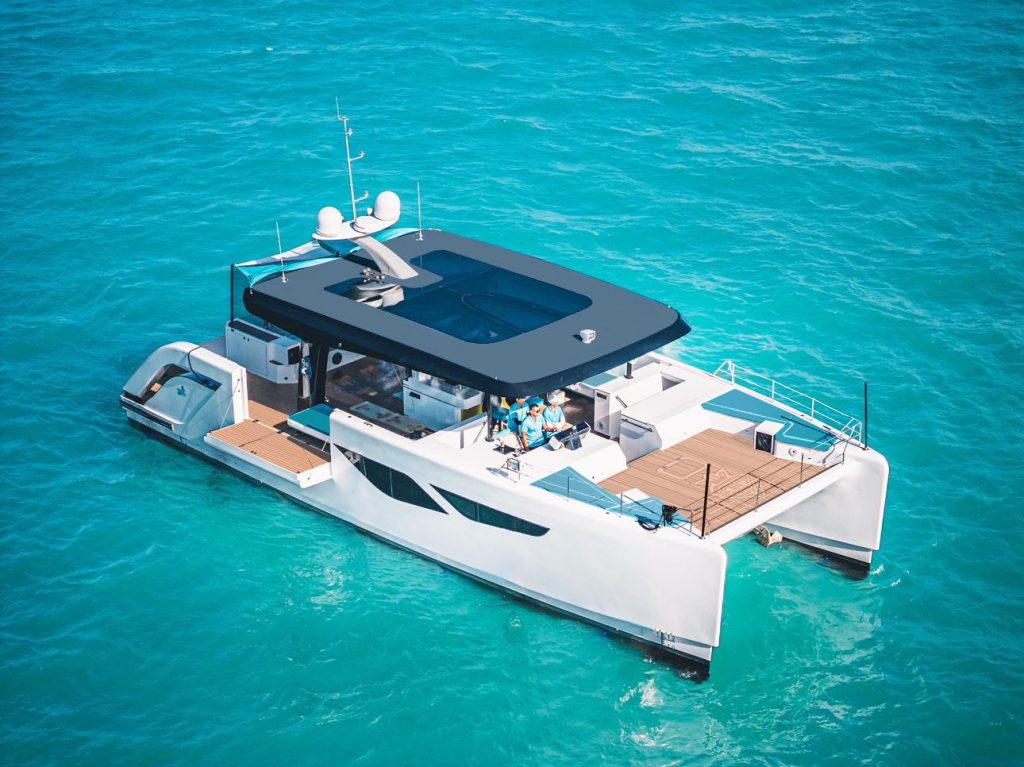
Hulls and Construction
The hulls in a catamaran are crucial to its stability and performance. These hulls help distribute the weight evenly across the water surface, minimizing drag and allowing for smoother sailing.
In general, the hulls can be categorized into two types:
- Symmetrical Hulls : The hull shape is similar on both sides, which enhances balance and stability in various sailing conditions.
- Asymmetrical Hulls : One side of the hull is designed differently than the other, which can be advantageous when sailing upwind.
The construction materials used in building catamaran hulls also play a vital role in the boat's performance and durability. Common materials include:
- Fiberglass : A popular choice due to its lightweight, strength, and ease of maintenance.
- Wood : Traditional material that offers a classic look, but requires more maintenance than fiberglass or aluminum.
- Aluminum : Lightweight and strong, aluminum is an excellent choice for high-performance catamarans 4 .
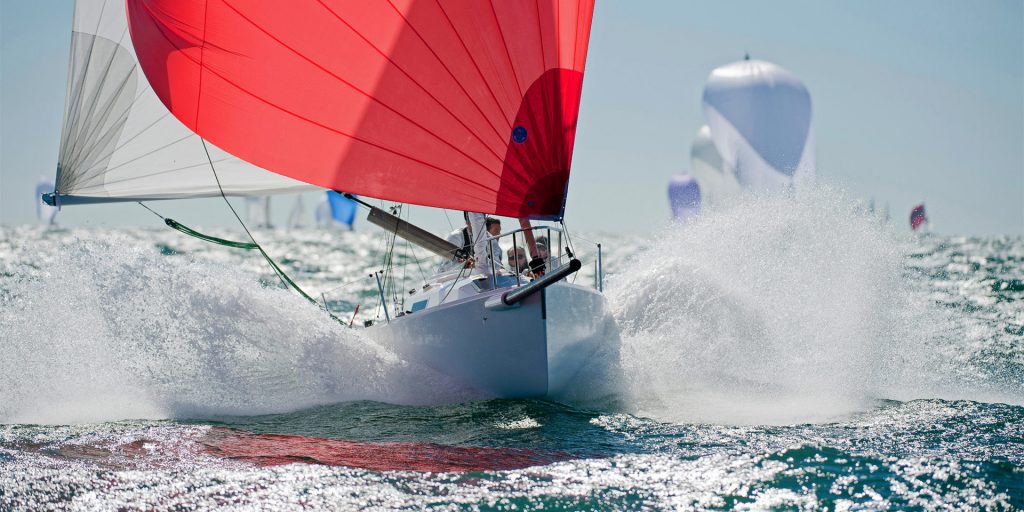
Multihulls vs Monohulls
There's often a debate between the benefits of multihull boats, such as catamarans or trimarans, and monohull boats. Here are some key differences between the two:
- Stability : Due to their wide beam and reduced heeling, catamarans offer improved stability compared to monohulls. This makes them an attractive option for those who want to avoid seasickness or feel more comfortable on the water 5 .
- Speed : Multihull boats are known for their speed, which results from their ability to minimize drag and maintain a level sail.
- Living Space : Catamarans and other multihulls generally have more living space, as both the hulls and the connecting deck can be utilized for accommodation and storage.
- Maneuverability : While monohulls are known for their agility and ability to point close to the wind, catamarans can still offer exceptional maneuverability when properly sailed 6 .
Performance and Handling
Speed and Efficiency
Power catamarans have gained popularity for offering a unique combination of speed, efficiency, and stability. Their dual-hull design allows for less water resistance, which directly translates to higher speeds and better fuel efficiency compared to traditional monohull boats.
In addition, the wide beam provided by the two hulls ensures a stable ride even at higher speeds. This makes power catamarans ideal for cruising, fishing, and watersports ( Boating Beast ).
Sailing Dynamics
When it comes to sailing catamarans , the performance is affected by factors such as keel, rudders, mast, and sails.
Their wide beam and dual-hull design provide inherent stability and reduced heeling effect, making them less likely to capsize compared to monohulls.
I should also note that catamarans have a shallow draft, which gives them the ability to access shallow waters that may be off-limits to other boats ( Navigating the Waters ).
In my experience, the lighter weight of a catamaran and its aerodynamic design can contribute to remarkable sailing performance under different wind conditions.
The larger sail area relative to hull weight allows them to harness more wind power, further enhancing their speed and agility on the water.
Maneuvering and Docking
Maneuvering and docking a power catamaran involves understanding its unique handling characteristics.
The presence of two engines in separate hulls allows for more precise control in confined spaces such as marinas.
The maneuverability of these boats is typically improved by the use of dual rudders that are located close to each powered hull for efficient steering ( BoatUS ).
When docking under power, I find it helpful to carefully assess the wind and current conditions beforehand.
This is because catamarans can be more sensitive to windage due to their larger surface area above the waterline.
By understanding how these forces may affect the boat, I can make adjustments to my approach and successfully dock the catamaran without any incidents.
Safety and Comfort on Board
Safety Features
Safety is a top priority when sailing any type of vessel, including catamarans. A well-built catamaran offers several features aimed at ensuring the safety of those onboard.
First, catamarans have inherent stability due to their wide beam and twin hull design . This makes them less prone to capsizing than monohull boats. This stability allows me to confidently navigate various water conditions .
In addition to stability, catamarans are designed with positive buoyancy, making them almost unsinkable . Of course, safety equipment such as lifejackets, flares, and first aid kits should always be onboard and well-maintained.
Furthermore, you should also stay updated on weather conditions, avoid sailing in high-risk areas, and learn your boat's safe sail limits.
Living Spaces and Comfort
When it comes to living spaces, I value comfort and practicality as essential features for my time on the water. Catamarans offer a unique advantage in this regard, as their dual hulls create spacious living areas.
Most catamarans are designed with separate cabins in each hull, allowing for privacy and comfort when sleeping. Additionally, these boats typically feature shallow drafts , which means I can access shallow waters and anchor close to shore.
The main living area, or salon, is situated on the bridge deck between the hulls. It usually includes a seating area, a dining table, and a galley (kitchen). Large windows provide ample natural light and panoramic views, making the space feel open and bright. Some catamarans even have the option for an additional living area on the upper deck where you can enjoy the sun and breeze.
One aspect of catamaran living I truly appreciate is the ample storage available. Each cabin typically has built-in storage spaces for clothes, gear, and personal items. There are also designated areas for equipment such as spare sails, tools, and water toys. This makes it easy for me to keep my belongings organized and make the most of my time on the water.
Maintaining a Catamaran
Routine Maintenance
In order to keep my catamaran in the best possible shape, I make sure to perform routine maintenance tasks. These tasks are essential to extend the life of the components and ensure smooth sailing:
- Cleaning : Regularly cleaning the deck, hulls, and sails prevents buildup of dirt, algae, and other debris that could affect performance.
- Inspection : Periodically inspecting my catamaran allows me to detect any potential issues before they become significant problems. I pay close attention to the rigging, sails, and lines on my boat.
- Lubrication : Keeping all moving parts lubricated is vital to prevent friction and wear on components such as winches and pulleys.
- Antifouling : Applying antifouling paint to the hulls of my catamaran helps prevent the growth of marine organisms that can damage the boat and reduce its speed. Make sure to do this at least once a year.
Dealing with Wear and Tear
Despite my best efforts to keep my catamaran well-maintained, wear and tear is inevitable. Here's how I deal with common issues that could arise from regular use:
- Repairs : When I notice signs of wear on sails, lines, or rigging components, I make it a priority to repair or replace them promptly. Neglecting these issues can lead to more significant problems and affect the boat's performance.
- Hull maintenance : If I find dents, scratches, or stiff rudders on my catamaran's hulls, I address them immediately. Repairing any damage not only ensures smooth sailing but also prevents further issues from developing.
- Sail care : Over time, my sails can become stretched, torn, or damaged due to exposure to sun, wind, and saltwater. Regularly inspecting them for signs of wear and making any necessary repairs or replacements helps maintain optimal performance.
- Rust and corrosion prevention : Since my catamaran is made of various metal components, I need to protect them from rust and corrosion. I routinely check for signs of corrosion and apply anti-corrosive treatments when needed.
Catamaran Brands and Models
High-Performance Models
In recent years, there has been a growing interest in high-performance catamarans. I have seen a variety of brands and models that have impressed me with their performance capabilities. One notable brand is Fountaine Pajot , which has a long history of producing a range of sailing catamarans and power catamarans. Some of their popular models include the Tanna 47 and the Bali 4.4 .
Another high-performance catamaran I've come across is the Leopard 40 . Known for their speed and exceptional handling in various conditions, the Leopard brand started with sailing catamarans and has since expanded to include power catamarans. Their models range from 40 to 53 feet long, offering both power and luxury for those looking for a thrilling experience on the water.
Cruising Catamarans
When it comes to cruising catamarans, the Lagoon brand is synonymous with luxury and comfort. With a range of sailing catamarans from 40 to 70 feet long, Lagoon offers spacious catamarans for extended bluewater cruising. Their 60- and 70-foot power catamarans are equally impressive, providing ample living space and smooth sailing experiences.
I've also found the Aquila 42 PC to be a remarkable cruising catamaran. With a focus on design and innovation, Aquila has produced catamarans perfect for exploring the open sea with friends and family. Their spacious, stable designs allow for a more enjoyable and serene journey, ensuring you arrive at your destination comfortably.
The Catamaran Lifestyle
Anchoring and Cruising
I find catamarans to be a fantastic choice for cruising and anchoring , which is a critical part of living the catamaran lifestyle . Catamarans have several advantages when it comes to anchoring and cruising, such as:
- Stability : Due to their wide beam and twin hulls, catamarans remain stable during anchoring, which reduces the risk of seasickness.
- Shallow draft : Thanks to their shallow draft , catamarans can anchor close to shore, enabling better access to protected coves and more beautiful beaches.
- Speed : Despite their large size for cruising vessels , catamarans are generally faster than monohulls. This is a result of their slim hulls and reduced water resistance.
When it comes to anchoring, catamarans can make use of their shallow draft to anchor in locations that other boats cannot. This allows for a greater range of cruising spots, which makes the overall experience much more enjoyable and unique.
Living on a Catamaran Full-time
For many catamaran enthusiasts, the dream of living full-time on a catamaran is entirely possible. While not without challenges, there are several factors that make living aboard a catamaran an enjoyable experience:
- Spacious living areas : Catamarans generally have more living area compared to monohulls, providing ample space for the whole crew.
- Privacy : The separate hulls allow for private cabins, ensuring that everyone on board has their space.
- Stability : As mentioned earlier, catamarans are stable vessels, making living on them more comfortable than monohulls.
Choosing Your Catamaran
Comparing Models and Features
When I start to look for the perfect catamaran, the first thing I focus on is comparing various models and features .
I determine the key factors that are essential for my needs, such as size, passenger comfort, and performance. By doing so, I can identify which catamaran models are most suitable for me.
For example, if I plan to sail with a large group, I would look for a catamaran that offers ample space both inside and out.
To help me with my comparisons, I usually create a table or list of the different models and their features:
| Model | Size | Comfort | Performance |
|---|---|---|---|
| A | 40ft | Spacious | High |
| B | 35ft | Average | Average |
| C | 45ft | Luxury | High |
This visual aid makes it easier for me to sort the options and prioritize my considerations, such as price, yacht type, and brand.
New vs. Second-Hand
Another critical aspect of choosing a catamaran is deciding between a new or second-hand boat.
Both options have their pros and cons, and ultimately it depends on my preferences and budget.
If I can afford a new catamaran, I get the advantage of the latest design , features, and technology. Plus, I typically receive better warranty coverage and support from the manufacturer.
However, new catamarans are more expensive and can have long wait times due to high demand.
On the other hand, purchasing a second-hand catamaran can save me a significant amount of money, and I might find a high-quality boat with low mileage or well-maintained by the previous owner.
However, this option carries more risks, as I need to be knowledgeable about potential maintenance issues and conduct a thorough inspection before purchase.
Learning Resources
Books and Manuals
When it comes to learning about catamarans, there are plenty of books and manuals available.
One of the highly recommended books is Multihull Voyaging by Thomas Firth Jones. This book provides a comprehensive understanding of multihulls, including catamarans, and is an essential guide for any beginner sailor.
Another great book to check out is Catamarans: The Complete Guide for Cruising Sailors by Gregor Tarjan.
With a foreword by Charles K. Chiodi, publisher of Multihulls Magazine, this book covers all aspects of cruising catamarans. It includes detailed information on design, construction, and maintenance, as well as tips and tricks for sailing a catamaran.
Here are a few more books that I find valuable:
- The Catamaran Book by Tim Bartlett, an excellent resource for both beginners and experienced sailors
- Catamaran Sailing: From Start to Finish by Phil Berman and Lenny Rudow, a comprehensive guide to both catamaran racing and cruising
Online Content and Photography
In addition to books, you can find plenty of online content and photography about catamarans.
Websites like Sailaway Blog and Boating Guide offer tips, techniques, and how-to articles for sailing catamarans.
Many of these sites also include stunning photography, showcasing these beautiful vessels in action.
For those who prefer Kindle or e-books, many of these resources are available in digital format.
This makes it easier for you to access them anytime, anywhere, allowing you to keep learning and improving your catamaran sailing skills.
To further enhance your knowledge, you can also join online forums and communities dedicated to catamarans.
These platforms provide invaluable advice and first-hand experiences shared by fellow sailors, as well as recommendations for additional learning resources.
Frequently Asked Questions
What factors should be considered when choosing a catamaran for full-time living?
When choosing a catamaran for full-time living, consider its space and layout , as it will become your home.
Look for a design with a comfortable living area , ample storage, and sufficient berths for the number of people living aboard.
Also, consider fuel efficiency , ease of maintenance, and the catamaran's cruising range .
Lastly, the overall cost of ownership , including insurance and mooring fees, should be considered.
How do catamarans perform in rough sea conditions?
In general, catamarans are known for their stability, which is primarily due to their wide beams. This makes them less prone to capsizing when compared to monohulls.
However, their performance in rough sea conditions will depend on the specific model and design of the catamaran. Some may perform better in certain conditions than others, so researching and selecting the right design is essential.
What are the key differences between sailing a catamaran and a monohull?
One of the main differences between catamarans and monohulls is stability.
Catamarans have a wider beam , which makes them more stable and minimizes the risk of capsizing.
They also have shallower drafts, which allow them to access more shallow waters compared to monohulls.
Additionally, catamarans often have larger living spaces, making them more comfortable and suitable for cruising and full-time living.
What are the advantages of catamarans for long-distance cruising?
Catamarans offer several advantages for long-distance cruising.
Their wide, stable design provides a comfortable ride and reduces the risk of seasickness.
They can also attain higher speeds due to their reduced drag and generally sail faster than monohulls on certain points of sail.
The shallow draft allows them to explore more coastal areas and anchor closer to shore. Lastly, their spacious interiors make them ideal for extended cruises and living aboard.
How does one assess the value of a used catamaran on the market?
Assessing the value of a used catamaran requires thorough research and inspection.
Start by comparing the age, model, and condition of the catamaran to similar listings on the market.
Take note of any upgrades or additions made to the boat, as these can affect the price.
It's essential to inspect the boat in person or hire a professional surveyor to ensure there are no hidden issues that could affect its value.
What essential features should be looked for in a catamaran intended for ocean voyages?
For ocean voyages, look for a catamaran with a strong, well-built hull designed to handle rough conditions.
Safety features such as liferafts, adequate flotation, and sturdy deck hardware are crucial.
A reliable engine and well-maintained rigging and sails are also essential.
In terms of living space, opt for a catamaran with a comfortable, spacious interior and ample storage.
Last but not least, good navigation and communication systems are necessary for long-distance ocean voyages.
Related Articles

How Deep Can a Submarine Go: Exploring the Depths and Limitations

Boat Slip: Essential Features for Safe Docking
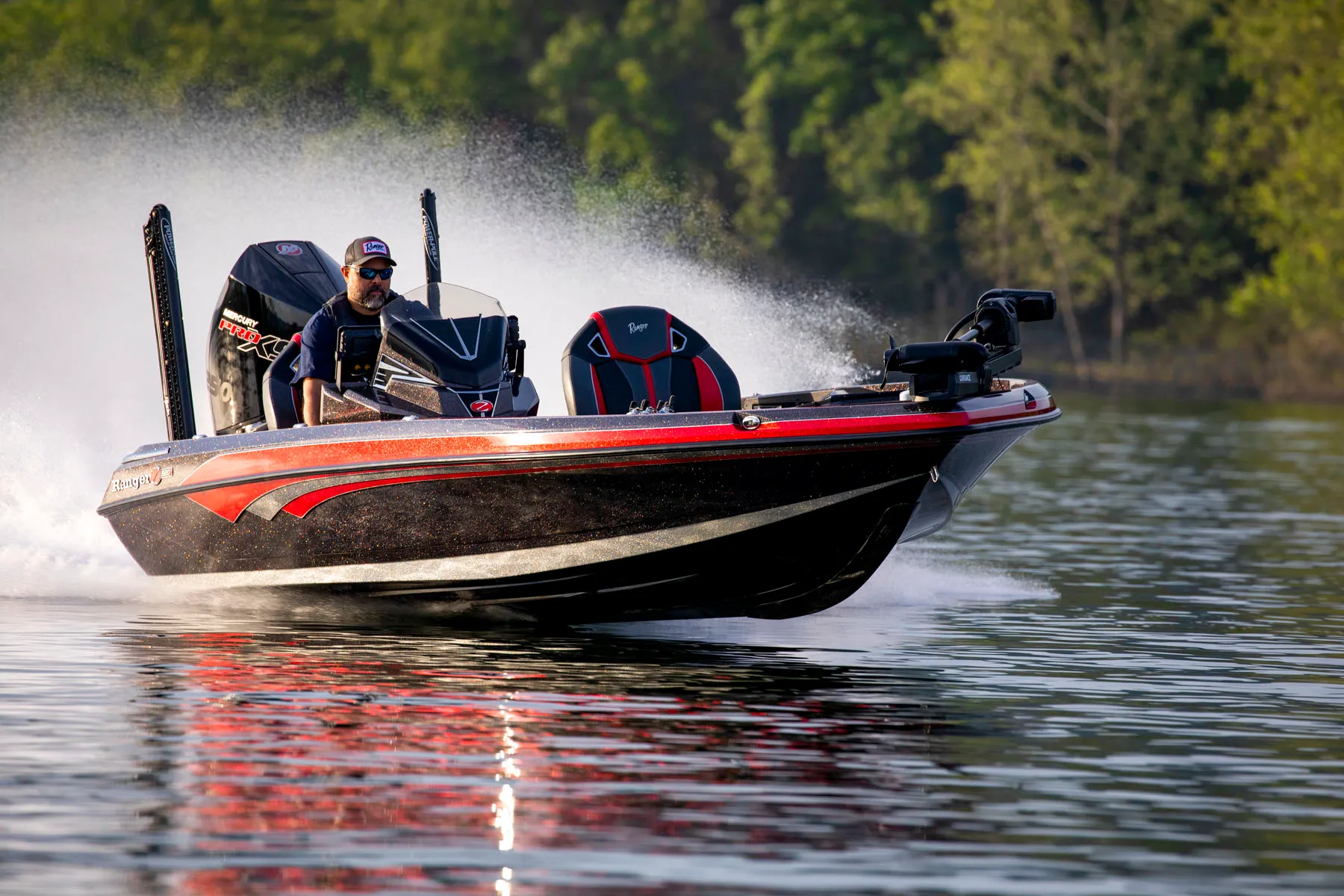
Bass Boat Brands 2024: Top Picks for Anglers This Year

Canoe vs Kayak: Essential Differences Explained
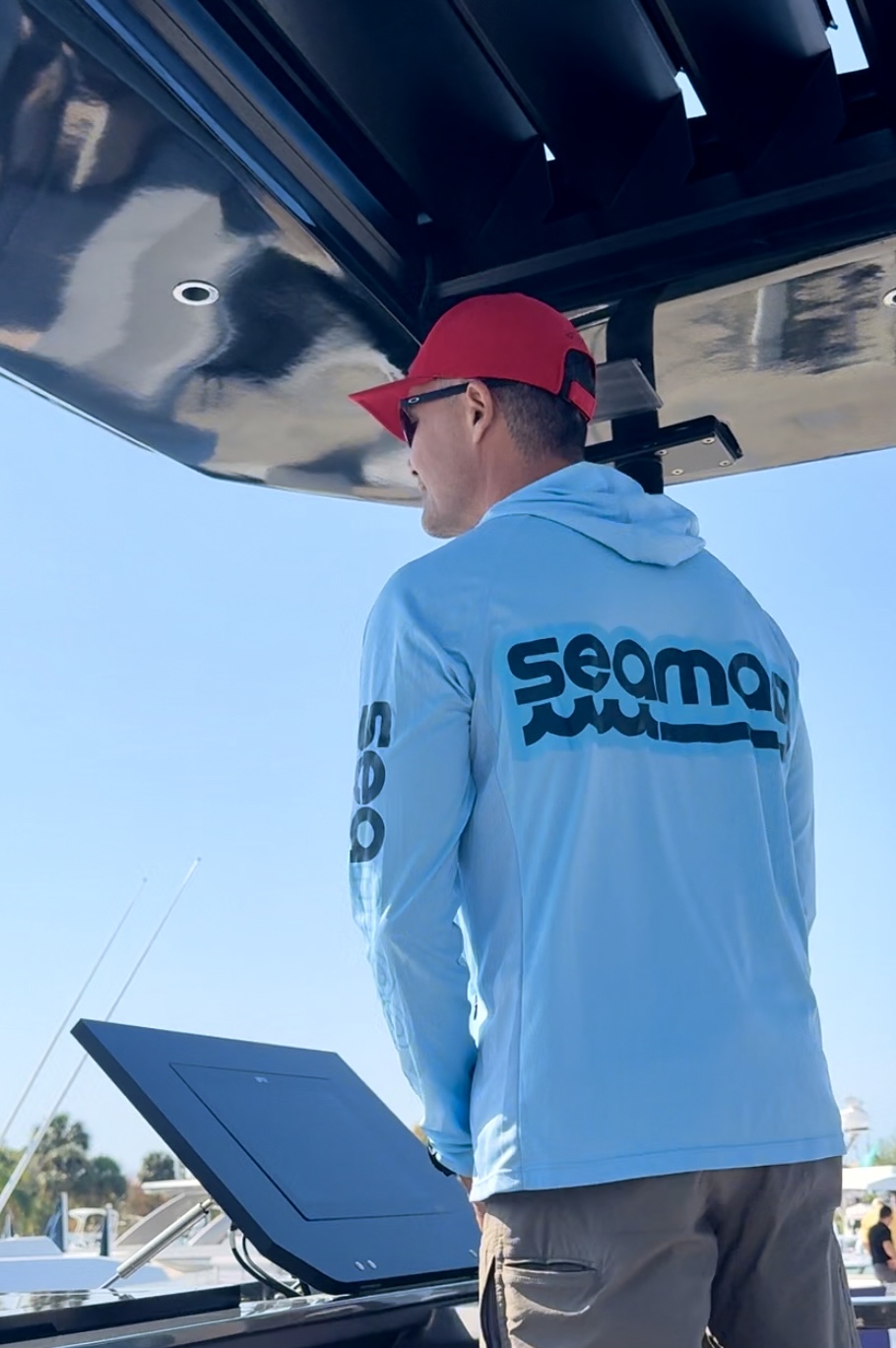
Is The Boat Market Crash Here? 2024 Outlook Unveils Key Insights

How Long Can You Finance a Boat 2024: Key Factors and Financing Options

What Causes a PFD to Wear Out Over Time? Factors and Prevention Tips
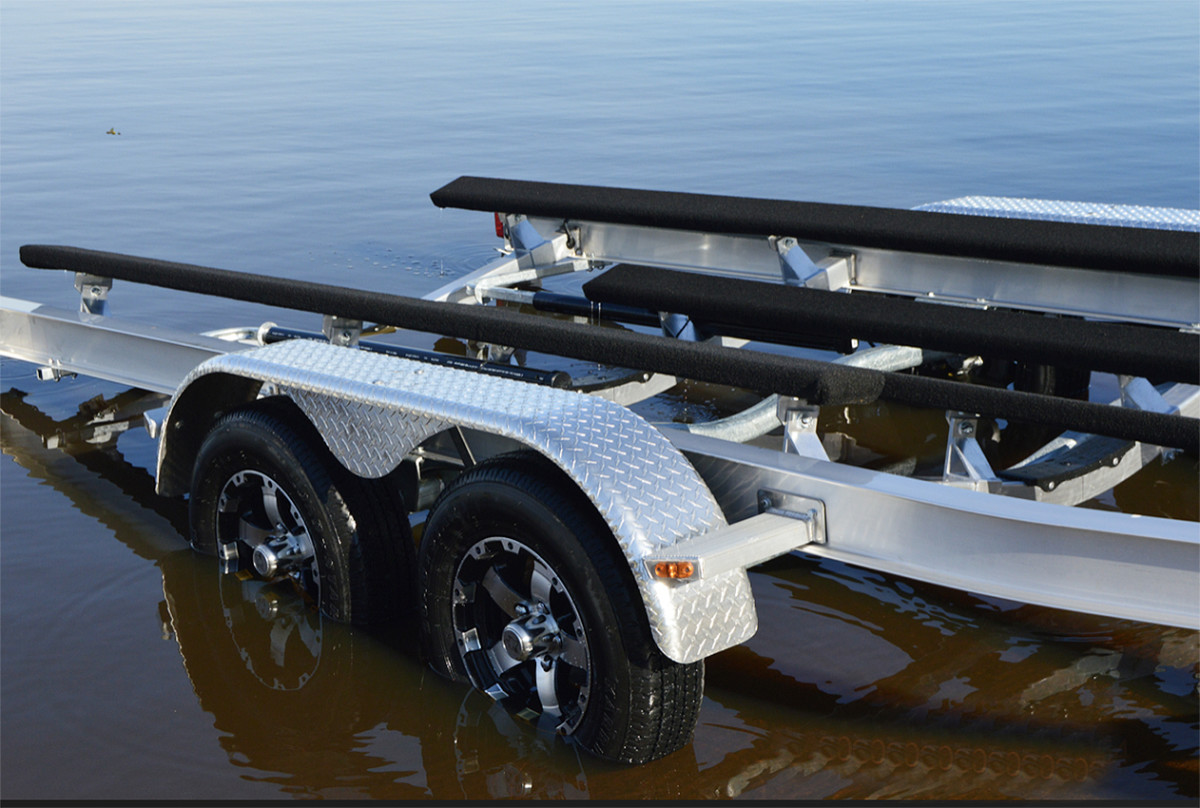
Boat Trailers for Sale: Top Picks and Buying Guide 2024

My Cruiser Life Magazine
Sailing Catamaran Speed
You’ve probably heard that one of the best reasons to get a catamaran is because they’re fast. After all, there’s a race any time there are two sailboats on the same waterway.
But like all things in boating, speed is a relative term. Catamarans seem fast to those coming from slow and heavy monohull sailboats, but cruising catamarans are still pretty slow vessels. There are indeed high-tech racing catamarans breaking speed records all the time. Still, the vessels that most liveaboard cruisers venture out on are only slightly faster than their monohull counterparts.
For this article, we will look at the types of catamarans people live on and cruise on. Forget about those fantastic America’s Cup yachts or those multihull go-fast fishing boats for a few minutes.
I have had experience cruising and living aboard both catamarans and monohulls. For five years, my wife and I enjoyed catamaran sailing on a Lagoon 380. We then switched—for many reasons—to a Cabo Rico 38. The Cabo Rico is a traditionally-designed monohull with a full keel and a heavy displacement. In other words, it’s about as far away from a “speedy” catamaran as one can get.
Table of Contents
How fast can a catamaran go, measuring catamaran speed, catamaran speeds vs monohull speeds, sailing cruising catamarans, performance cruising catamarans, racing catamarans, power cruising catamarans, catamaran top speed, faqs – how fast are catamarans.
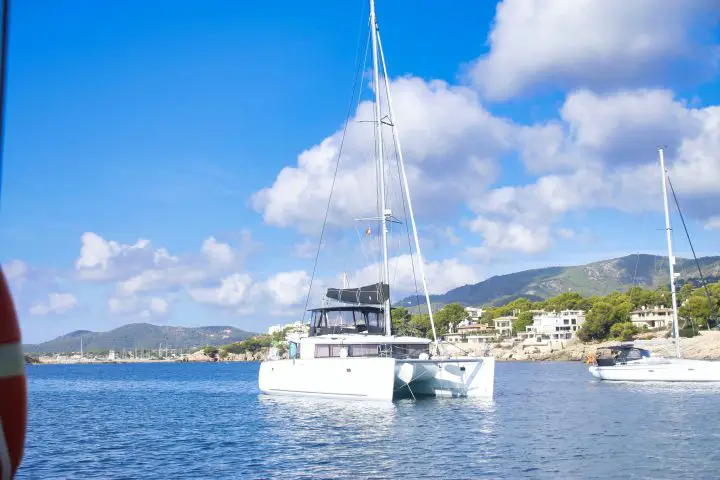
There’s no doubt that catamarans are some of the fastest sailboats around—but there’s also a lot of misinformation and misunderstanding online about how fast they really are.
Realize that not all catamarans are created equally. There are cruising catamarans built to carry their passengers in comfort. And then there are racing catamarans built for nothing but speed. Somewhere in between, there is a poorly-defined category of “performance cruising” catamarans that stir passions.
So, are catamarans fast? Well, it’s all relative. But, if you compare them to monohull sailboats of similar sizes and capabilities, the catamarans are usually faster for several reasons.
The speed difference is even harder to measure in the cruising catamaran category. One of the reasons catamarans beat monohulls during races is because they are built light with no ballast. But a heavily-laden cruising cat ready for an ocean crossing is hardly “lightly loaded.” Will it still beat a similarly heavily-laden monohull? Sure! But probably not by as much as you might think.
Boats measure their speed in knots. Traditionally, this was measured by a tool known as a knot log. The modern equivalent is an underwater instrument with a spinning wheel that effectively measures the speed of the water passing over the hull. So long as no currents are present, that speed will equal the boat’s speed over the ground (SOG).
Satellite navigation allows us to measure our SOG more accurately, but this isn’t a great indication of boat performance since it will be affected by tides and ocean currents.
For landlubbers, one knot is equal to about 1.15 statute miles. So, in other words, when we say that a sailboat cruises at 6 knots, it means it’s going about 7 mph.
But before going any further, consider this—the maximum speed that a sailboat makes is generally a pretty meaningless number. Maybe the knot log pegs to 13 knots for a few seconds, thanks to a strong gust of wind while you’re headed down a large swell. Does this mean you’re driving a 13-knot boat?
A voyaging sailor who has made a long passage will have little interest in this sort of number. When you’re crossing oceans, what really matters is how many miles pass under the keel each day. The more miles you tick off, the shorter the passage. So most sailors learn quickly to look past the “fastest speed in knots” number and find real-world stats on passage miles.
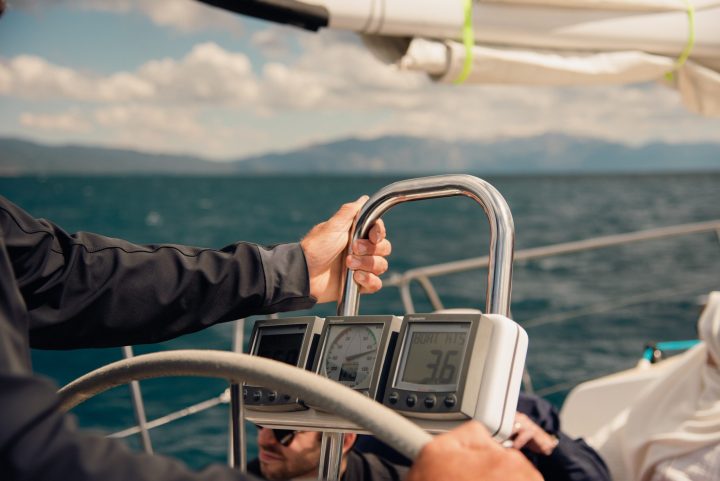
Comparing speeds between radically different sailing vessel hulls is like comparing apples to oranges. Even seemingly similar boats, like “cruising sailboats,” the differences between one and the other are endless.
For example, let’s say you wanted to compare 38-foot monohulls to 38-foot catamarans. The speed of a monohull is limited by waterline length, which means you’d have to look at a hull that is significantly more than 38 feet in most cases. On the other hand, the catamaran is known for long swim platforms on inverse transoms and plumb bows—meaning most 38 foot cats have nearly 38 feet of waterline.
Then, what sort of hull design makes a fair comparison to a catamaran? Would it make sense to compare a transitional, salty 38-footer with a full keel? Probably not. Most sailors interested in the cruising catamaran lifestyle would more than likely be comparing it to a modern monohull with a flatter bottom, fin keel, and spade rudder.
What about the catamaran? There’s a lot of variation in the catamaran field regarding performance. If speed is your goal, you likely want to compare the high-end performance brands—Outremer, Gunboat, HH, and the like. These boats are becoming more popular, but most cruising cats you see on the water are not performance models. Instead, they are the big and comfortable cruisers made by Lagoon, Leopard, or Fountaine Pajot.
Finally, how can you fairly compare the stats? Boats sail differently in different wind speeds and at different points of sail. In other words—there are a lot of variables that make it hard to answer the question, “How fast can a catamaran go?”
Polar charts for each vessel can provide some clues to make a somewhat fair comparison. Polar charts are graphical plots of a sailboat’s performance in different wind conditions and at different points of sail. Manufacturers seldom publish since no two are ever perfectly alike. They are less of a boat specification and more of one sailor’s results for a particular boat. Most owners make their own polar diagrams, but they’re still a tool for those looking to get an idea of a model’s performance in the real world.
Speeds of Various Types of Sailing Catamarans
There are several distinct catamaran classes, and predicting speed means understanding what the designers were building the craft to do. You might be surprised to learn that the first “modern” catamarans popped up in the New England racing circles in the late 1800s. Nat Herreshoff’s Amaryllis is particularly famous from the time .
Since then, catamarans have been synonymous with speed. But in today’s world of many different multihull designs, it’s important to set your expectations accordingly. As you would not buy a Ferrari for its cargo space, don’t expect your minivan to win any races at the track.
Examples of cruising cats include popular models made by the big-three catamaran makers—Lagoon, Fountaine Pajot, and Leopard. However, there are dozens of other companies making these boats. The market and industry for cruising catamarans have never been larger.
Most of these boats are engineered to provide comfortable accommodations for voyaging. They first became famous as vessels for sail charter holidays, where their huge cockpits and private cabins made them much more popular than the smaller and cramped monohull options.
As a result, they’re not built with high-tech components or super lightweight performance rigs. Instead, they’re the catamaran equivalent of a Hunter or a Catalina sailboat—mass-produced on an assembly line. That keeps prices lower than other types of catamarans, but it also means that they’re not winning any races. The makers use traditional layups with end-grain balsa-cored fiberglass to keep costs down. In addition, they usually feature stub fin keels, which are foolproof to sail but will not provide the upwind performance of a lift-making daggerboard.
Still, without ballast and when lightly loaded, cruising catamarans can move. They show their colors in light air when heavy displacement-hulled sailboats usually make their poorest showing. Since these moderate conditions also make for great cruising, these boats can provide a lovely ride in smooth weather.
Cruising catamarans can’t plane or anything, but their narrow hulls create an effect that means they can beat the hull speeds of a similarly sized monohull. Of course, it’s not a precise number since every boat and crew is different, but generally, you could expect speeds to be about one and a half times that of a same-sized monohull.
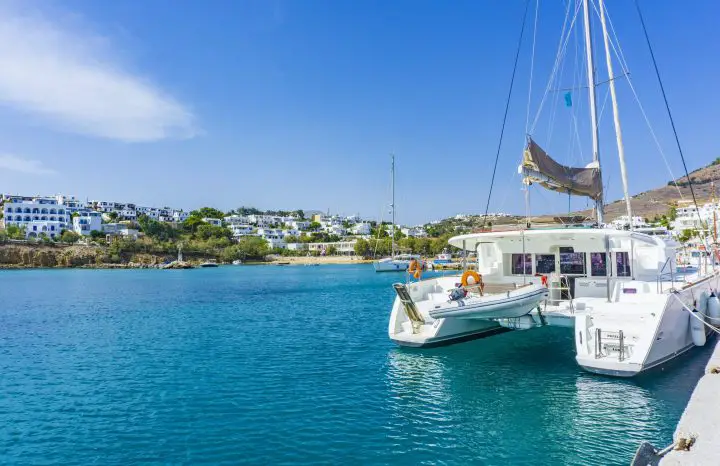
These catamarans are still rigged for comfort, but they’re built using the highest-quality and lightest-weight materials. While their hulls are rigged for comfortable living, they are generally designed much sleeker than regular charter-style cruising catamarans. The hulls are narrower, and you’re unlikely to see tall flybridges or forward lounge seating.
Several companies are making these boats. But in the world of catamarans, a performance cruiser is the upper end of the market. If you want a car comparison, Lagoons are something like a Chevy sedan, whereas an Outremer is like an M-series BMW. A Gunboat would be even more exotic, like a Ferrari. Not only are they more fashionable brands, but they’re also made to higher standards with cutting-edge designs .
It’s also worth noting that the category of “performance cruising cat” is a sliding scale. Some companies make vessels with better materials and craftsmanship than the cruising cats but aren’t designed for speed. Others build cats that are all about performance with few amenities.
With every new model, companies building these cutting-edge boats are attempting to boost the “performance” and the “cruising” aspect of their vessels. As a result, amenities and speed continue to get better and better.
Any racing sailboat is not designed for comfort. Especially on a catamaran, accommodations take up space and weigh the boat down. True racing vessels are designed to not worry about the crew but optimize every element for speed. Once the boat is designed for the desired performance, they’ll squeeze in bunks and storage wherever they can.
As such, there’s not much point in comparing them to liveaboard or cruising sailing vessels—they are too different. Some modern racing catamarans even fly above the water on foils. This makes for a high-speed boat and a considerable risk for sailors traveling for pleasure. Gunboat tried to make a foiling cruising cat in the G4 model, but it didn’t go so well for them.
Power cats run the same gamut of designs that sailing catamarans do. Power catamarans and sport catamarans designs are popular in powerboat circles for the same reasons they are in the sailing world–their hull designs allow for smaller underwater profiles and high speeds. There are many fast catamarans out there with twin engines and average speeds of well over 70 knots. Most recreational vessels cruise at about 20 knots, however.
Power catamarans also offer a smooth ride, making them a popular choice for large vessels like passenger ferries. There are even military vessels that use two hulls, like the stealth M80 Stiletto .
As you can see, catamaran speeds vary from just slightly better than monohulls to extraordinary flying machines. But cats are about much more than just speed. Their open and bright living space makes living aboard an entirely different experience than living on a monohull. Their cockpits flow into their salons for a full-time outdoor living feel that no other type of vessel can match. There are many reasons to choose a catamaran as a liveaboard sailboat.
How fast is a catamaran?
The answer depends on many other questions, like what sort of catamaran is it? And if it’s a sail cat, how fast is the wind blowing?
Sailing catamarans come in all different shapes and sizes. Some are optimized for living space and comfort, while others are designed with fast cruising speeds being the sole goal of the boat. The Gunboat 68, one of the fastest cruising sailboats currently made, can exceed 30 knots.
The world of power cats is much the same. Some power cats can do well over 70 knots, while most cruising boats top out at around 20 knots.
Do catamarans have a hull speed?
A hull speed is a characteristic of traditional displacement-hulled sailing vessels. The properties of the hull shape under the water create drag that limits the overall speed that the vessel can achieve. Even if you keep adding more power (or more wind), the vessel cannot exceed its designed hull speed for any length of time. Hull speed is a factor of waterline length.
Multihulls, however, have an entirely different underwater profile than monohulls. Their narrow hulls and shallow keels mean that drag is not the limiting factor. With this in mind, designers can tweak catamaran hulls to plane and cruise well above the hull speed of a similarly sized monohull.
What is the fastest cruising catamaran?
The market for fast-moving cruising cats has never seen more innovation than in the past decade. This type of boat has taken off, spurred in part by new designs and the overall popularity of multihulls for cruising. The industry leader in fast multihulls is generally considered the French-based company Gunboat . After all, one of the company’s mottos is “Life is too short to sail a slow boat.”
The company’s largest boat to date is the Gunboat 90 Sunshine . However, the delivery of the company’s current flagship, the Gunboat 68 Condor , from France to St. Maarten, provides some real-world numbers. In the delivery crew’s words, “Our max speed exceeded 30 knots a couple of times, and the max 24-hour run was 328 nm.” To save you the math, that works out for an average speed of 13.7 knots for their best day.
Matt has been boating around Florida for over 25 years in everything from small powerboats to large cruising catamarans. He currently lives aboard a 38-foot Cabo Rico sailboat with his wife Lucy and adventure dog Chelsea. Together, they cruise between winters in The Bahamas and summers in the Chesapeake Bay.
- Yachting for beginners
- Owning a yacht
- Motor Yachts
- Sailing Yacht
- Indian Ocean
- Mediterranean
- Buying or Selling a Yacht
- Yachting Events
- FAQ – Luxury Yacht Charter
- FAQ – Buying a Yacht
- FAQ – Sell your Yacht
- How Much Does It Cost To Charter A Luxury Yacht?
- All our Blog Post & News

What are the Fastest Cruising Catamaran on the Market?
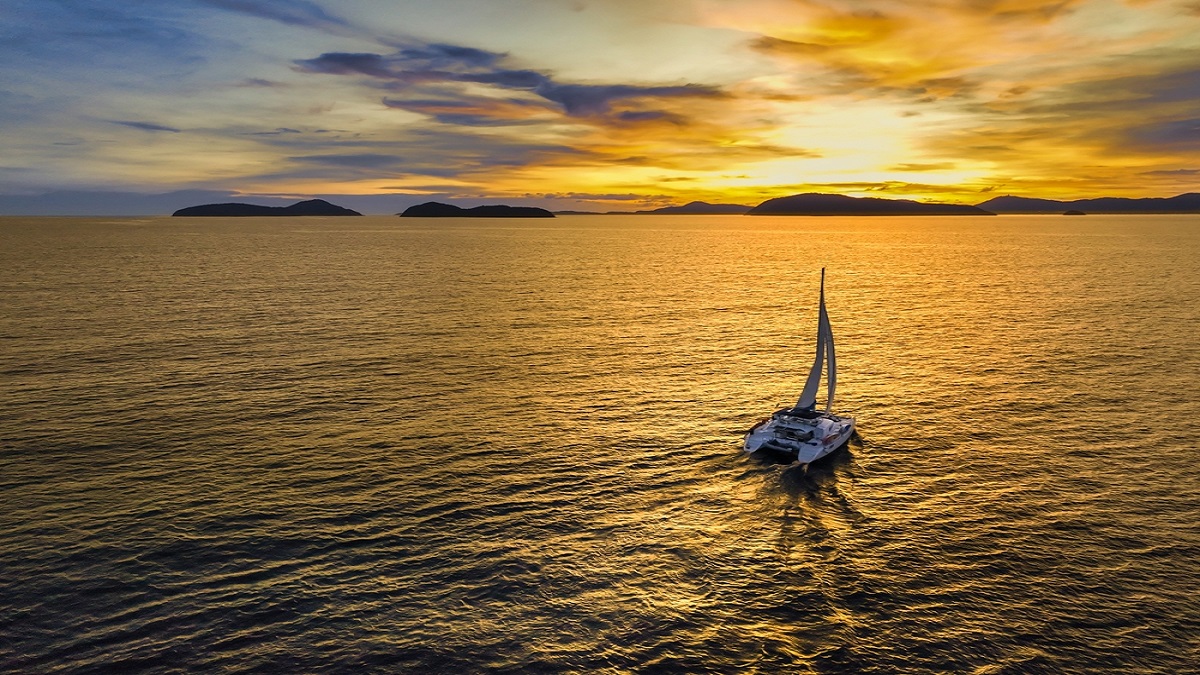
For those who love the thrill of the open sea, speed is an essential element of their sailing experience. For years, catamarans have been a top choice for sailors who want to explore while enjoying the benefits of speed, comfort , and luxury. In recent years, the trend towards high-end fast catamarans has exploded. If you are looking for speed combined with affordable luxury, look no further than the fastest catamarans on the market.
How fast can cruising catamarans usually go?
Cruising catamarans can reach speeds that can exceed their respective theoretical hull speed thanks to their light weight, generous amounts of sail area, and minimized wetted surface area. It is not uncommon for them to reach sailing speeds of 30 knots or more. They can also offer better stability than a monohull, making them an ideal choice for long ocean passages.
What Makes the Fastest Catamarans on the Market more Rapid Than the Others?

When it comes to catamarans, Gunboat is a brand that stands out from the crowd. Known for their exceptional quality, performance, and luxurious design, Gunboat delivers a unique sailing experience that has captivated the attention of sailors around the world. Their latest offerings – the Gunboat 68, 72V, and 80 – are perfect examples of the brand’s commitment to delivering top-of-the-line sailing yachts that offer the best of both worlds: the performances of a racer in a luxury cruiser catamaran.
The Gunboat 68 is a spacious and comfortable yacht that boasts an internal helm station and sophisticated lounging areas. With room for up to six cabins, including a spacious master, and a forward cockpit, the Gunboat 68 offers everything that sailors could ask for in a luxury catamaran. But don’t be fooled by its luxurious design – the Gunboat 68 also offers exceptional performance, making it a true racer’s yacht.
The Gunboat 80 takes everything that sailors loved about the Gunboat 68 and ramps it up to the next level, with even more space and more advanced features. Designed for sailors who demand the very best, the Gunboat 80 offers a cruising experience like no other. And as with all Gunboat yachts, performance is at the forefront of its design. Expect nothing less than exceptional sailing speeds and adrenaline-pumping races.
But perhaps the most exciting development in the Gunboat lineup is the new 72V. This unique yacht is a bit of a gamble for the brand as it features a flybridge. But don’t think that this will make it any less of a racer – the 72V is designed to be streamlined compared to traditional production catamarans, and it still offers exceptional speed and performance. And with a flybridge helm station, sailors can look forward to even more control and a truly immersive sailing experience.
“Cruisers do not understand the massive difference between a racer and cruiser, with tremendous emphasis on weight and performance.” Gunboat understands that difference all too well, and their commitment to pushing the limits of what is possible with luxury cruiser catamarans is what sets them apart. Gunboat is leading the way in the world of high-performance luxury sailing, and they show no signs of slowing down any time soon.
Read also: INTRODUCING THE NEW GUNBOAT 72V “WONDERFUL”: THE ULTIMATE FLYBRIDGE CATAMARAN

HH Catamarans
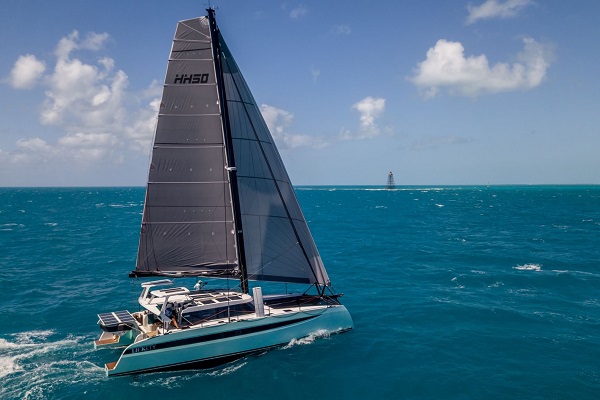
HH Catamarans may be a relatively new player in the world of high-performance cruising yachts, but they have quickly risen to become one of the most respected names in the industry. Built in Xiamen, China, by the same contractor that once had built Gunboats, HH Catamarans are designed to offer an unparalleled level of luxury combined with the ultimate sailing performance.
When HH Catamarans emerged in the market a decade ago, they had to make a crucial decision about what kind of boat they wanted to create. Ultimately, they decided to prioritize speed and performance over everything else, a decision that has drawn praise from seasoned sailors. Their boats range from 44ft to 88ft in length, all featuring exceptional craftsmanship and engineering.
One of the crucial features on HH Catamarans is their hydraulics and smart deck planning. Combined with their captive winches, these features allow sailors to get the boat off the mooring, sails up, and cruising at speeds up to 20 knots in just four minutes. This level of speed and agility is unparalleled in the world of cruising catamarans.
In addition to their performance and speed, HH Catamarans boast quality construction that makes them the strongest yachts possible without adding significant weight. Carbon and epoxy are used to create the strongest possible hull, while all lines run under-deck to create an uncluttered walkway. The stanchions are also a generous 900mm tall, providing necessary safety when sailing with friends and family. The continuous, unbroken toe rail runs the length of the deck, enhancing the boat’s aesthetics while keeping the structure stable.
Overall, HH Catamarans has carved out its niche in the ultra-luxury sailing market, offering high-performance cruising catamarans that deliver both speed and comfort in equal measure. Every detail has been carefully thought out, from the construction of the hull to the onboard technology and smart deck planning, delivering an unparalleled sailing experience for those who want to push their yachts to the limit.
The Kinetics Catamaran’s Unmatched Velocity and Beyond
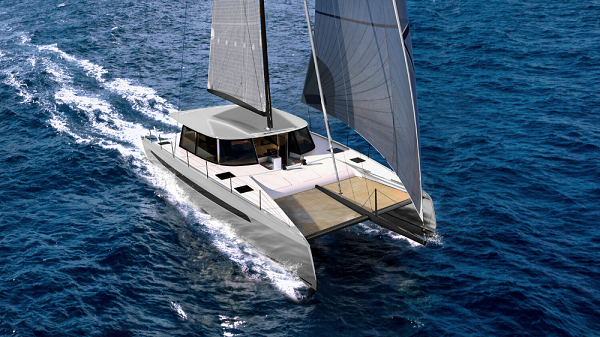
Founded in 2018, Kinetic Catamarans is a US company based in Knysna, South Africa. Their team consists of Bob Hayward, a successful US real estate developer, co-founder of Summit Entertainment, and farmer, and Leon Scheepers, a highly respected South African boatbuilder with extensive expertise in multihull production. Both share a deep love for sailing and a strong commitment to improving the boating industry.
Their main goal is to build luxury performance cruising catamarans of the highest caliber. In 2021, they proudly achieved this goal when the KC54 received prestigious accolades shortly after its launch. The Cruising World Magazine awarded it the Boat of the Year in the Judges Special Recognition category, and it was also named the Best Large Multihull (50ft and above) by SAIL Magazine.
Nevertheless, Kinetic Catamarans has been making waves in the boating industry with their luxury performance cruising catamarans, and their latest model, the KC62 , takes their offerings to a whole new level. This vessel boasts unmatched velocity and beyond and is a testament to the dedication and expertise of the Kinetic team.
One of the standout features of the KC62 is its lightweight design. The use of chemically-strengthened glass for the 360° windows, combined with other weight-saving measures, has resulted in a vessel that is both faster and more fuel-efficient than other catamarans in its class. In fact, the KC62 has been clocked at speeds of up to 30 knots!
But this vessel isn’t just about speed. It also offers unmatched comfort and luxury for its passengers. The spacious double cabins are outfitted with abundant clothing storage and en-suite bathrooms, while the saloons provide a cozy space for relaxing and socializing. The use of designer tables and stools and the latest appliances adds a touch of elegance to an already luxurious experience.
While the KC62 shares many of the features of other Kinetic catamarans, it also has its own unique touches that set it apart. For example, the vessel has two helm stations on each quarter and another one inside, as well as a forward cockpit that doubles as a leisure zone. This forward cockpit provides a cool and breezy spot for passengers to relax and take in the stunning scenery.
All of Kinetic’s vessels are designed by the highly experienced and innovative Simonis Voogd Design BV, and the KC62 is no exception. This vessel is a testament to the collaborative effort of a team dedicated to creating the highest quality, most luxurious catamarans on the water today.
Conclusion:
The market for fast cruiser catamarans is growing, with more brands and models being developed each year. These catamarans offer high performance, stability, and luxury, making them an ideal choice for adventurous sailors who want to explore the world in style. While the fastest catamarans on the market may come with a hefty price tag, the experience of sailing on one of these vessels is second to none. With their impressive speeds and luxurious amenities, it is no surprise that more and more sailors are turning to fast cruiser catamarans for their next adventure on the water.
Read also: 9 catamarans for sale under 5 millions
Predator 84 for charter: a Review of the Must Try “Alvium”
Where can you sail in march, you might also like.

4 Things about Parsifal III the Luxury Sailing Yacht In Below Deck (Price, Owner, Location..)

Windward Yachts Launches WhatsApp Channel for Latest Updates
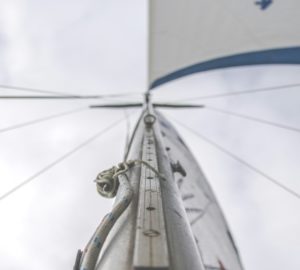
The Pinnacle of Yachting Discover The Finest Sailing Yachts

Cruising the Seas in Splendor: Unveiling the Majesty of Catamaran Boats
Catamaran boats have been gaining popularity in recent years due to their unique design and numerous benefits. These boats are built with two hulls instead of one, which provides a more stable and comfortable ride.
They are also faster and more fuel-efficient than traditional monohull boats, making them a popular choice for both recreational and commercial use.
One of the biggest advantages of catamaran boats is their stability. The two hulls provide a wider base, which makes them less likely to tip over in rough waters. This stability also makes them a great choice for those who are prone to seasickness or who want to enjoy a more comfortable ride.
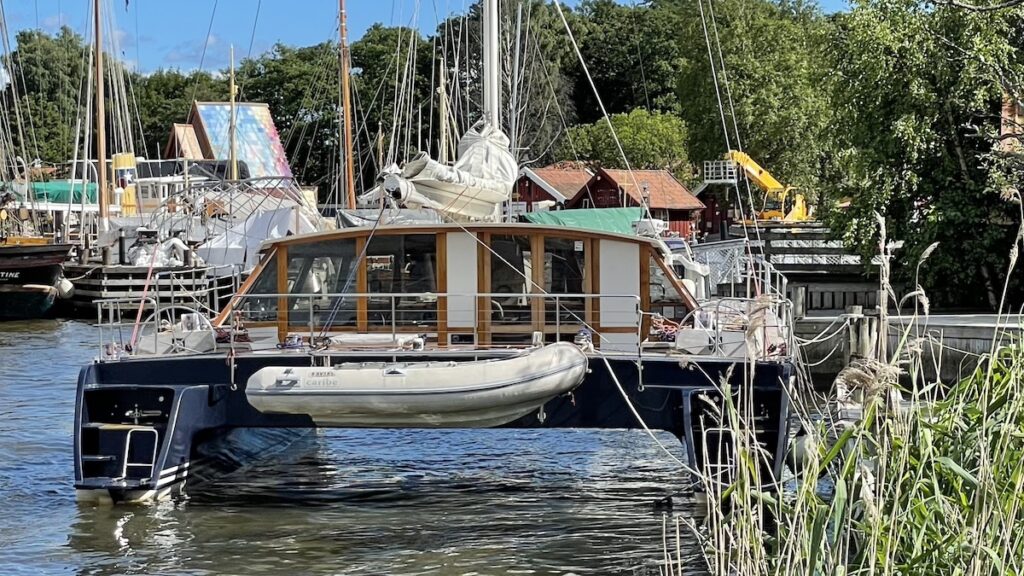
Additionally, the shallow draft of catamarans allows them to access shallow waters that are off-limits to larger boats, making them ideal for exploring secluded coves and beaches.
Overall, catamaran boats are a great choice for anyone looking for a stable, comfortable, and efficient vessel for both recreational and commercial use.
With their unique design and numerous benefits, it’s no wonder that they have become increasingly popular in recent years. Whether you’re looking to sail the open seas or explore secluded coves, a catamaran boat may be the perfect choice for your next adventure on the water. Now let’s take a more in-depth look at this type of leisure craft.
What is a catamaran boat?
A catamaran boat is a type of watercraft that features two parallel hulls connected by a deck or platform. This design provides stability, speed, and efficiency on the water, making it a popular choice for various purposes such as leisure cruising, racing, fishing, or even luxury yachting.
Catamarans have been around for centuries but have gained significant popularity in recent years due to their unique advantages over traditional monohull boats. One key characteristic of catamaran boats is their wide beam or width compared to monohulls.
This attribute allows for excellent stability and better weight distribution, providing passengers with a smoother ride even in rough waters. The wider deck layout of catamarans also offers more space for recreational activities and amenities such as sunbathing areas, dining spaces, and storage compartments.
Whether it’s a power catamaran designed for speed and efficiency or a pontoon-like sailing catamaran built for comfort and relaxation, these boats provide ample room for both functionality and comfort. Catamarans are available in various types to cater to different boating preferences.
Power Catamarans are known for their ability to navigate through the water swiftly while maintaining stability. Their twin-hull design reduces drag and allows them to maintain higher speeds with less fuel consumption compared to traditional powerboats.
On the other hand, Sailing Catamarans focus on harnessing wind power efficiently with their multiple sails and rigging systems . When considering purchasing or renting a catamaran boat, it’s important to know that different brands offer different features tailored to specific needs.
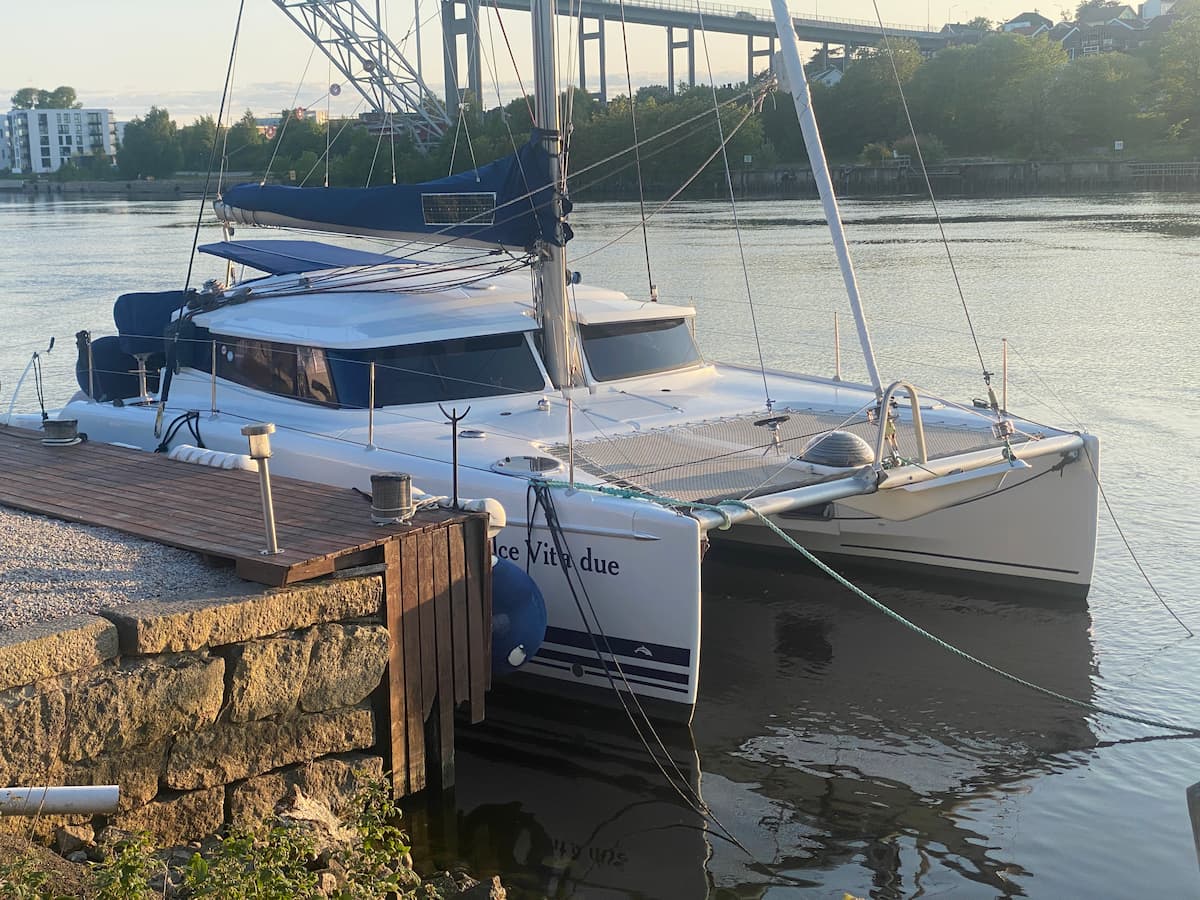
Luxury catamarans often come equipped with high-end amenities like spacious cabins, swimming pools, gourmet kitchens, and luxurious interiors designed for an extravagant experience on the water. Some popular luxury catamaran brands include Lagoon Catamarans and Leopard Catamarans.
For those looking at smaller options suitable for day trips or weekend getaways, there are various small catamaran brands to explore. These compact vessels often prioritize efficiency and ease of handling while providing enough space for a small group of people.
They are perfect for exploring coastal areas, shallow waters, or inland waterways. Catamaran boats offer a unique and versatile boating experience with their twin-hull design, wide deck layouts, and various types tailored to specific needs.
They provide stability, speed, and ample space for recreational activities or luxurious amenities. Whether it’s the power and efficiency of a racing catamaran or the comfort and relaxation of a luxury catamaran, these vessels have become increasingly popular in the boating world as they redefine the way we navigate through water.
Design and Structure of Catamaran Boats
Catamaran boats are fascinating watercraft known for their unique design and structure. The foundation of their design lies in the arrangement of two hulls, parallel to each other, connected by a platform or bridge-like structure. This configuration sets them apart from traditional monohull boats and brings forth a range of advantages that I will explore later in this article.
The design and structure of catamaran boats allow for superior stability on the water. With two hulls instead of one, catamarans have a wider beam, providing excellent balance and reducing the chances of capsizing.
This stability makes them an ideal choice for those who prefer smooth sailing experiences without sacrificing safety. Furthermore, the wide beam also contributes to maximizing living space on board.
Catamarans often boast spacious interiors that can accommodate more passengers comfortably, making them popular choices for luxury cruises or large groups seeking adventure on the open seas. Small catamaran brands often focus on enhancing space utilization while maintaining efficiency.
The deck layout of catamaran boats is carefully designed to ensure efficient movement and ease of handling. Whether it’s Power Catamarans used for leisurely activities or Racing Catamarans built for exhilarating competitions, their respective deck layouts are tailored to meet specific needs.
Another integral component is the rigging system utilized by catamarans equipped with sails. These systems consist of masts, booms, and ropes designed to optimize sail control.
The aerodynamic shape of catamaran sails contributes to increased speed and maneuverability when compared to other types of sailboats . Luxury Catamarans often incorporate innovative features such as spacious sun decks, swimming platforms, jacuzzis, or even onboard movie theaters.
These enhancements provide an indulgent experience for those seeking high-end yachting adventures. It is worth mentioning Pontoon Boats as they share some characteristics with catamaran designs due to their multihull configuration.
However, it is important to note that pontoon boats are generally used for calmer inland waters, while catamarans excel in open ocean conditions. The design and structure of catamaran boats are a testament to their engineering ingenuity.
The parallel hulls, coupled with the carefully designed deck layouts and rigging systems, contribute to their stability, speed, and spaciousness. As a result, catamaran boats have become popular choices for those seeking comfortable and exhilarating sailing experiences on both leisurely excursions and competitive races.
Types of Catamaran Boats
When it comes to catamaran boats, there exists a wide range of types catering to diverse needs and preferences.
These vessels are designed and built with specific purposes in mind, allowing enthusiasts to choose one that suits their desired activities on the water. From sailing catamarans to luxury powerhouses, there is a catamaran for every taste.
Sailing Catamarans
Sailing Catamarans are perhaps the most iconic among all types. These boats utilize the power of the wind with specialized catamaran sails to propel themselves through the water.
Sailing catamarans are known for their stability, speed, and comfortable sailing experience. They often feature spacious deck layouts with ample seating areas and come equipped with advanced rigging systems for efficient control.
Power Catamarans
On the other end of the spectrum are Power Catamarans. These boats prioritize speed and maneuverability over wind propulsion.
Powered by engines instead of sails, these vessels offer a thrilling experience on the water. Power catamarans often have sleek designs and can reach impressive speeds while maintaining stability due to their dual-hull configuration.
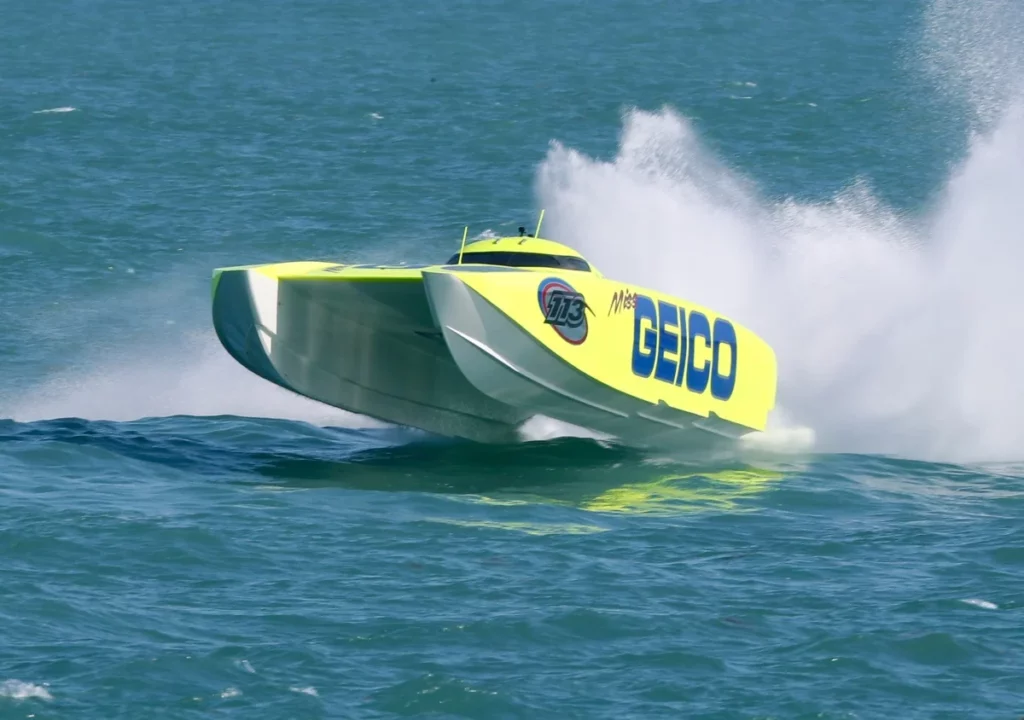
Racing catamarans
For those seeking high-performance vessels built for racing, Racing Catamarans fit the bill perfectly. These lightweight and agile boats are designed specifically for competitive sailing events where speed is paramount.
Racing catamarans feature aerodynamic hulls, advanced rigging systems, and optimized sail plans that allow them to glide effortlessly through the water at incredible speeds.
Luxury Catamarans
Luxury Catamarans cater to those who seek premium comfort and opulence on their seafaring adventures.
These high-end vessels combine exquisite interior design with top-of-the-line amenities such as spacious cabins, luxurious lounges, gourmet kitchens, and even lavish entertainment systems. Luxury catamaran brands focus on providing an unparalleled level of luxury while still ensuring superior performance on the open water.
Small Catamaran Brands offer compact options that are suitable for various recreational activities such as fishing or cruising on smaller bodies of water. These catamarans often feature simpler deck layouts with ample seating for a few passengers.
Smaller catamaran brands typically focus on affordability and versatility, making these vessels accessible to a wider range of boating enthusiasts. The types of catamaran boats available cater to a diverse range of preferences and activities.
Whether one seeks the thrill of sailing, the power of engines, the excitement of racing, or the luxury of opulent interiors, there is a perfect catamaran waiting to be discovered. From sailing catamarans with advanced rigging systems to luxury powerhouses and racing machines, these vessels offer an unforgettable experience on the water for enthusiasts of all kinds.
Advantages of Catamaran Boats
Catamaran boats offer a multitude of advantages that make them a desirable choice for boating enthusiasts. From stability to comfort, these vessels have proven themselves to be a worthwhile investment.
One prominent advantage of catamaran boats is their exceptional stability on the water. The dual-hulled design provides a wide beam, ensuring superior balance and reducing the risk of capsizing, even in rough seas .
This stability factor makes catamarans an excellent choice for those prone to motion sickness or seeking a smooth sailing experience. Another advantage lies in the generous living space and comfort offered by catamaran boats.
With two hulls instead of one, there is ample room for cabins, lounges, and other amenities. Luxury catamarans are particularly renowned for their spaciousness and lavish interiors, providing an unparalleled level of comfort during extended trips or liveaboard experiences.
Catamarans also shine when it comes to fuel efficiency. Compared to other types of vessels like powerboats or pontoon boats , catamarans generally require less horsepower to achieve similar speeds due to their lightweight construction and reduced drag in the water.
This efficiency translates into lower fuel consumption, making them an environmentally friendly option as well as more cost-effective over time. Furthermore, catamaran boats boast impressive sailing performance due to their unique rigging system and deck layout.
The wide beam allows for greater sail area compared to monohull sailboats while maintaining excellent stability. Sailing catamarans can harness the wind more efficiently with larger sails that propel them forward swiftly and gracefully through the water.
Racing enthusiasts are particularly drawn to the advantages offered by racing catamarans. These specialized vessels are designed with cutting-edge technology and aerodynamics that result in exceptional speed on the water.
The multi-hull structure allows racing catamarans to skim across waves with minimal drag while maintaining superb maneuverability. Additionally, it is worth mentioning that catamarans are available in a wide range of sizes and configurations, catering to diverse preferences and needs.
From small catamaran brands that focus on affordability and simplicity, to high-end luxury catamarans designed for opulent cruising, there is a vessel suited for every boating enthusiast. The advantages of catamaran boats are truly remarkable.
Their stability, spaciousness, fuel efficiency, sailing performance, and diverse range of options make them an attractive choice for both leisurely cruising and competitive sailing. Whether you are a seasoned sailor or a recreational boater looking for comfort on the water, exploring the offerings from various catamaran brands is sure to reveal the perfect vessel to suit your desires.
Disadvantages of Catamaran Boats
While catamaran boats offer numerous advantages, it is important to acknowledge that they also come with a fair share of disadvantages. These drawbacks, although not deal-breakers, should be considered when making a decision about purchasing or sailing a catamaran.
Firstly, one notable disadvantage of catamaran boats is their wide beam . Due to their dual-hull design, catamarans tend to have a larger width compared to monohull vessels.
While this provides stability and ample space for accommodation and deck layout, it can present challenges in terms of docking and maneuvering in tight spaces. The wider beam requires special attention when navigating marinas or crowded anchorages as it may limit access to certain berths or docking areas.
Secondly, the increased windage caused by the wider beam makes catamarans more susceptible to being affected by strong winds . The larger surface area exposed to wind can result in greater resistance and difficulties in steering during adverse weather conditions.
While modern catamaran designs have addressed this issue through improved hull profiles and efficient rigging systems, it remains an inherent characteristic that requires careful consideration. Another disadvantage lies in the potential limitations of shallow draft capabilities.
Although some catamarans are designed with retractable keels or daggerboards that enhance their ability to navigate shallow waters more effectively than monohulls, there are still limitations depending on the specific model and size of the boat. This can restrict access to certain anchorages or require cautious navigation in areas with potentially shallow shoals.
Additionally, compared to monohulls, catamarans may be perceived as less suitable for racing purposes due to their increased weight and form drag caused by their wider beam. While high-performance racing catamarans exist within specialized classes such as Formula 18 or A-Class Catamarans, they are not as widely available as monohull racing sailboats.
Therefore, those seeking competitive racing experiences may need to explore other options outside the realm of catamaran sailing. Cost can be a significant disadvantage for those considering purchasing a catamaran.
Catamarans, especially when compared to smaller monohull or pontoon boat options, tend to be more expensive due to their larger size and increased construction materials. Luxury catamarans with high-end fittings and finishes can command even higher prices.
Additionally, maintenance costs for catamarans may be higher than for monohulls due to the dual-hull structure and the complexity of certain systems such as rigging and sails. While catamaran boats offer numerous advantages such as stability, spaciousness, and efficient sailing capabilities, they also come with several disadvantages that should not be overlooked.
The wider beam affecting maneuverability and wind resistance, potential limitations in shallow draft capabilities, reduced availability of racing options compared to monohulls, and the higher overall cost are aspects one must consider when evaluating whether a catamaran is the right vessel for their needs. Understanding these drawbacks will enable potential owners or sailors to make informed decisions regarding this unique style of boat.
The Cost of Catamaran Boats
The Cost of Catamaran Boats When considering the purchase of a catamaran boat, it is crucial to delve into the cost aspect. Catamaran boats come in various sizes, designs, and configurations, leading to a wide range of prices.
The price of a catamaran boat can be influenced by factors such as brand reputation, size, construction materials, added features, and market demand. Whether you are looking for small catamarans brands or luxury catamarans capable of crossing oceans in style, there is a price range to accommodate every buyer’s preferences and budget.
Small catamaran brands usually offer more affordable options for those starting their journey into the world of multi-hull sailing. These compact vessels often range from 20 to 35 feet in length and are designed for day trips or weekend cruising.
With simpler deck layouts and fewer amenities compared to larger models, these smaller catamarans typically have lower price tags starting from around $50,000 for used boats and reaching up to $300,000 for newer models. On the other end of the spectrum lie luxury catamarans tailored for discerning buyers seeking opulent accommodations and top-of-the-line features.
These floating wonders can stretch up to 80 feet or more in length and boast sophisticated interiors that rival five-star hotels. With high-end amenities such as multiple en-suite cabins with private bathrooms, spacious lounges outfitted with modern entertainment systems, gourmet kitchens with high-quality appliances, and expansive deck spaces perfect for hosting extravagant parties or sunbathing sessions; it’s no wonder these luxurious vessels command hefty price tags ranging from several million dollars upwards.
For those interested in racing catamarans built specifically for performance-oriented sailing competitions; prices vary depending on the level of customization desired. Racing catamarans prioritize lightweight materials like carbon fiber constructions which contribute to enhanced speed capabilities on water surfaces.
Buyers should expect prices upwards of several hundred thousand dollars for professionally designed racing catamarans that incorporate cutting-edge rigging systems, advanced catamaran sails, and specialized hull shapes to maximize speed and maneuverability. Power catamarans, while sharing the multihull design with their sailing counterparts, offer an entirely different boating experience.
These motorized vessels combine stability and fuel efficiency to provide an enjoyable cruising experience for those who prefer to explore the open waterways without relying on wind power. The cost of power catamarans can vary widely depending on factors such as size, engine specifications, interior amenities, and brand reputation.
Entry-level power catamarans start around $200,000 and can reach multi-million-dollar price tags for larger models equipped with luxurious features. Ultimately, when it comes to the cost of catamaran boats; buyers need to consider their specific requirements and desired features.
It is advisable to thoroughly research different brands in order to find a vessel that best fits both budget constraints and individual preferences. Whether one seeks a small-budget adventure on a compact pontoon boat or a grandiose voyage aboard a high-end luxury catamaran ; the market offers ample choices catering to every taste and financial capacity.
Popular Brands of Catamaran Boats
When it comes to popular brands of catamaran boats, the market offers a wide range of options to suit various preferences and needs. From small catamaran brands specializing in sailing catamarans to well-established manufacturers producing luxurious power catamarans, there is something for everyone.
This section will delve into some of the renowned catamaran brands, each with its unique features and offerings. One notable brand in the world of catamaran boats is Lagoon .
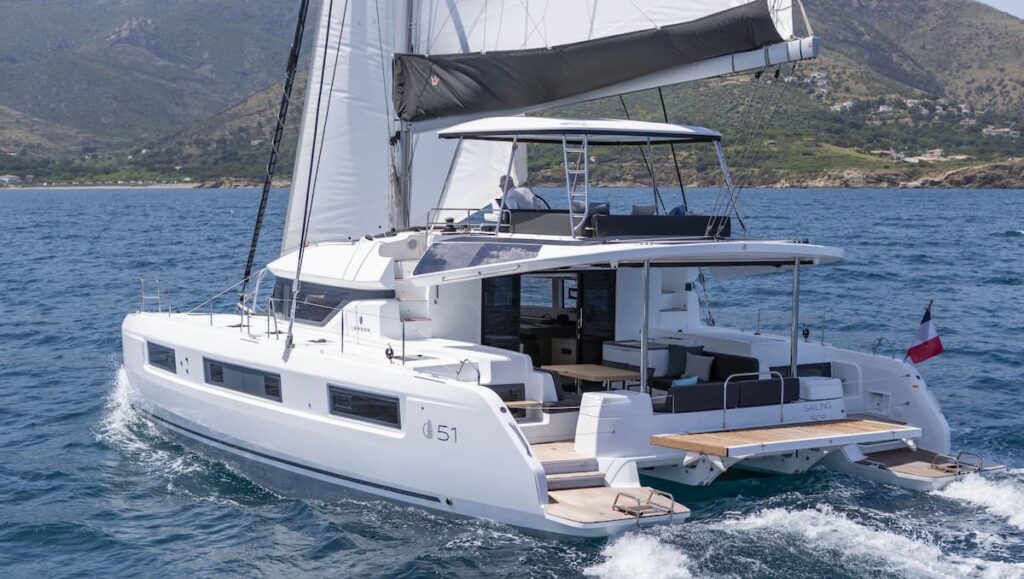
Known for their exceptional sailing catamarans, Lagoon has been at the forefront of innovative design and functionality. Their vessels are renowned for providing excellent stability on the water, spacious deck layouts, and top-quality rigging systems.
With models catering to both cruising and racing enthusiasts, Lagoon offers versatility that appeals to a wide range of sailors. Another prominent player in the industry is Leopard Catamarans.
Specializing in both sailing and power catamarans, Leopard has gained a reputation for its sleek designs and exceptional performance on the water. Their sailing models boast efficient hull shapes optimized for speed while maintaining comfort onboard.
On the other hand, their power catamarans offer remarkable fuel efficiency without compromising luxury. For those seeking luxury beyond measure, Sunreef Yachts is a brand that stands out from the crowd.
Sunreef specializes in building custom-made luxury catamarans that redefine opulence on water. With meticulous attention to detail, these floating mansions offer spacious living areas, stunning interiors adorned with high-end finishes, and an array of indulgent amenities such as Jacuzzis and private lounges.
Whether it’s for private use or charter purposes, Sunreef Yachts elevates the concept of luxury cruising. Privilege Marine has also made its mark on the industry by producing high-performance cruising catamarans loved by sailors worldwide.
Their vessels prioritize speed without compromising comfort or safety. Privilege Marine prides itself on incorporating innovative design features such as a central helm station, allowing for excellent visibility and control.
These sailing catamarans are meticulously crafted with high-quality materials, providing a luxurious experience on the water. We have Fountaine Pajot , a longstanding name in the catamaran world.
With a wide range of models available, Fountaine Pajot caters to various boating preferences and budgets. Their sailing catamarans are known for their excellent maneuverability and stability, making them popular among both seasoned sailors and novices.
Fountaine Pajot also offers power catamarans that combine performance with comfort, ensuring an enjoyable cruising experience. The world of catamaran boats is enriched by several popular brands that cater to different needs and desires.
Whether it’s small catamaran brands focusing on sailing catamarans or larger manufacturers specializing in power vessels or luxury yachts, each brand brings its unique touch to the market. From racing enthusiasts seeking high-performance vessels to those looking for opulent cruising experiences, there is a wide array of options available from renowned brands such as Lagoon, Leopard Catamarans , Sunreef Yachts, Privilege Marine, and Fountaine-Pajot.
Catamaran Boats offer a wide range of benefits and options for boating enthusiasts. The unique design and structure of catamarans provide stability, speed, and spaciousness that are unrivaled by other types of boats.
Whether you are looking for a racing catamaran to satisfy your need for speed or a luxury catamaran to indulge in the ultimate comfort and leisure on the water, there is a catamaran boat to suit your preferences. The advantages of catamaran boats cannot be overstated.
Their wide deck layout ensures ample space for socializing, sunbathing, or even hosting parties onboard. The stability offered by the twin hulls allows for easy movement on the boat without the constant swaying experienced on monohulls or pontoon boats.
Additionally, with their efficient rigging system and aerodynamic design, catamarans can harness the power of wind or motor engines to achieve impressive speeds. When it comes to catamaran brands, there are several well-established names in the market that have gained recognition for their quality craftsmanship and innovative designs.
Some popular brands include Lagoon Catamarans, Leopard Catamarans, Fountaine Pajot Catamarans, and Sunreef Yachts. These brands offer a range of options from small catamarans suitable for day trips to larger power catamarans designed for long-distance cruising.
While there are numerous advantages to owning a catamaran boat, it is important to consider some potential disadvantages as well. Due to their size and complexity, maintenance costs may be higher compared to other types of boats.
Additionally, docking restrictions may apply due to their wider beam compared to monohull vessels. However, despite these potential drawbacks, the overall appeal and popularity of catamaran boats continue to grow in recent years.
With advancements in technology and design techniques aimed at enhancing performance efficiency while maintaining comfort levels onboard, sailing enthusiasts have even more reasons to choose catamarans. Catamaran boats offer a thrilling and luxurious boating experience suitable for various purposes.
Whether you are an avid sailor seeking the excitement of racing catamarans, or a leisurely cruiser in search of comfort and style on power catamarans, the market offers an array of choices to fulfill your desires. With their exceptional stability, ample deck space, and impressive speed capabilities, catamaran boats provide an unmatched experience on the water.
So why wait? Embark on your next adventure aboard a magnificent catamaran and let the winds carry you towards an unforgettable journey filled with joy, relaxation, and breathtaking vistas.
Catamaran Boats FAQ
What are some popular brands of catamaran boats.
There are several popular brands of catamaran boats, including Lagoon, Leopard, Fountaine Pajot, and Nautitech. Each brand has its own unique features and designs, so it is important to research and compare different brands before making a purchase.
Where can I find cheap used catamarans for sale?
There are several websites where you can find cheap used catamarans for sale, such as Boat Trader, YachtWorld, and Sailboat Listings. It is important to thoroughly inspect any used boat before making a purchase to ensure that it is in good condition.
What is the difference between a catamaran and a sailboat?
A catamaran is a type of sailboat that has two parallel hulls instead of one. This design provides greater stability and speed, as well as more living space. In contrast, a traditional sailboat has a single hull and is typically slower and less stable than a catamaran .
Are catamarans safer than sailboats?
Catamarans are generally considered to be safer than traditional sailboats because of their stability and buoyancy. They are less likely to capsize or sink in rough seas, and their dual hulls provide redundancy in case of damage to one hull. However, proper maintenance and safety precautions are still necessary to ensure safe sailing.
What is the average cost of a catamaran boat?
The cost of a catamaran boat can vary widely depending on factors such as size, age, and brand. On average, a new catamaran boat can cost anywhere from $150,000 to $1 million or more. Used catamarans can be found for significantly less, but it is important to factor in the cost of any necessary repairs or upgrades.
Can catamarans be used for fishing?
Yes, catamarans can be used for fishing. Their stability and spacious decks make them well-suited for fishing, and many catamarans are designed specifically for this purpose. However, it is important to ensure that the catamaran is equipped with the necessary fishing equipment and safety features before setting out to sea.
- Recent Posts
- Responsibilities of a Fourth Engineer on Cargo Ships – September 10, 2024
- The Role of Cargo Ships in Global Trade – August 22, 2024
- Report: Yang Ming’s YM Mobility Explosion at Ningbo-Zhoushan Port – August 9, 2024
About the author
I worked as an officer in the deck department on various types of vessels, including oil and chemical tankers, LPG carriers, and even reefer and TSHD in the early years. Currently employed as Marine Surveyor carrying cargo, draft, bunker, and warranty survey.
Latest posts

Is Maritime Security Necessary on Modern Ships?
It’s vital for ships to stay vigilant. Isolation from land means having no backup or protection for miles, making them vulnerable to attacks and other threats. Equip modern ships using modern maritime security methods.
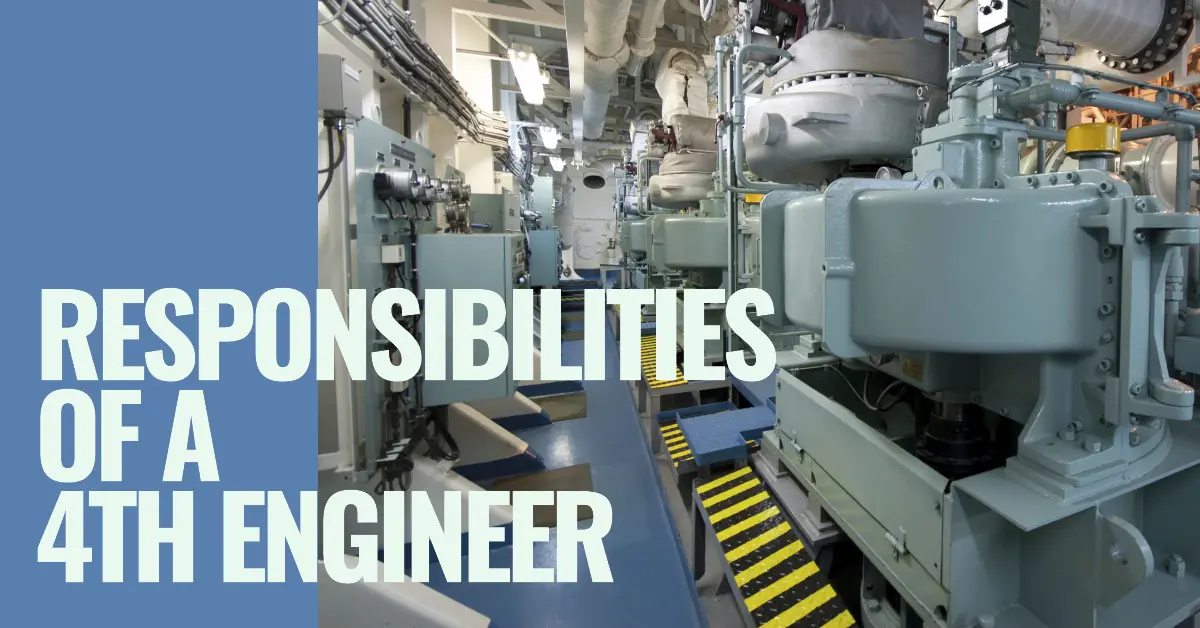
Responsibilities of a Fourth Engineer on Cargo Ships
A Fourth Engineer on cargo ships oversees engine room operations, machinery maintenance, and ensures compliance with regulations like MARPOL.

The Quality Control Process in Marine Manufacturing
Companies in the marine manufacturing space must have tight and effective quality control processes. What steps should an effective quality control process include?
Your source for the latest news on yachts, boats and more. Read through our articles to find out how to compare boats and find the right fit for you!
[Updated] The fastest cruising catamarans of 2020
Jun 26, 2020
less than a min
![cruising speed of a catamaran [Updated] The fastest cruising catamarans of 2020](https://blog.theboatapp.com/_next/image?url=https%3A%2F%2Fmdc-strapi-cms.s3.eu-central-1.amazonaws.com%2Ffastest_cruising_catamarans_2020_09f12671f1.jpg&w=3840&q=75)
Catamarans are some of the most interesting boats to roam the oceans. They are not only considered great looking vessels with plenty of space for utmost comfort, but also fast boats that you can use in races. Performance catamarans are categorized as multihulls and offer unique design features in addition to unparalleled speed.
Several lists have been compiled to categorize the best catamarans every year. Here are some of the fastest cruising catamarans of 2020 :
- Outremer Catamarans have made a name for themselves for being fast as well as fun. With the Outremer 45 as a wonderful representative, these catamarans are characterized by narrow bows and large rigs. The Outremer 45 features a smart design from Barreau-Neuman, constructed in the Outremer yard in the South of France. It is built in carbon, glass, vinylester and divinycell in order to be durable and strong. This boat can reach a maximum speed of 15 knots, with a comfortable sailing speed at 9-10 knots.
- The Privilege Signature 510 is another fast cruising catamaran, recently acquired by the German Hanse Group. It is an elegant and sportive design with an arched coach roof. It features a galley, a living area, a carbon mast, and a very appealing exterior. This catamaran costs 995,000 euros.
- The Marsaudon Composites ORC50 also makes this list. What is unique about these vessels is that they can be used for racing as well as cruising. Designed by Christophe Barreau, this boat features a sporty look with an angular coachroof, large inverted bows, a powerful rotating carbon mast, and a high freeboard. In addition, the ORC50 is a lightweight boat that allows it to gain speed quite easily.
- Next in line are the Fountaine Pajot yachts. These boats present a good balance between comfort and performance, which has been what boat owners and mariners have been looking for lately. Most of their boats are able to sail at 9-10 knots with less resistance, while still maintaining a smooth voyage for the crew. Some of the fastest cruisers from Fountaine Pajot include Astréa 42 and Elba 45 .
- Last but not least, the Gunboat 68 is a lightweight boat that is suitable for many sailing conditions. This multihull sailboat has high-aspect straight daggerboards, strong bows that manage to cut through waves, and retractable rudders. It also features different layouts that can house 4, 5, or even 6 cabins. The interior of the boat is a pure reflection of the external shape of the hull. All in all, this is an ergonomic design that aims to be flexible and easy to use by anyone on board. This catamaran costs 5.5 million euros.
These are the top five fastest cruising catamarans of 2020 according to us . Other impressive cruising multihulls include the Dolphin 42, Privilege 435, Fountaine Pajot Belize 43, Nautitech 44, Lagoon 440, Voyage 44, Outremer 45, Prout 45, and Leopard 45. Explore their features and more catamaran characteristics, keeping also a full record and management of your boating life with TheBoatAPP .
You might like these too

Electric and Hybrid Boats – The Future of Sailing
Aug 23, 2022
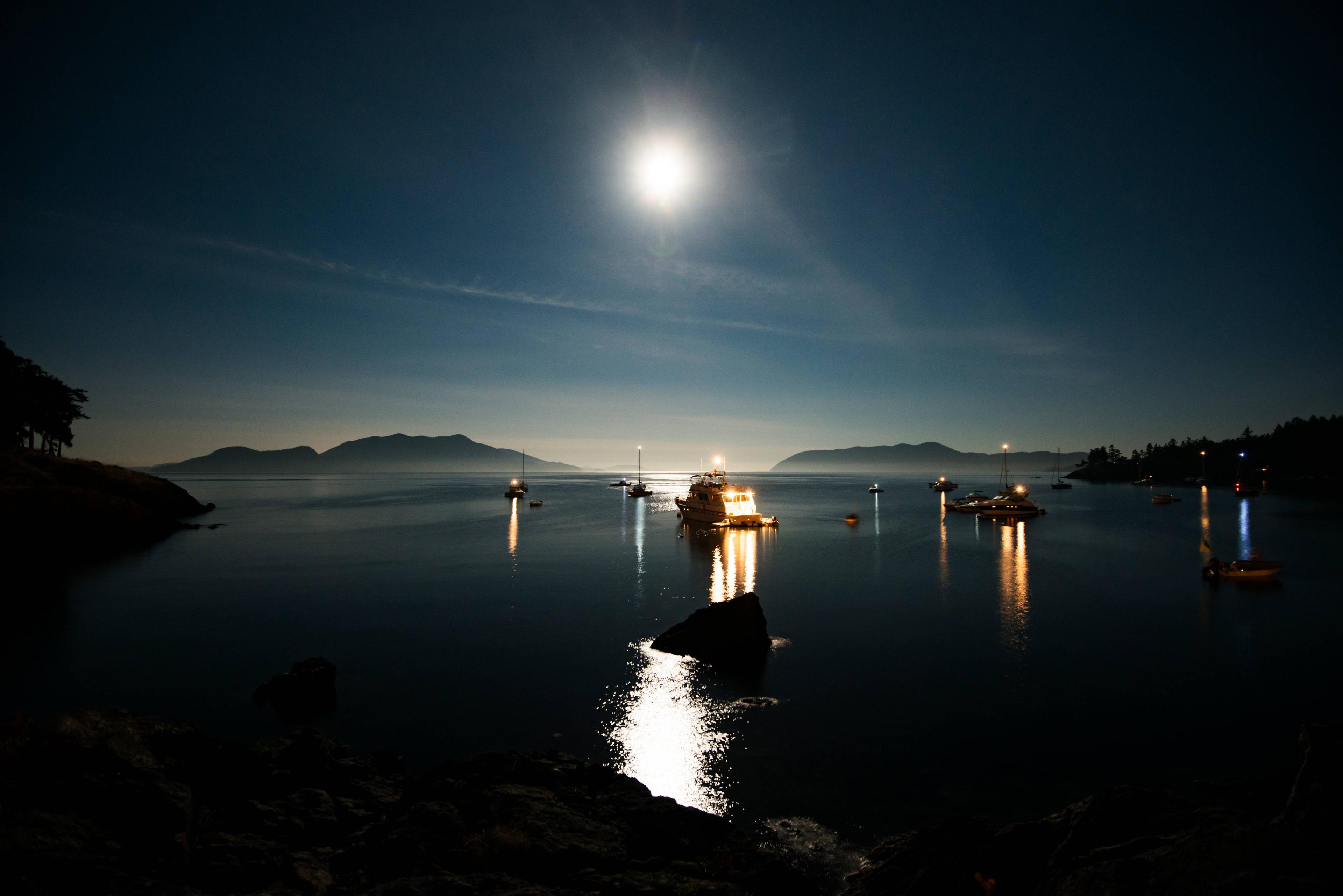
Boat navigation light types and functions

How Long does it Take to Sail Around the World
Oct 04, 2021
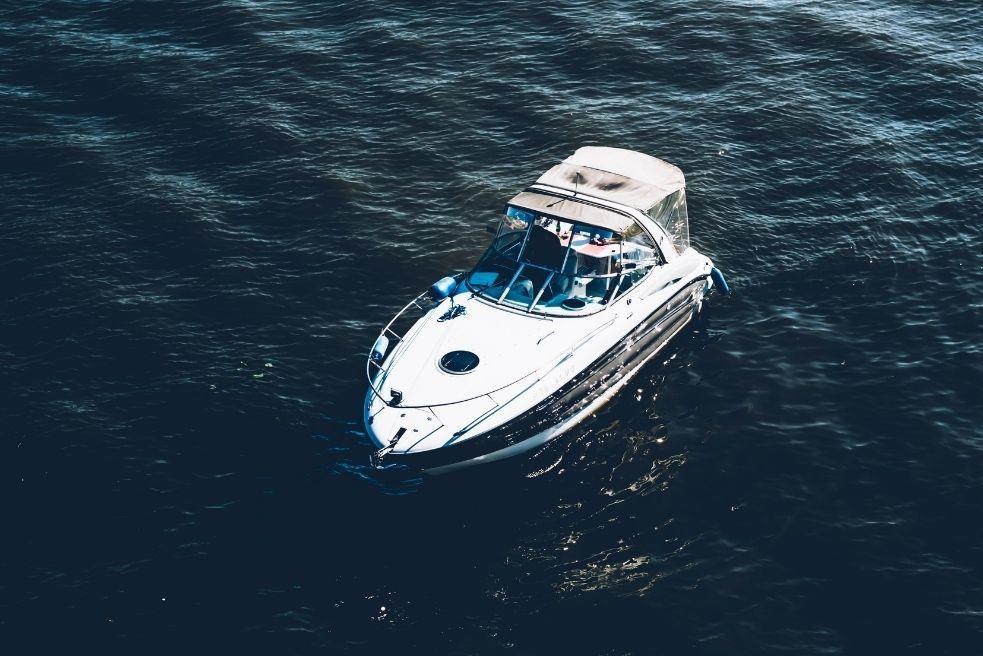
What are some Fun Things to Bring on a Boat
Oct 01, 2021
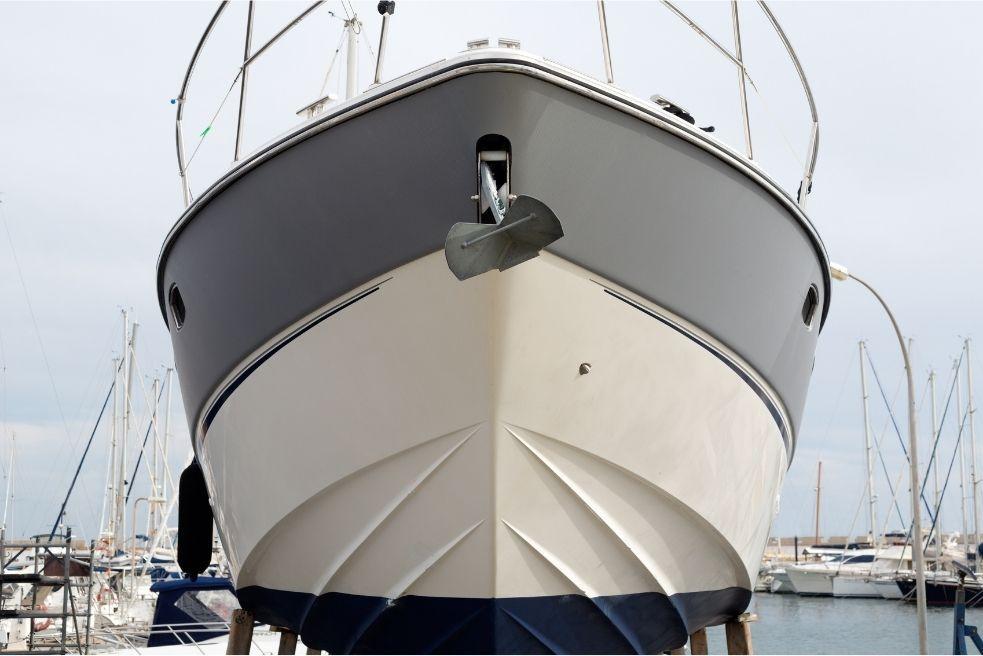
The Proper Term for the Forward End of a Boat
Sep 30, 2021
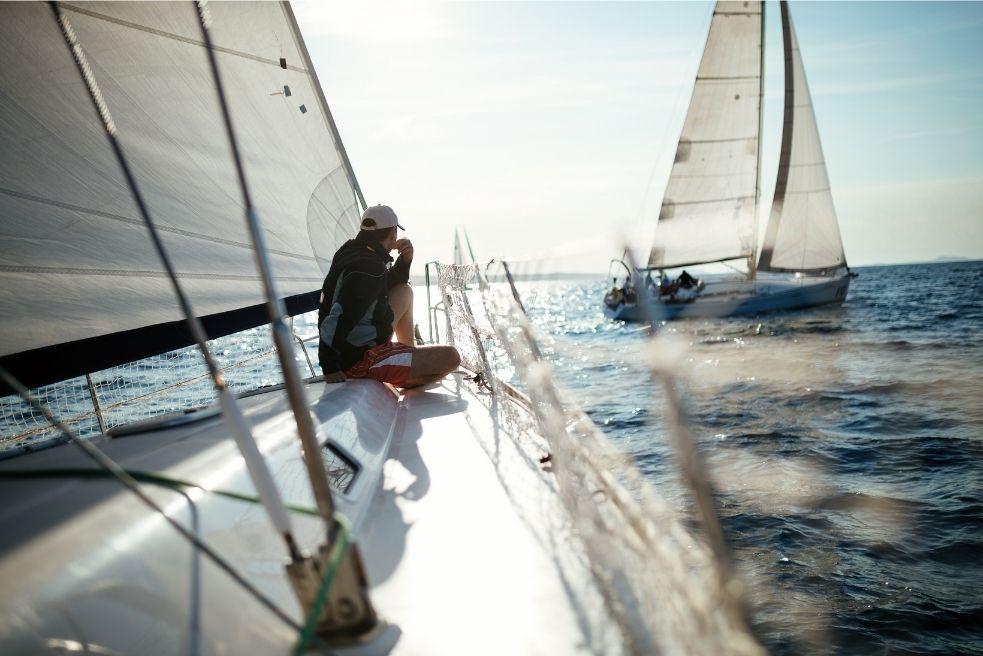
Regular Boat Maintenance Tasks You Should Always Do
Sep 17, 2021
- BOAT OF THE YEAR
- Newsletters
- Sailboat Reviews
- Boating Safety
- Sails and Rigging
- Maintenance
- Sailing Totem
- Sailor & Galley
- Living Aboard
- Destinations
- Gear & Electronics
- Charter Resources
- Ultimate Boating Giveaway

Best Cruising Catamarans
- By Cruising World Editors
- Updated: July 1, 2021
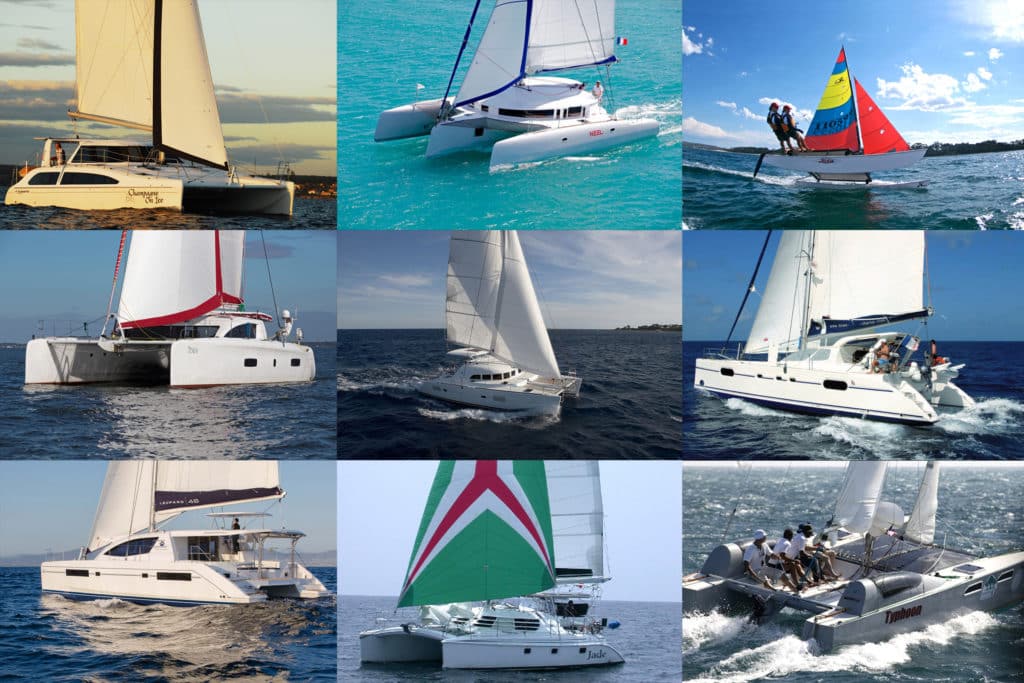
Cruising catamarans have been around for decades, but early models—often plywood and fiberglass vessels built by their owners from plans and kits, kept the boats on the fringes of mainstream sailing. That all changed, though, as big roomy cats were discovered by sailors who went off to charter in the Caribbean, where the multihulls proved their worth as comfortable liveaboard and party boats.
Today’s bluewater catamarans roam the globe, carrying families to exotic destinations across the Pacific and beyond. Just as with their monohull cousins, there is no best catamaran. Instead there is a wide variety of designs, ranging from small catamarans that offer the ease of maintenance a couple might enjoy to performance catamarans capable of easily knocking off 250-mile days. Today, the best catamaran brands offer a range of size models and layouts that can be optimized for an owner sailing with family and friends, or for the charter market, where there’s a demand for four, five and even six cabins worth of accommodations.
The most prolific catamaran manufacturers are in France and South Africa where yards include both large-run production builders and niche companies building fewer than 10 boats a year.
The best cruising catamarans offer good load-carrying ability and respectable performance. As with any sailboat , a modern catamaran’s design is a result of compromises. Daggerboards or keels? Galley up or galley down? Spacious owner’s cabin or extra bunks? There are lots of options to choose from—and that’s what makes looking at these sailboats fun!
Here, then is an eclectic A to Z list of some of the best catamarans that have helped shaped the evolution of how we live and sail on two hulls.
Antares 44i
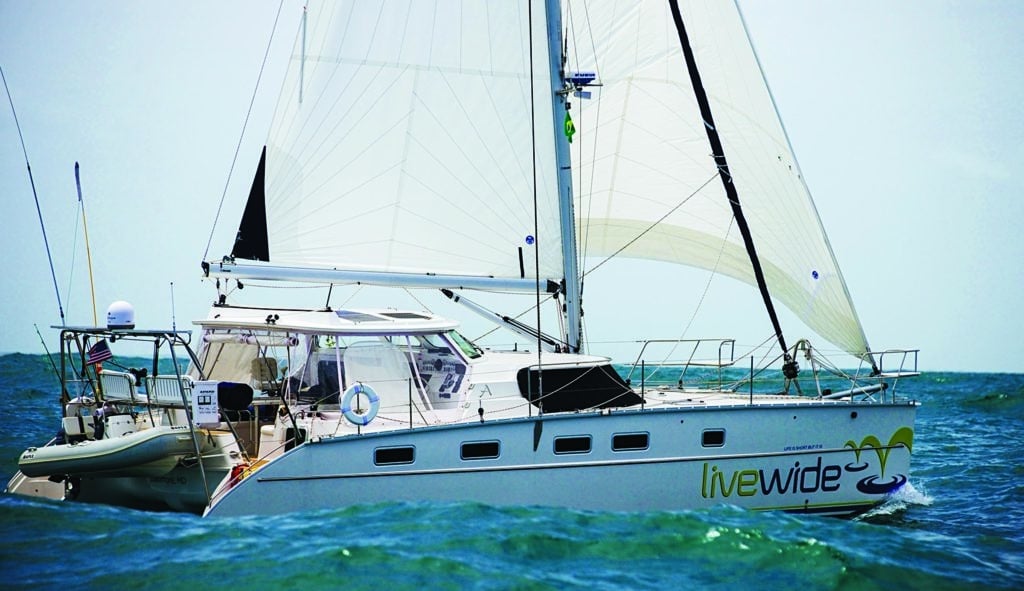
Now built in Argentina as a full-fledged, bluewater catamaran and cruiser that can be safely operated by a shorthanded couple or family crew, the Antares 44i features a fully covered cockpit with a quartet of big, standard solar panels recessed within the hardtop, one example of a yacht capable of long-range passagemaking.
Atlantic 42
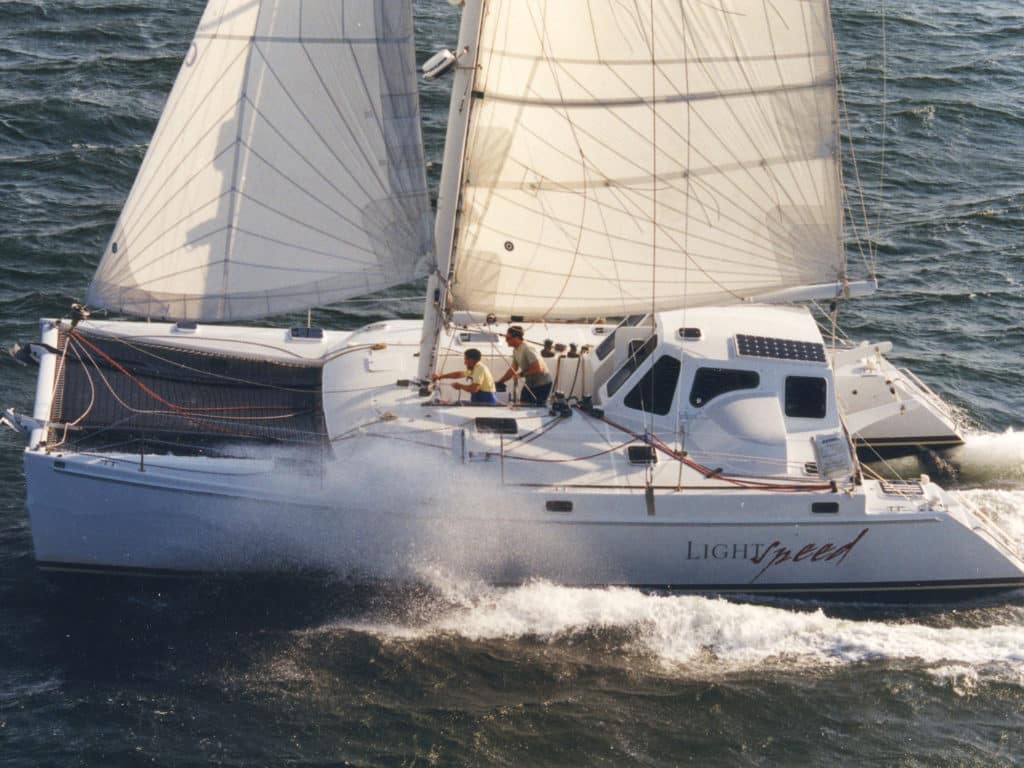
Almost 30 years ago, yacht designer Chris White revolutionized catamaran design with the first in his series of Atlantic cats, the primary feature of which was the innovative mid-ship sailing cockpit forward of the main cabin. The smallest in the Atlantic line, the 42 remains White’s most popular design ever.
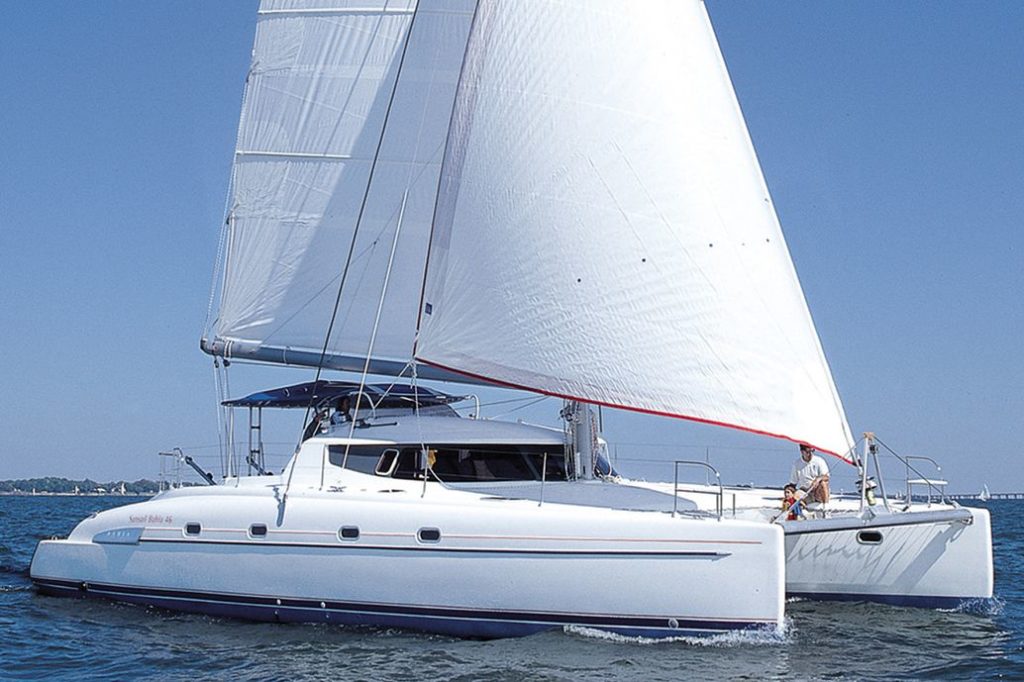
Fountaine-Pajot has built so many outstanding cruising catamarans that it’s difficult to narrow down any single boat, but we’ve always been fans of the good-looking, well-thought-out Bahia 46. At 46 feet, the boat is large enough for offshore forays and has plenty of volume; with its simple but powerful sail plan, it’s also an excellent performer.
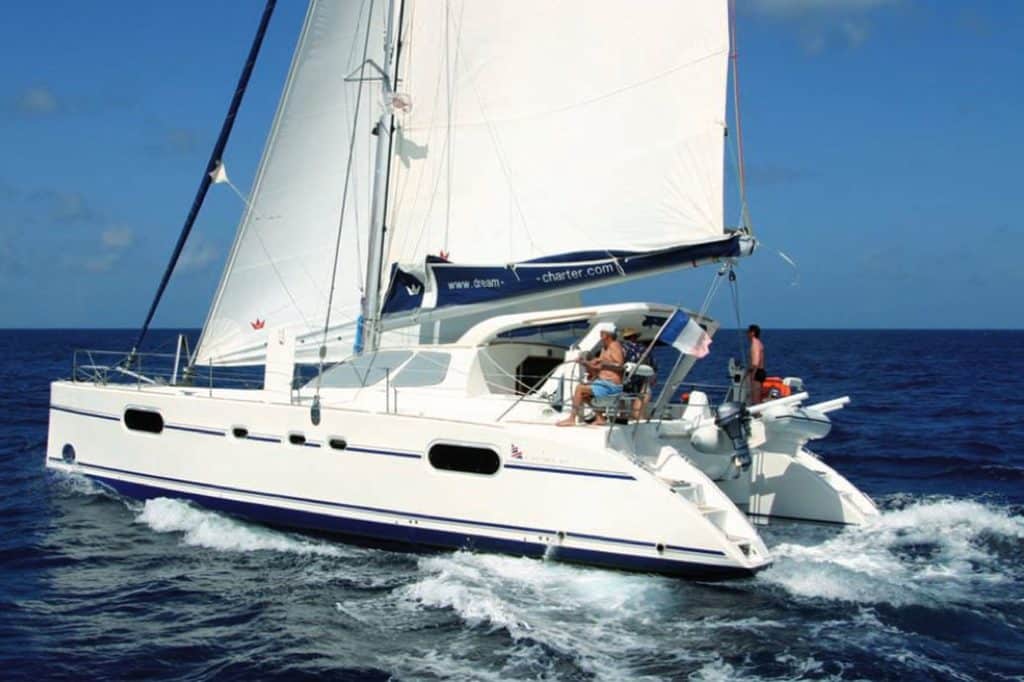
Beginning around 1996, the French builder Catana was one of the first companies to manufacture fully found cruising cats for private ownership, and this Christophe Barreau design, which enjoyed a nearly 10-year production run from 1997-2006, was emblematic of this first generation of safe, fun, long-legged offshore voyagers.
Click here to see more cats from Catana.
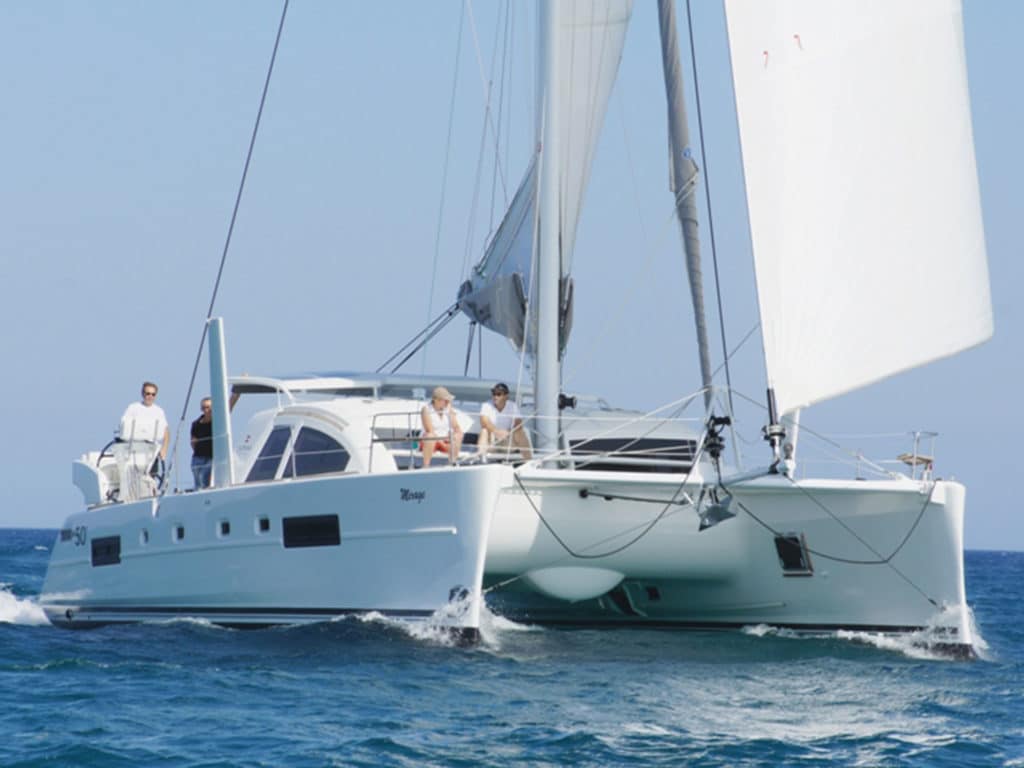
When it comes to speed, light boats are fast ones. And if you wish to save weight, that means exotic modern materials like carbon. Catana now infuses the laminates of their entire production line with carbon fiber, and for this list, we’ve chosen the Catana 50 Carbon, one of the zippiest cats now crossing oceans.
Click here to read about a couple’s charter aboard a Catana 50.
Gemini 105M
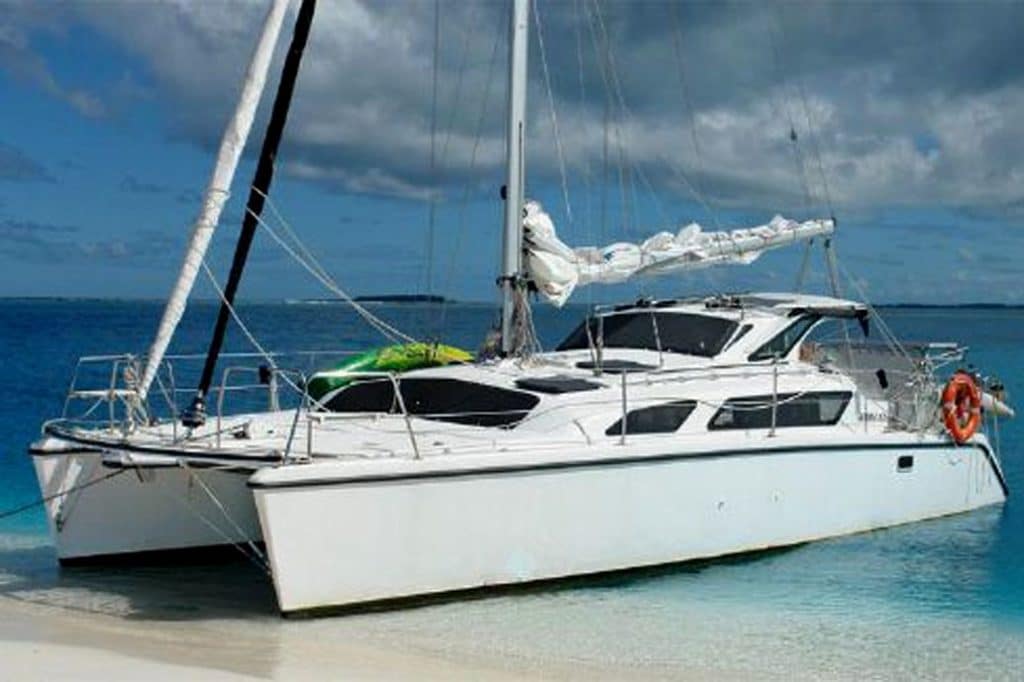
Pioneering catamaran sailor, builder and designer Tony Smith launched the first of his 33-foot Gemini 105M’s (10.5 meters = 33′) in 1993, and soon after found a ready and willing stream of sailors enamored of the boat’s compact size, affordable price tag, and such innovations as the nifty lifting rudder and transom steps.
Click here to read about the Gemini Legacy 35.
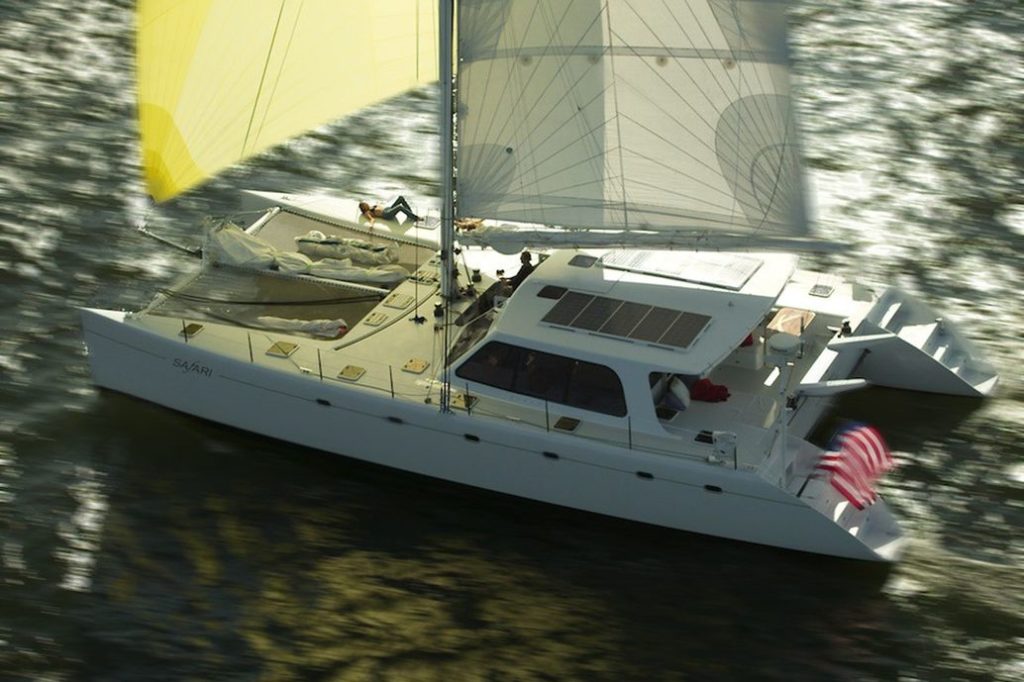
Built between 2000-2005, the Gunboat 62 firmly established the Gunboat brand: go-anywhere cats that applied race-boat technology to a world-cruising platform. Hull no. 1, Tribe, was built for company founder Peter Johnstone, who then spent a year-and-a-half cruising with his family, smiling all the way.
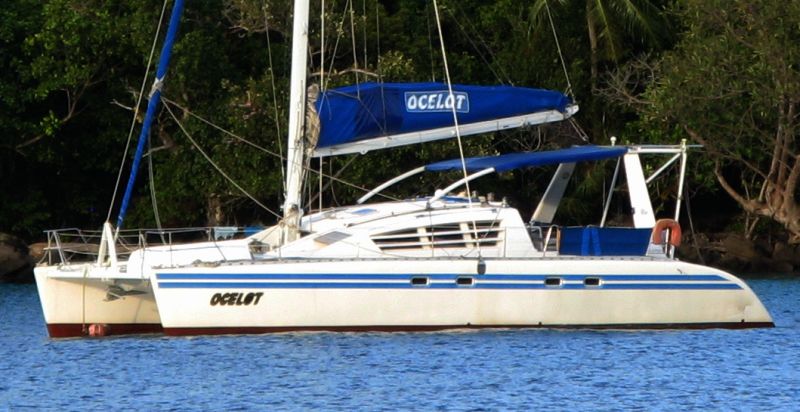
French builder Henri Wauquiez is best known for his long career building monohulls, but the Kronos 45 cat, which he launched in 1992, was ahead of her time. Classic lines, the aft “targa bar” over the cockpit, the louvered coach roof windows, even the distinctive stripes on her hull: the Kronos 45 remains timeless.
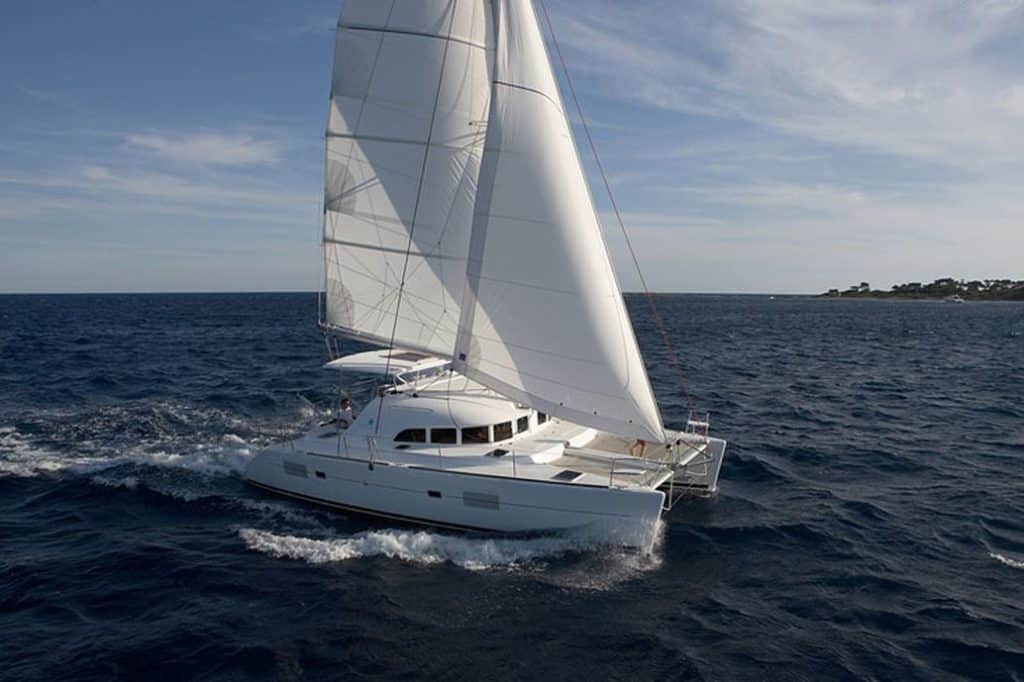
No roundup of cruising cats would be complete without several Lagoon entries, and the best of that impressive bunch might well be the Lagoon 380. Originally launched in 1999, and revered for its combination of quality, volume and performance, with over 740 boats built the 380 is still going strong.
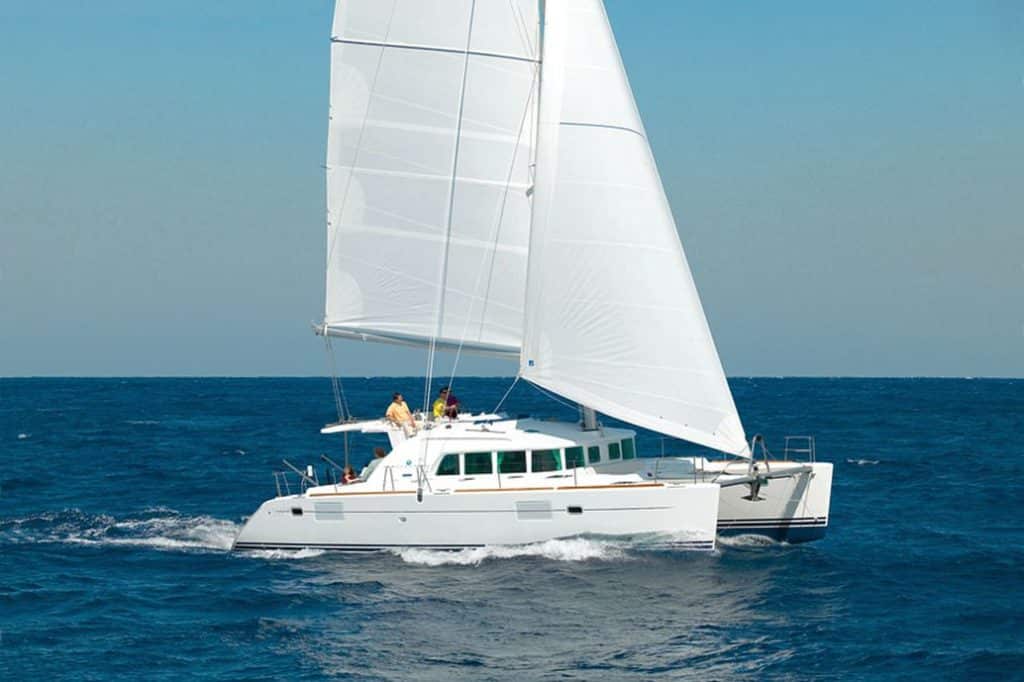
Launched five years after the breakthrough 380, the Lagoon 440 was an evolutionary design that featured a raised flybridge helm station, a unique “gullwing” configuration below the bridge deck, expanded windows in the hull and much more. With 400 boats built in a 6-year production run, the 440 was an unqualified success.
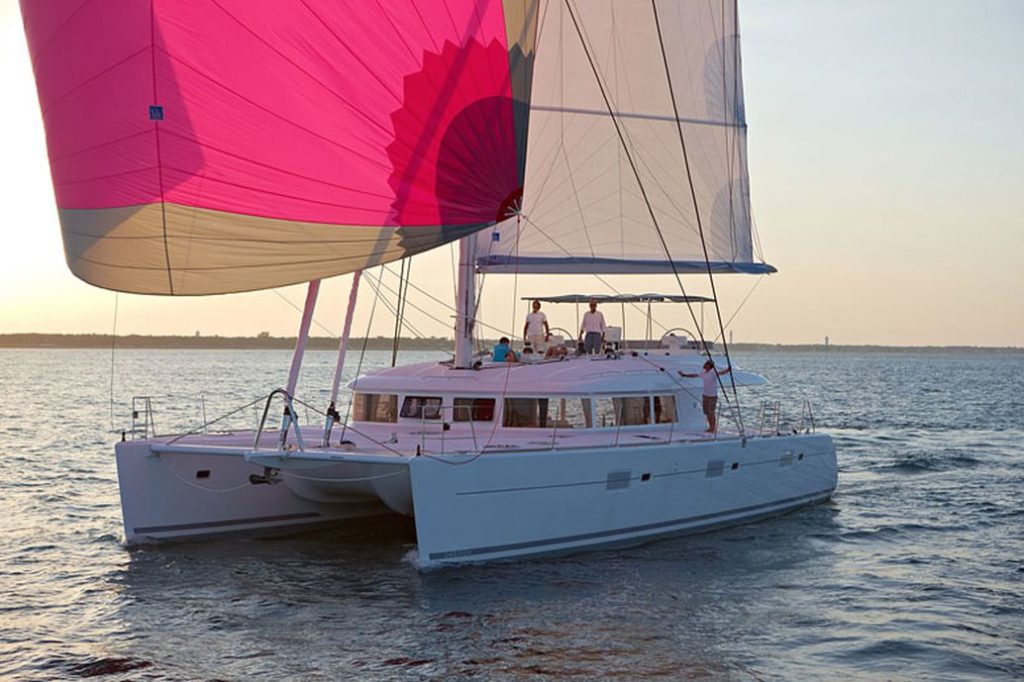
How big can a production cat, still operable by a short-handed crew, really be? The builders at Lagoon discovered that 62-feet hit a sweet spot in the marketplace, and have sold over 70 boats since its introduction in 2010. The centerpiece of this design is the sensational steering station atop the flybridge, with expansive views of the sea and sky.
Click here to see more cats from Lagoon.
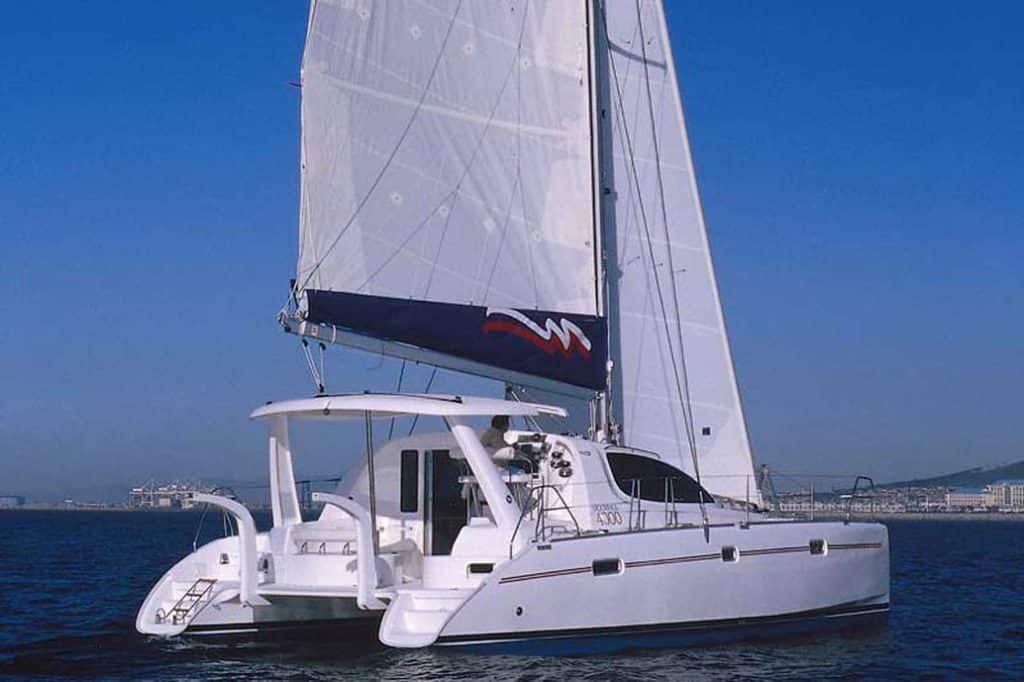
With an unmatched pedigree – designed by premier multihull naval architects Gino Morelli and Pete Melvin, built by the prestigious Robertson & Caine boatyard in South Africa, and commissioned by chartering giant The Moorings – the Leopard 40 was, perhaps unsurprisingly, Cruising World ’s Import Boat of the Year in 2005.
Louisiane 37
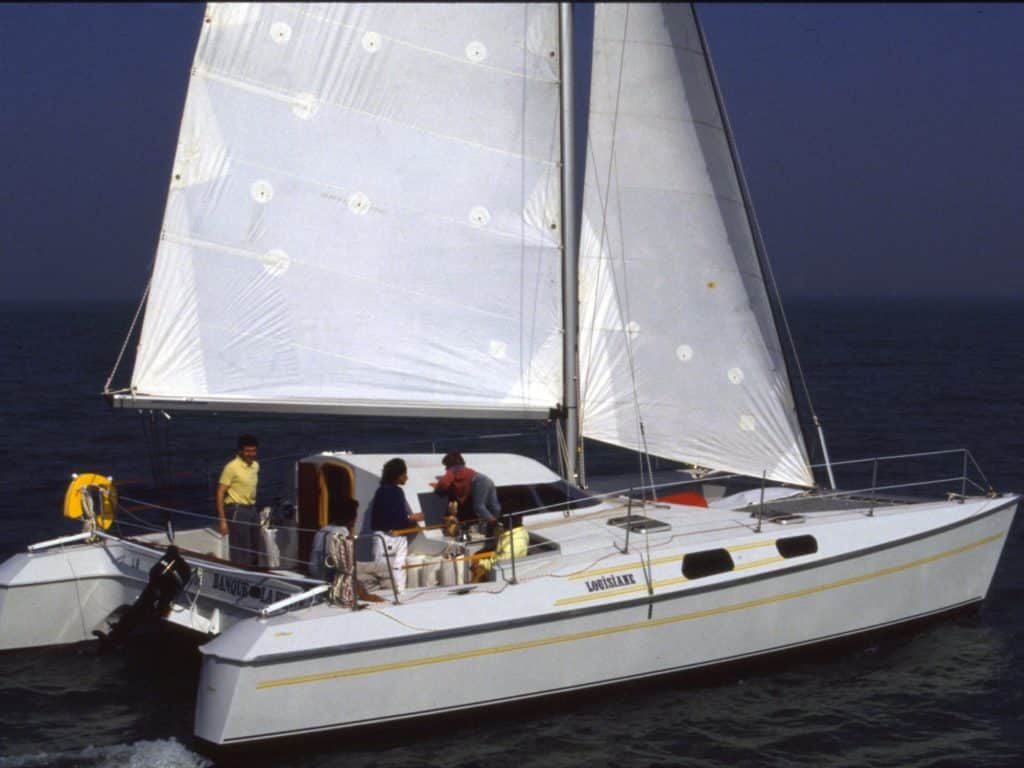
Based on the famous French racing cat Charente-Maritime, the Louisiane 37, designed by Joubert/Nivelt and launched by builder Fountaine-Pajot in 1983, was a light, fast liveaboard cruiser with full accommodations that represented a radical departure from the hefty British cats that preceded it.
Maine Cat 30
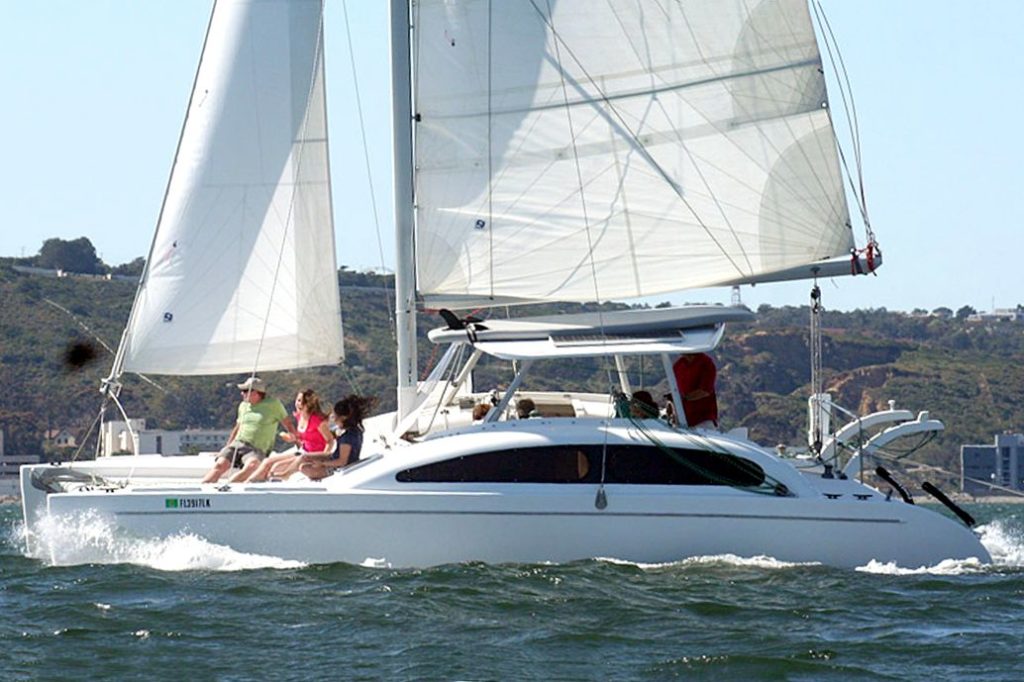
One of the more versatile and clever cats ever created, the central feature of the cool Maine Cat 30 is the open bridge deck/living room sandwiched between the hulls and canopied by a rigid, permanent hard top (the comfortable accommodations/ staterooms are stationed in the hulls). Ideal for a winter in the Bahamas but with the ability to sail offshore, it’s a boat for all seasons and reasons.
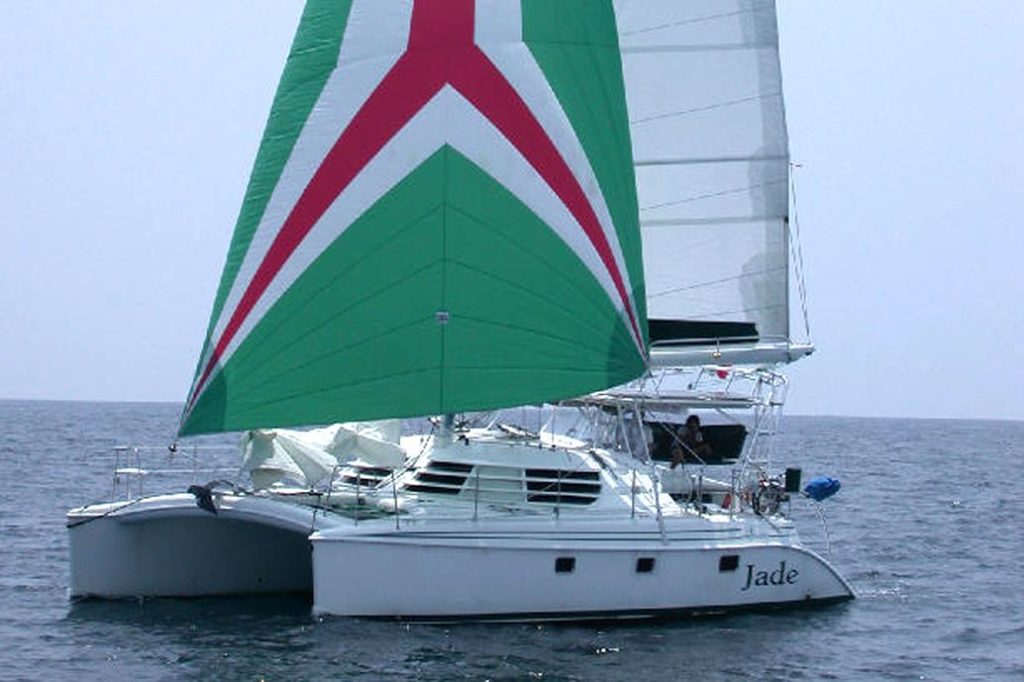
Built in Florida and beloved by the owners of the over 120 boats built during the company’s existence from 1993 to 2009, the Manta Catamarans range included 38-, 40- and 44-foot cats. For this exercise, however, we’re heralding the original Manta 42, which won the Best Value Overall prize in CW’s 2001 Boat of the Year contest.
Moorings 4800/Leopard 48
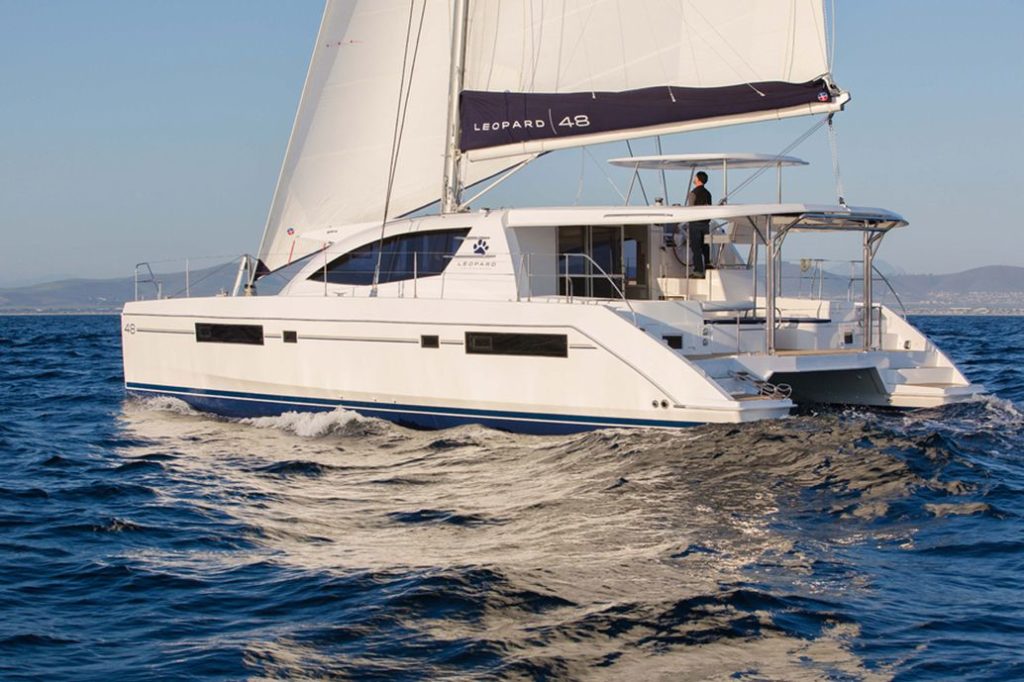
Another Leopard/Moorings collaboration built by the wizards at Robertson & Caine (though this boat was designed by fellow South African Alex Simonis), the Leopard 48 was another CW Boat of the Year winner with all the contemporary bells and whistles: forward cockpit, flybridge helm station and solid hardtop dodger, just to name a few.
Click here to read more about the Leopard 48, and click here to see more images.
Nautitech 441
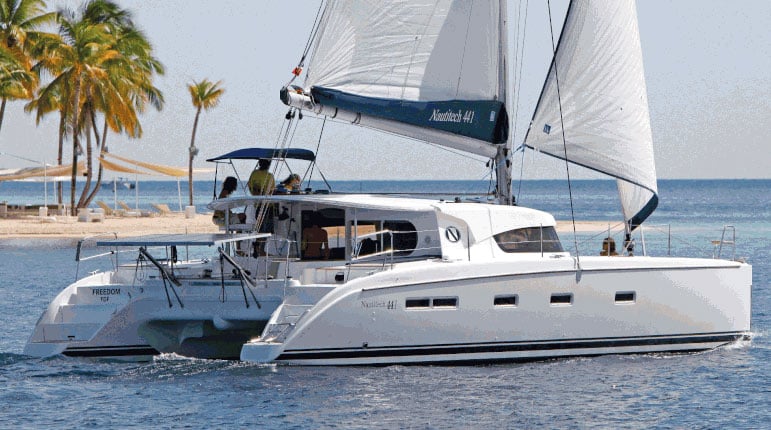
The Best Multihull Under 45 Feet: So said the CW judging panel in the 2013 Boat of the Year competition, regarding the Nautitech 441. But what makes this versatile platform so intriguing are the different helm set-ups. The 441 employs a single wheel, to starboard, ideal for solo sailors, while the 442 has a pair of helm stations aft.
Click here to see more Nautitech Catamarans.
Outremer 5X
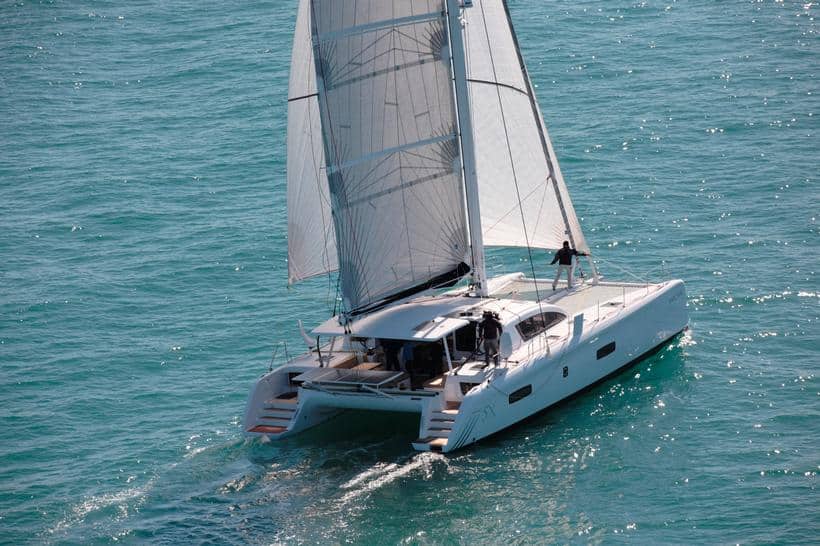
A state-of-the-art all-oceans cat that exemplifies how far multihull design has come, the 59-foot Outremer 5X was a winner on both sides of the Atlantic, taking top honors in the European Boat of the Year competition in 2013, and following up as the Best Full-Size Multihull in CW ’s contest a year later.
Click here to see more cats from Outremer.
St. Francis 50
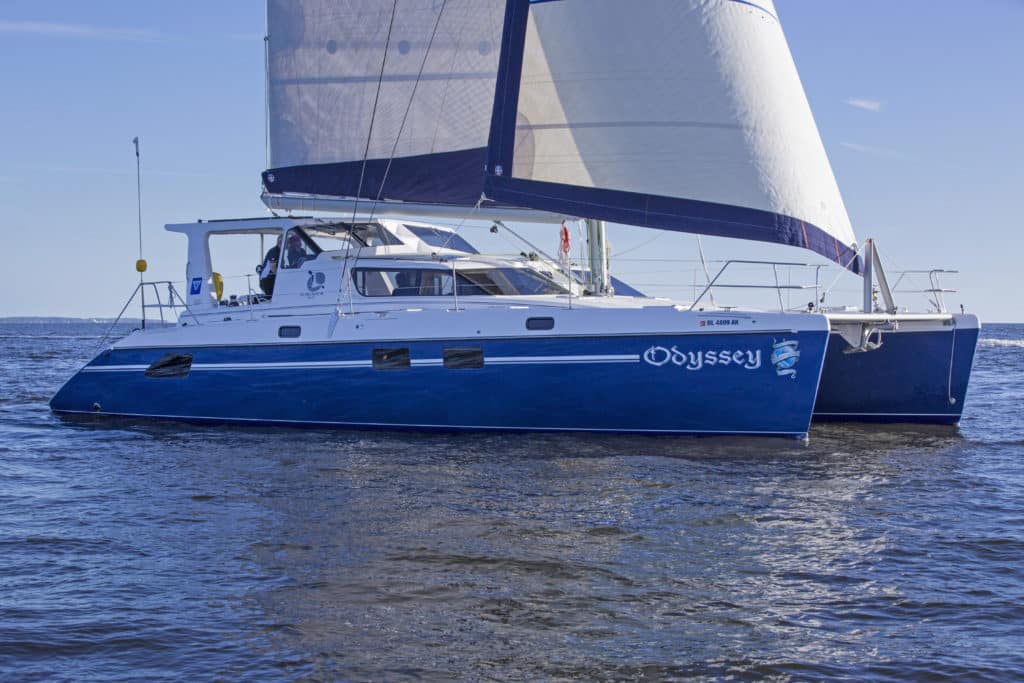
The flagship of the proud St. Francis line – built in South Africa since 1990 to designs by local legends Lavranos Marine Design – the St. Francis 50 is another “luxury cat” that shares much in common with an earlier 48-foot sister-ship, but packs even more payload into its roomier lines.
Click here to read more about the St. Francis 50
Seawind 1000
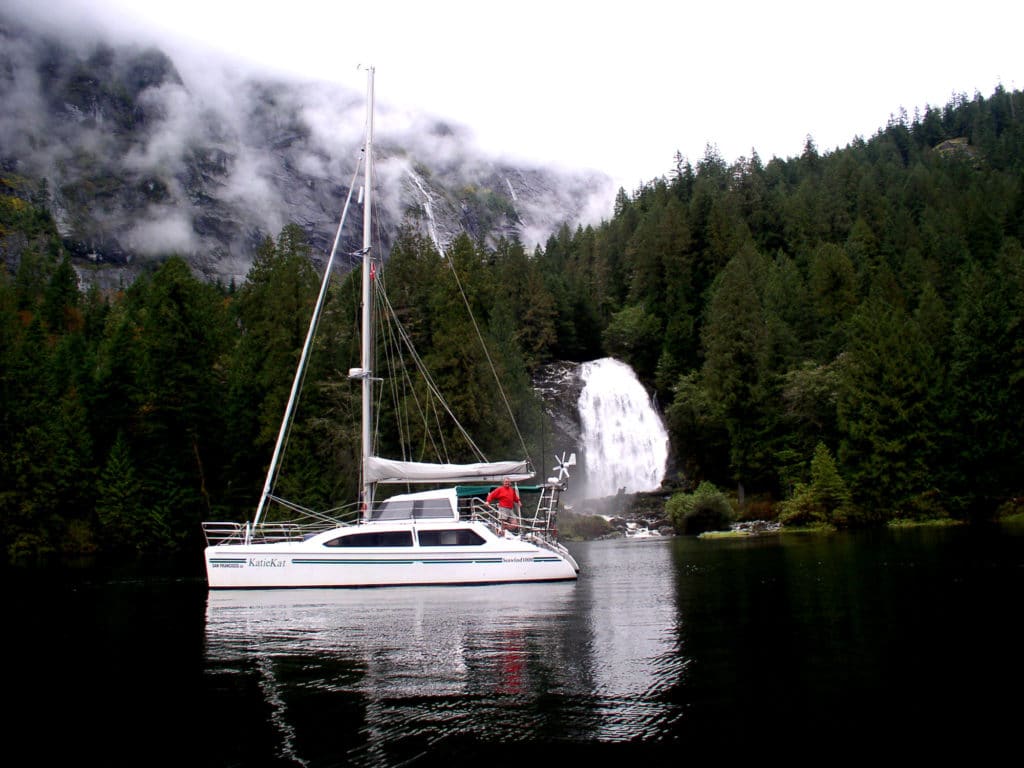
Founded by Aussie surfer and sailor Richard Ward in 1982, the 33-foot Seawind 1000 is easily the most popular cruising cat ever built in Australia (the company has since moved its manufacturing and management operations to Vietnam). Roomy and airy, these cats dot the coastline of eastern Oz.
Seawind 1160
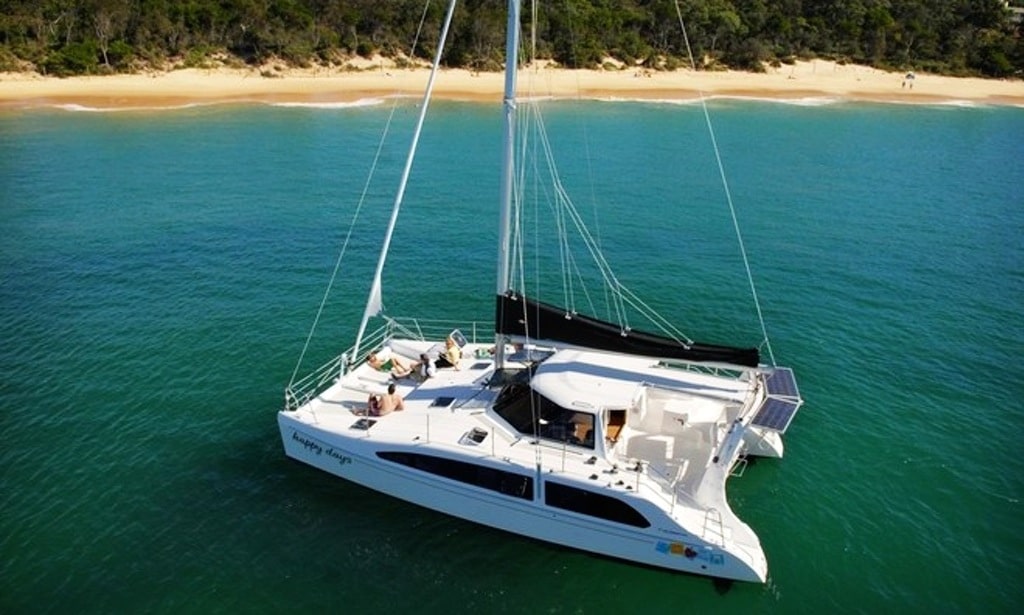
If the Seawind 1000 was a minimalist approach to cruising cats, the 38-foot Seawind 1160 is the flip side of the coin, a full-fledged long-range voyager. Among the reasons it was named CW ’s Most Innovative boat for 2007 is the unique “tri-folding” door that stashes overhead to open up the saloon and cockpit into a spacious living area.
Click here to read more about the Seawind 1160.
Sunsail 384
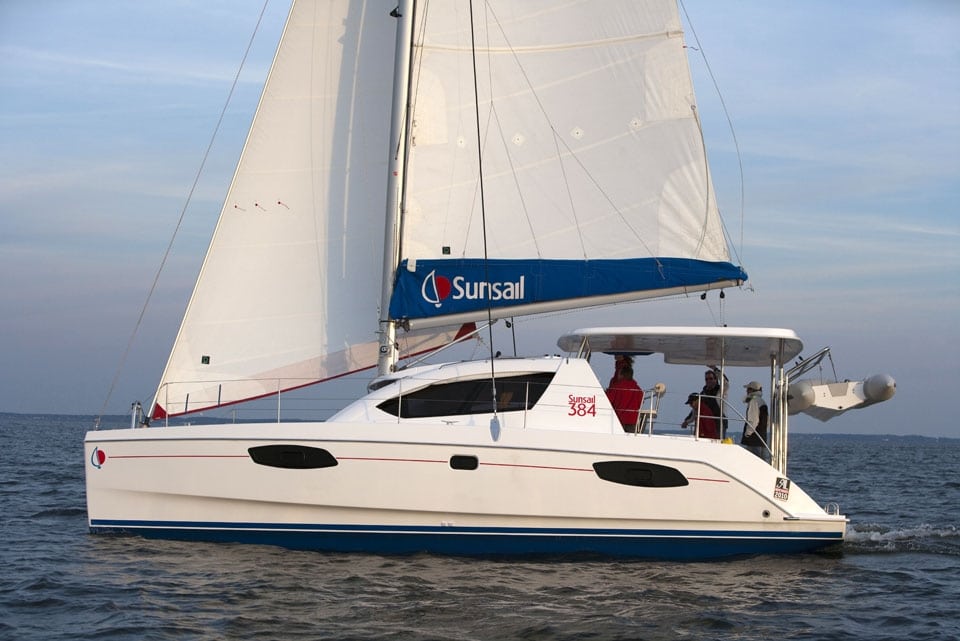
Every sailboat is a compromise, and in the case of the Sunsail 384 (also sold privately as the Leopard 38) that’s a good thing, because designers Morrelli & Melvin and builder Robertson and Caine got the balance just right with this relatively small catamaran. With four cabins, the 384 can carry the same size bareboat charter crowd as her larger siblings, but does so with a decided bounce in her step. Named CW’s Import Boat of the Year in 2010, you can gauge the success of the design by the grins on the crew as they barrel down Sir Francis Drake channel in the British Virgin Islands.
Victoria 67
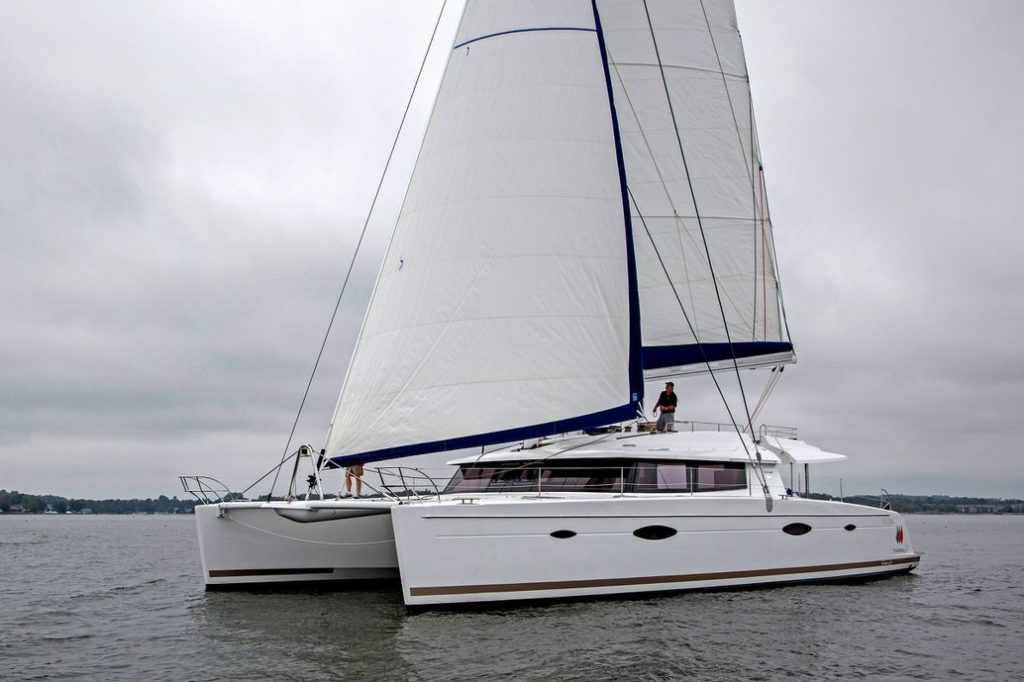
The French design office of Berret Racoupeau drafted the lines of Fountaine-Pajot’s new flagship, introduced in 2013, a magnificent world-girdling voyaging catamaran. Like other giant cats launched in recent years, the boat features a sensational upper deck with all sail controls, helm and lounging stations.
Click here to see more images of the Victoria 67.
Wharram Tanaroa
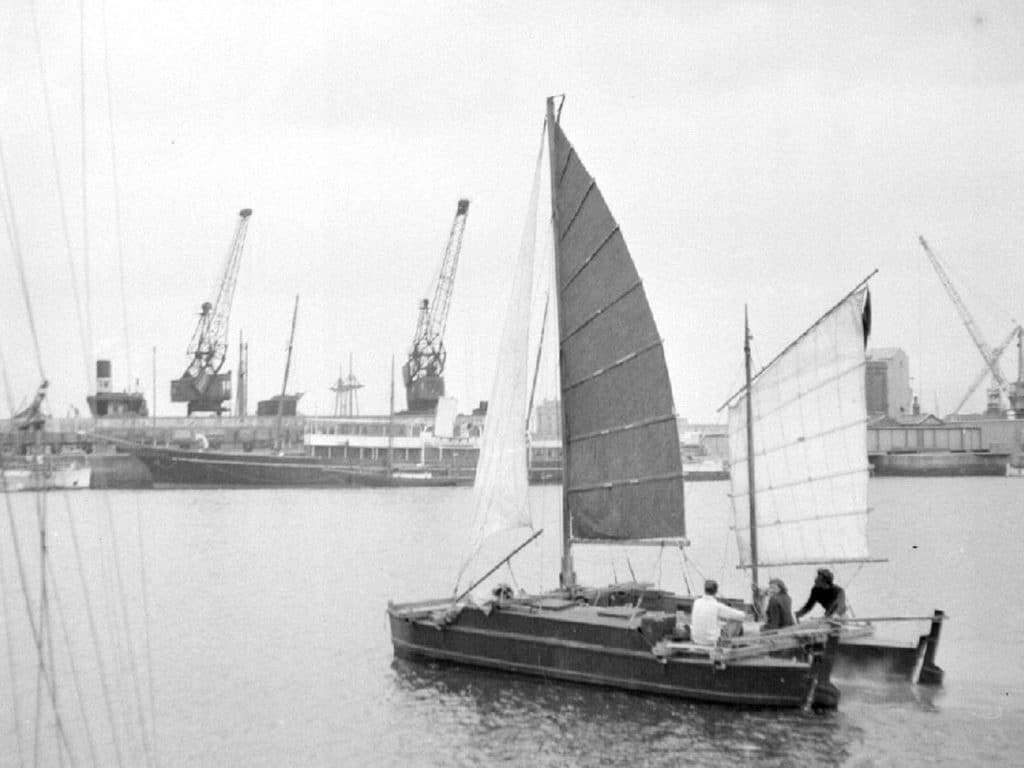
No list of influential multihulls would be complete without the work of James Wharram, and while Tangaroa wasn’t a production cat by any means, it showcases the British designer’s respect for ancient Polynesian craft. Wharram sailed this 23-foot-6-inch “double-hulled canoe” across the Atlantic in the 1950s, and sold countless plans for similar boats for decades afterwards.
- More: Boat Gallery , catamaran , multihull , Sailboat Reviews , Sailboats
- More Sailboats

Sailboat Review: Dufour 41

Pre-Owned: 1988 Hylas 47

Catalina Introduces the 6 Series

Sailboat Preview: Elan GT6 Explorer

Best Practices for Boat-Show Shopping

Savoring Superior: A Great Lakes Cruise To Remember
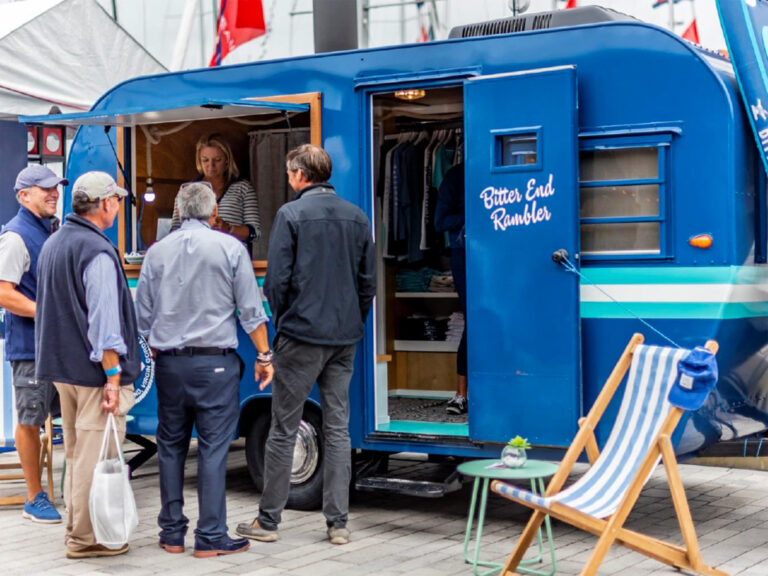
Point Your Compass Due South, Bitter End Yacht Club Reopens October 23rd.
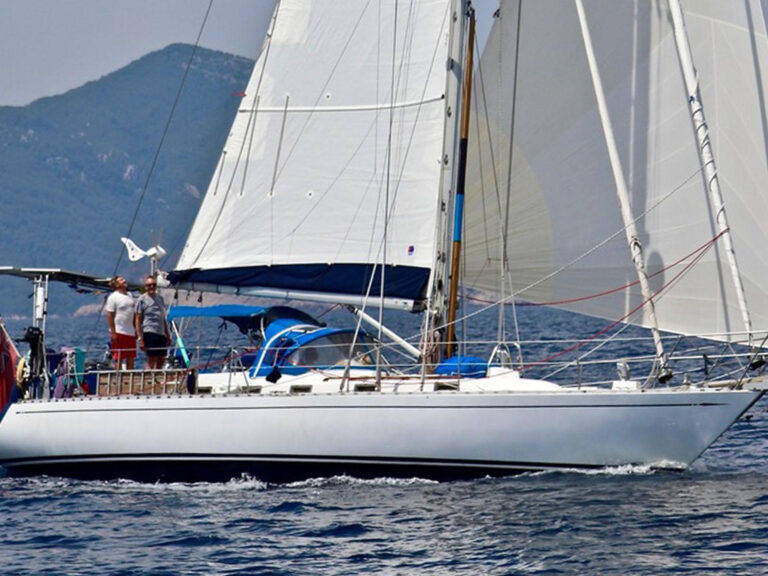
- Digital Edition
- Customer Service
- Privacy Policy
- Terms of Use
- Email Newsletters
- Cruising World
- Sailing World
- Salt Water Sportsman
- Sport Fishing
- Wakeboarding
Driving and Docking a Catamaran: Guide for Boaters
Catamarans have grown in popularity among boaters, both for recreational sailing and long-distance cruising. With their dual-hull design, they offer stability, speed, and ample space. However, driving and docking a catamaran is a unique experience compared to single-hull boats. This guide will take you through the essentials of operating and maneuvering a catamaran, covering its driving characteristics, docking tips, common challenges, and an overview of pricing and specifications for some popular models.
What Is a Catamaran?
A catamaran is a boat with two parallel hulls connected by a deck or bridge. This design provides more stability and reduces drag in the water, making catamarans faster and more efficient than monohull boats. Catamarans are known for their spacious interiors, increased living space on the deck, and shallow draft, making them perfect for coastal cruising and anchoring near shores.
There are two primary types of catamarans: sail-powered and power catamarans. Each has unique driving and docking considerations, which we’ll explore below.
Driving a Catamaran
Understanding the dual hulls.
Driving a catamaran differs from operating a monohull because of the boat’s width and the twin hulls. Here’s how the catamaran design affects driving:
- Stability : The wide stance of the hulls makes catamarans more stable, reducing rolling in rough seas. However, it also means they handle differently when turning and responding to wind or current.
- Manoeuvrability : Catamarans are agile, especially power catamarans, due to the ability to control each hull’s engine independently. This gives them better control, especially when docking or navigating tight spaces.
- Wind Influence : Catamarans are more susceptible to wind because of their large profile and lightweight design. Sail-powered catamarans especially benefit from their ability to harness wind, but this can make them tricky to drive in strong winds when compared to monohulls.
Key Differences in Driving a Catamaran
- Speed and Efficiency : Catamarans glide across the water with minimal drag, making them more efficient and often faster than their monohull counterparts. When driving, you’ll find that maintaining speed requires less fuel or wind power.
- Turning Radius : Catamarans tend to have a wider turning radius, requiring more space to make turns. However, with dual engines (on power catamarans), you can pivot the boat using differential thrust, making it possible to spin in place.
- Handling Waves : Unlike monohulls that cut through waves, catamarans ride over them. This makes for a smoother experience but also means that waves can impact both hulls differently, requiring you to adjust your steering.
Docking a Catamaran
Docking a catamaran requires a combination of skills and careful attention to the conditions. The wider beam, lighter weight, and susceptibility to wind present unique challenges. However, with some practice, catamarans can be docked smoothly and efficiently.
1. Approach at an Angle
When docking a catamaran, the first rule is to approach at an angle. This gives you more control and allows you to adjust for wind and current. A slow, controlled approach will help you compensate for any unexpected movements.
2. Use Differential Thrust
If your catamaran is equipped with twin engines, you can use differential thrust to your advantage. This involves using more throttle on one engine and less on the other to make precise movements, including rotating the boat to line it up with the dock.
3. Mind the Wind
Wind can have a significant impact when docking a catamaran, especially if the boat is light. Always dock into the wind if possible, as this gives you better control. If the wind is pushing you toward the dock, approach more slowly to avoid collisions.
4. Use Fenders and Lines
The width of a catamaran makes fender placement especially important. Place fenders along both sides of the boat to avoid damaging the hulls. Additionally, set up docking lines in advance, as this will help you secure the boat once it’s close to the dock.
5. Shallow Draft Considerations
One advantage of catamarans is their shallow draft, which allows you to dock closer to shore in many situations. However, be mindful of the depth and obstacles near the dock to prevent damage to the rudders or keels.
Common Challenges When Docking a Catamaran
- Wide Beam : The wide stance of a catamaran can make finding appropriate dock space more difficult, especially in crowded marinas.
- Windage : Catamarans are more susceptible to wind, especially when docked in open areas. Wind can easily push the boat off course, making docking more challenging.
- Limited Docking Space : Some docks aren’t designed to accommodate the wider beam of a catamaran, which may require special arrangements or berthing in less accessible areas.
Price and Specifications of Popular Catamarans
To help you understand the range of options available, here’s a look at a few popular catamaran models, including their specifications and price ranges.
1. Lagoon 42 (Sailing Catamaran)
- Length : 42 feet
- Beam : 25 feet
- Draft : 4.1 feet
- Engine : 2 x 57 HP
- Top Speed : 9-10 knots under sail
- Price : $600,000 – $750,000 (new)
- Features : The Lagoon 42 is a favorite among cruising enthusiasts, offering ample living space, a large cockpit, and easy handling. It’s ideal for long-term cruising and comes equipped with various modern amenities like solar panels and watermakers.
2. Fountaine Pajot MY 44 (Power Catamaran)
- Length : 44 feet
- Beam : 21.7 feet
- Draft : 3.8 feet
- Engine : 2 x 350 HP Volvo Penta
- Top Speed : 25 knots
- Price : $1.2 million – $1.5 million (new)
- Features : This luxury power catamaran offers high-performance engines, exceptional maneuverability, and a spacious, modern interior. With its twin-engine setup, docking is a breeze, and it’s perfect for long-distance cruising.
3. Leopard 45 (Sailing Catamaran)
- Length : 45 feet
- Beam : 24 feet
- Draft : 4.10 feet
- Engine : 2 x 45 HP
- Top Speed : 9-11 knots under sail
- Price : $700,000 – $850,000 (new)
- Features : Known for its robust build and reliability, the Leopard 45 is a versatile sailing catamaran that offers a well-appointed layout, plenty of deck space, and easy access to the helm for simplified docking.
4. Sunreef 50 (Luxury Catamaran)
- Length : 50 feet
- Beam : 30.8 feet
- Draft : 5.7 feet
- Engine : 2 x 80 HP
- Top Speed : 12 knots under sail
- Price : $1.7 million – $2.5 million (new)
- Features : Sunreef catamarans are synonymous with luxury. The Sunreef 50 is a perfect example, featuring expansive living quarters, a luxurious master suite, and customizable layouts. It’s ideal for those looking to cruise in style.
Driving and docking a catamaran is an exciting and rewarding experience, but it comes with unique challenges. Whether you’re handling a sailing catamaran or a power catamaran, understanding how to control the vessel’s dual engines, accounting for wind, and mastering differential thrust are key to a smooth ride and docking. With time and practice, you’ll find that catamarans offer unparalleled comfort, performance, and stability on the water.
If you’re considering purchasing a catamaran, it’s essential to consider your boating style, desired features, and budget. From the agile Lagoon 42 to the luxurious Sunreef 50, there’s a wide range of catamarans available, each designed to provide a unique experience on the water.
Whether you’re a seasoned sailor or new to boating, mastering the art of driving and docking a catamaran will open up a world of adventure on the open sea. Happy sailing!
Happy Boating!
Share Driving and Docking a Catamaran: Guide for Boaters with your friends and leave a comment below with your thoughts.
Read How to Choose a Life Raft for Your Boat: The Complete Guide until we meet in the next article.
Similar Posts

Fort Lauderdale International Boat Show (FLIBS): Preview Guide
The Fort Lauderdale International Boat Show (FLIBS) is a premier event that brings together boating enthusiasts, marine professionals, and exhibitors from around the world. As the largest in-water boat show on the planet, FLIBS promises to be an unforgettable experience, showcasing an extensive range of boats, yachts, marine products, and lifestyle brands. This preview guide…

9 U.S. Presidents Who Loved Boating: Nautical History
Throughout U.S. history, numerous presidents have had a love for the water. Whether they enjoyed sailing, yachting, fishing, or simply cruising, boating has been a popular pastime among several commanders-in-chief. These presidents not only found relaxation on the water but also used their boating experiences to connect with the American people, recharge their minds, and…
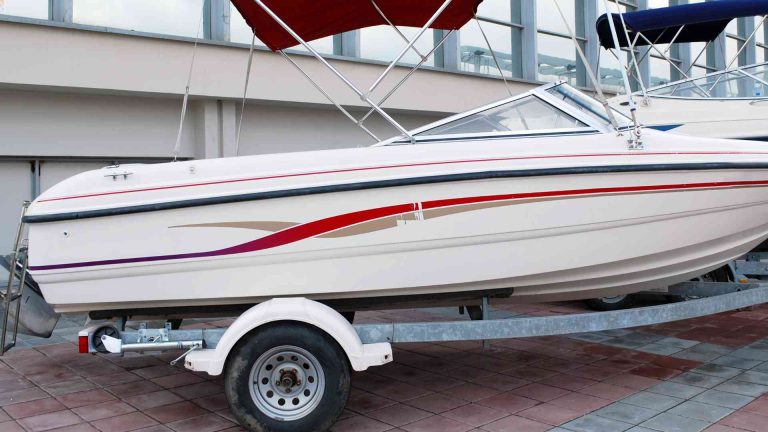
9 Key Considerations When Selecting Boat Trailer Tires
Setting out on the water, with the boat hitched securely to its trailer, is a moment of anticipation and excitement for any boating enthusiast. Yet, amidst the thrill, there’s a vital component that often remains unsung but holds immense importance: the boat trailer tires. These unassuming circles of rubber are the unsung heroes of towing,…

Pontoon Games: Fun Activities to Enjoy on the Water
Pontoons are known for their spacious decks, stability, and versatility, making them perfect for a wide range of recreational activities. Whether you’re out for a leisurely cruise, hosting a party, or enjoying a family outing, incorporating games into your pontoon experience can elevate the fun. This comprehensive guide explores various pontoon games, ensuring there’s something…

How Long Do Boat Batteries Last? Facts and Maintenance Tips
Boat batteries play a vital role in powering essential systems and equipment on board, making them a crucial component for any boat owner. From starting the engine to running navigational electronics and powering various amenities, a reliable and well-maintained boat battery is key to a successful and enjoyable boating experience. Understanding the lifespan of boat…

How to Choose the Right Dock Lines for Your Boat?
Dock lines are one of the most essential pieces of equipment for any boat owner. These lines are what keep your boat securely fastened to a dock or mooring, protecting it from drifting away, getting damaged by collisions, or even capsizing in rough conditions. Choosing the right dock lines for your boat is crucial for…
Visit our Popular Forums
- Monohull Sailboats
- Multihull Sailboats
- Powered Boats
- General Sailing
- Antares Yachts
- Fountaine Pajot
- Lagoon Catamarans
Cruising Business
- Boat Classifieds
- General Classifieds
- Crew Positions
- Commercial Posts
- Vendor Spotlight
Life Aboard a Boat
- Provisioning: Food & Drink
- Families, Kids, & Pets Afloat
- Recreation, Entertainment, & Fun
- Boat Ownership & Making a Living
- Liveaboard's Forum
Seamanship, Navigation & Boat Handling
- Seamanship & Boat Handling
- Training, Licensing, & Certification
- Health, Safety, & Related Gear
- Rules of the Road, Regulations, & Red Tape
Engineering & Systems
- Const. / Maint. / Refit
- Product / Service Reviews
- Electronics: Comms / AV
- Electrical: Batts / Gen / Solar
- Lithium Power Systems
- Engines & Propulsion
- Propellers & Drive Systems
- Plumbing / Fixtures
- Deck Hdw: Rigging / Sails
- Aux. Equipment & Dinghy
- Anchoring & Mooring
Photo Categories
- Member Galleries
- Life Onboard
- Sailing in the Wind
- Power Boats
- Cruising Destinations
- Maint. & Boat Building
- Marine Life
- Scuba Diving & Divers
- General Photos
Recent Photos

Listing Categories
- African Cats
- view more »
- Crew Wanted
- Crew Available
- Enhance Your Account
- Meet the Mods
- Meet the Advisors
- Signup for The Daily Cruiser Email

| |||||||||||||||||||||||||||||||||||||||||||||||||||||||||||||||||||||||||||||||||||||||||||||||||||||||||||||||||||||||||||||||||||||||||||||||||||||||||||||||||||||||||||||||||||||




COMMENTS
Sailing cruising catamarans can travel at an average of 9-15 knots and max out around 35 kts. Power Cruising catamarans have a maximum speed of 70 knots but averages around 20-25 kts. How fast a catamaran can go also depends on the load it is carrying, its structural design, and its engine power.
Gunboat 68 (+35Kts) Gunboat 68 is a cruising catamaran designed to reach the highest speeds possible. Made by Gunboat, the ship uses Grand-Prix racing boats' designs to develop the speediest cruising catamaran on the market. Gunboat 68 is made entirely from carbon composites, which keeps the ship lightweight and fast.
Cruising catamarans are designed primarily for safety and comfort. They're often used for long offshore passages, where speed is important, but comfort is king. Despite their accommodations, cruising catamarans can still achieve a respectable 15 to 20 knots of speed—sometimes 50% faster than similarly-equipped monohulls.
For anyone less performance orientated in their catamaran cruising, the key for upwind sailing is a strong, flat jib that is not too big. ... A Code 0 can double or even triple the boat speed: in ...
The Lagoon 450 came in at 141 versus the FP Helia 44 at 144. Interestingly the Leopard 45 came in with better numbers than the Lagoon and the FP as follows: Bruce number - 1.25; Base Speed 10.65; KSP 7.68 and TR 122. The numbers for Antares PDQ44 are very similar to the Helia 44 and Lagoon 450.
2) Cruising Catamarans. Another type of sailing catamaran is a cruising catamaran. These often come with complete living accommodations, so they sacrifice speed over their sportier counterparts. They can average between 9 and 10 knots, depending on the conditions. The top speed is typically around 15 knots.
Speed and Efficiency. Power catamarans have gained popularity for offering a unique combination of speed, efficiency, and stability. Their dual-hull design allows for less water resistance, ... When it comes to cruising catamarans, the Lagoon brand is synonymous with luxury and comfort. With a range of sailing catamarans from 40 to 70 feet long ...
The crew wrote a detailed report of the experience and the boat's performance. CONDOR exceeded 30 knots occasionally, but average speeds were between 14 and 17 knots. Their best 24 hours saw 328 nm (an average speed of 13.7 knots). The company motto says it all. "Life is too short to sail a slow boat.".
Sailing catamarans come in all different shapes and sizes. Some are optimized for living space and comfort, while others are designed with fast cruising speeds being the sole goal of the boat. The Gunboat 68, one of the fastest cruising sailboats currently made, can exceed 30 knots.
The Fastest Cruising Catamarans Currently on the Market. The world of luxurious and high-performance catamarans is probably mostly dominated by Gunboat and HH Catamarans leading the way. Gunboat's 68ft, 72ft, and 80ft models excel with speeds over 30 knots, thanks to cutting-edge materials and construction techniques.
By Zuzana Prochazka. December 24, 2015. Outremer Yachting, a French builder of performance cruising catamarans, stretched their wildly successful 49-footer to create the Outremer 51. They also added some hard angles to the transoms and coachroof, and incorporated owner feedback to improve livability. Outremer has an almost cult-like following ...
The Outremer 4x is a stable and comfortable high-speeding cruising catamaran that performs ocean crossings and confronts any weather with remarkable ease. Named the European Boat of the Year in 2017, this 48-foot (14.6 m) bluewater cruiser sails faster than wind speed and attains maximum cruising speeds of 20 knots.. The 4x is an upgrade of the extremely popular Outremer 45, thus retaining ...
A catamaran boat is a type of watercraft that features two parallel hulls connected by a deck or platform. This design provides stability, speed, and efficiency on the water, making it a popular choice for various purposes such as leisure cruising, racing, fishing, or even luxury yachting. Catamarans have been around for centuries but have ...
It is built in carbon, glass, vinylester and divinycell in order to be durable and strong. This boat can reach a maximum speed of 15 knots, with a comfortable sailing speed at 9-10 knots. The Privilege Signature 510 is another fast cruising catamaran, recently acquired by the German Hanse Group. It is an elegant and sportive design with an ...
The best cruising catamarans offer good load-carrying ability and respectable performance. ... Catana 50 Courtesy of Catana Catamarans. When it comes to speed, light boats are fast ones. And if you wish to save weight, that means exotic modern materials like carbon. Catana now infuses the laminates of their entire production line with carbon ...
This story originally appeared in the November/December 2021 issue of Passagemaker magazine. Jim Leshaw Catamaran Great Loop multihull coastal cruising Destination. A couple cruising the Great Loop on their 34-foot power catamaran has learned, once again, why they prefer the cat to a monohull.
Catamarans have grown in popularity among boaters, both for recreational sailing and long-distance cruising. With their dual-hull design, they offer stability, speed, and ample space. However, driving and docking a catamaran is a unique experience compared to single-hull boats.
Quote: Originally Posted by catsketcher. For a typical 38ft cruising cat you will motor at about 8-9 knots top speed. Going 8 knots will use about 50% more fuel than 7 knots so you motor at 6-7 instead. Drag is related to the square if the boat speed so going fast needs huge amounts of power and fuel.
This is the formula for Maximum Hull Speed on a displacement boat: Max hull speed= √((Length on Water Line x g) /(2 x pi)) x 3600/1852. Now we need to add the increased efficiency (loss of drag) of a semi-displacement hull, usually, this is somewhere between a 10-30% increase. Semi Displacement hull speed = Maximum hull speed * 1.3.
Adventuress Catamaran. The Adventuress Luxury Catamaran is a gorgeous 60' luxury yacht available exclusively for private charter. All excursions are customized for our guests and the Adventuress is certified to accommodate 2-48 guests. This yacht is ideal for: sailing tours of San Diego Bay, corporate entertaining and teambuilding, weddings ...
Shadowcat has unveiled a 72.8-metre catamaran concept known as Catfish. The design has been created in collaboration with Berlin-based T. Fotiadis Design. ... The vessel is expected to reach a top speed of 21 knots, a cruising speed of 14 knots and a range of 5,000 nautical miles. Key numbers include a 15.5-metre beam, a draft of 2.45 metres ...
Looking for the best local San Diego yacht charters and yacht rentals? If you are interested in catamaran rental, the Adventuress is a...
Sign in to get trip updates and message other travelers.. Cabo San Lucas ; Hotels
A cruise is a hassle-free, good-value way of enjoying a short break. Here are six summer options that will have you sailing away. ... explore islands and inlets by high-speed catamaran, or head to ...
A cruising catamaran is a double-hulled vessel that is used for ocean crossing. They are designed for long-distance journeys and can carry a significant load while maintaining high speed and stability. Cruising catamarans have a range of passenger facilities and amenities.
ABOUT US. Hot Tub Cruisin offers a luxuriously unique way to have fun on the beautiful waters of Mission Bay in this one of a kind hot tub boat rental. Whether your group is large or small, everyone will enjoy the unforgettable experience of hot tubbing on a boat. The boat seats up to 12 guests. The hot tub water is adjustable depending on ...